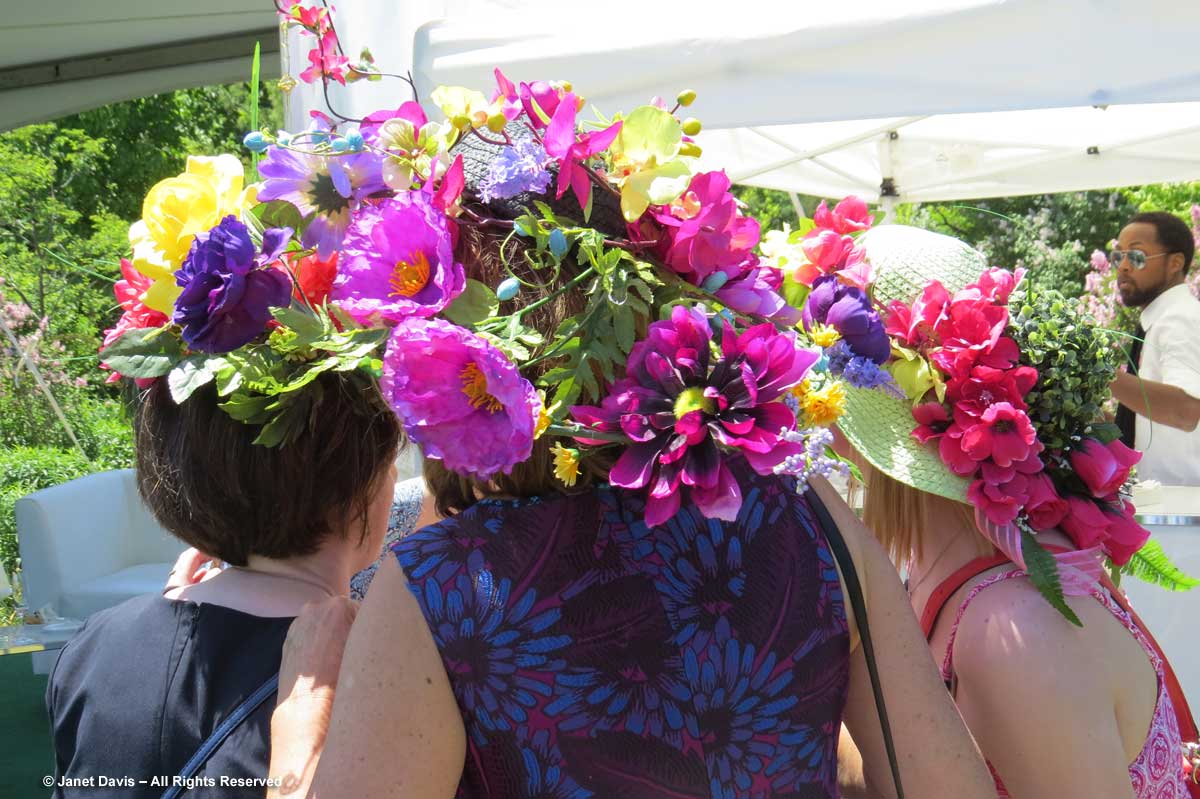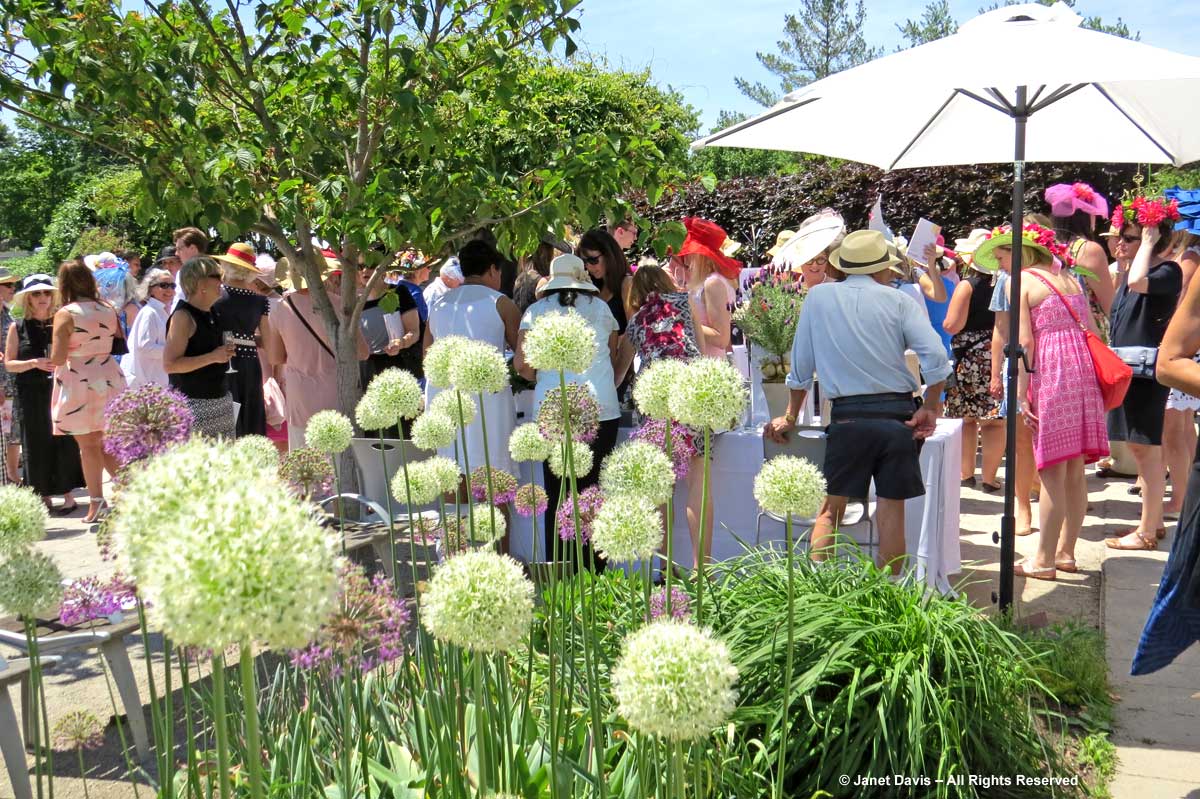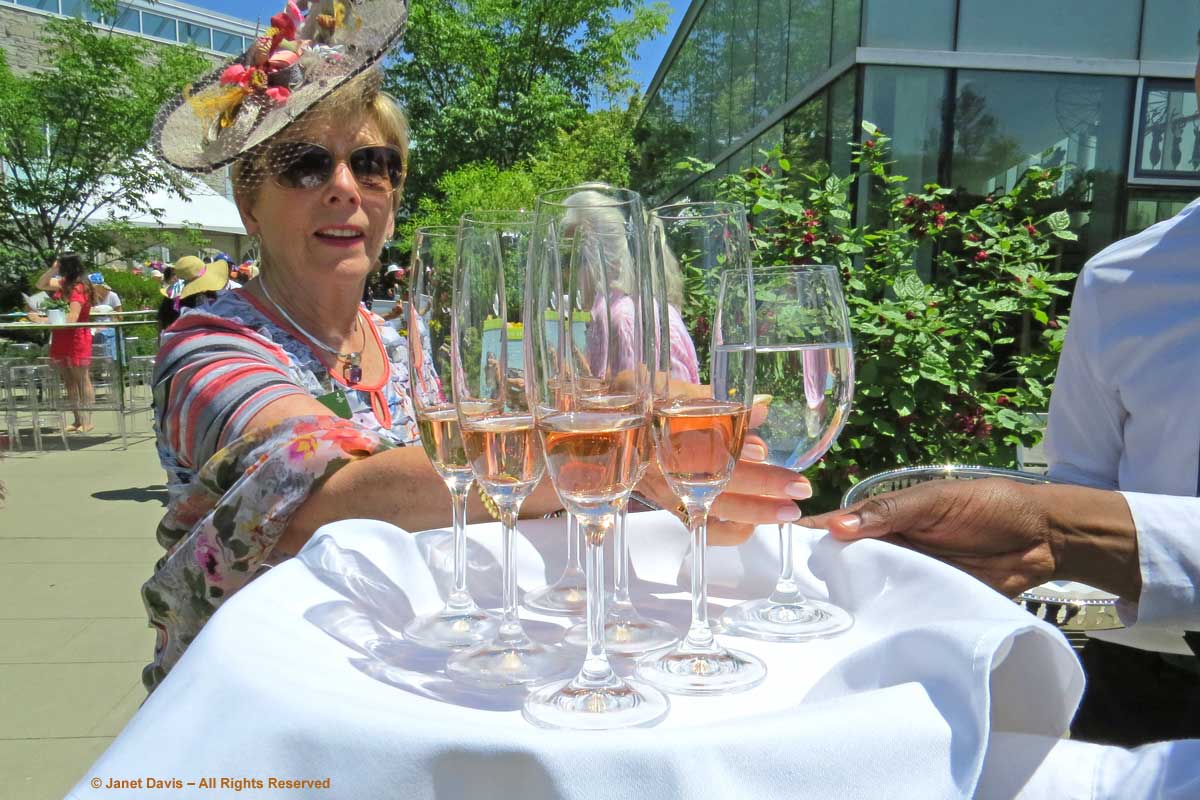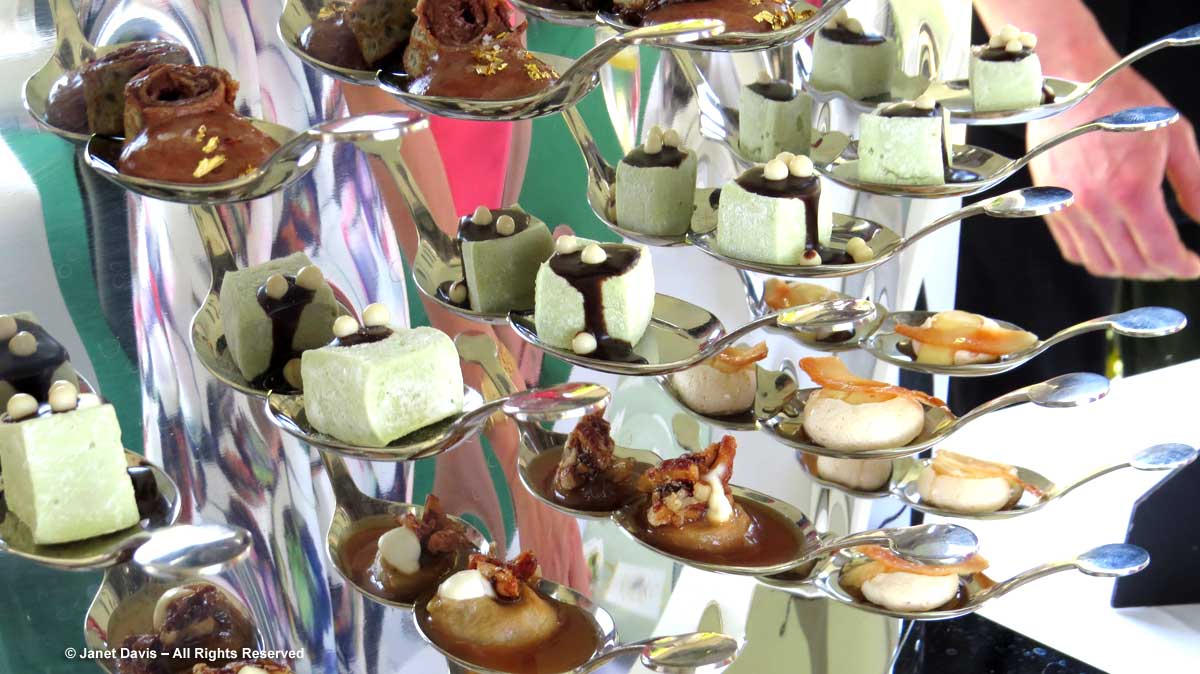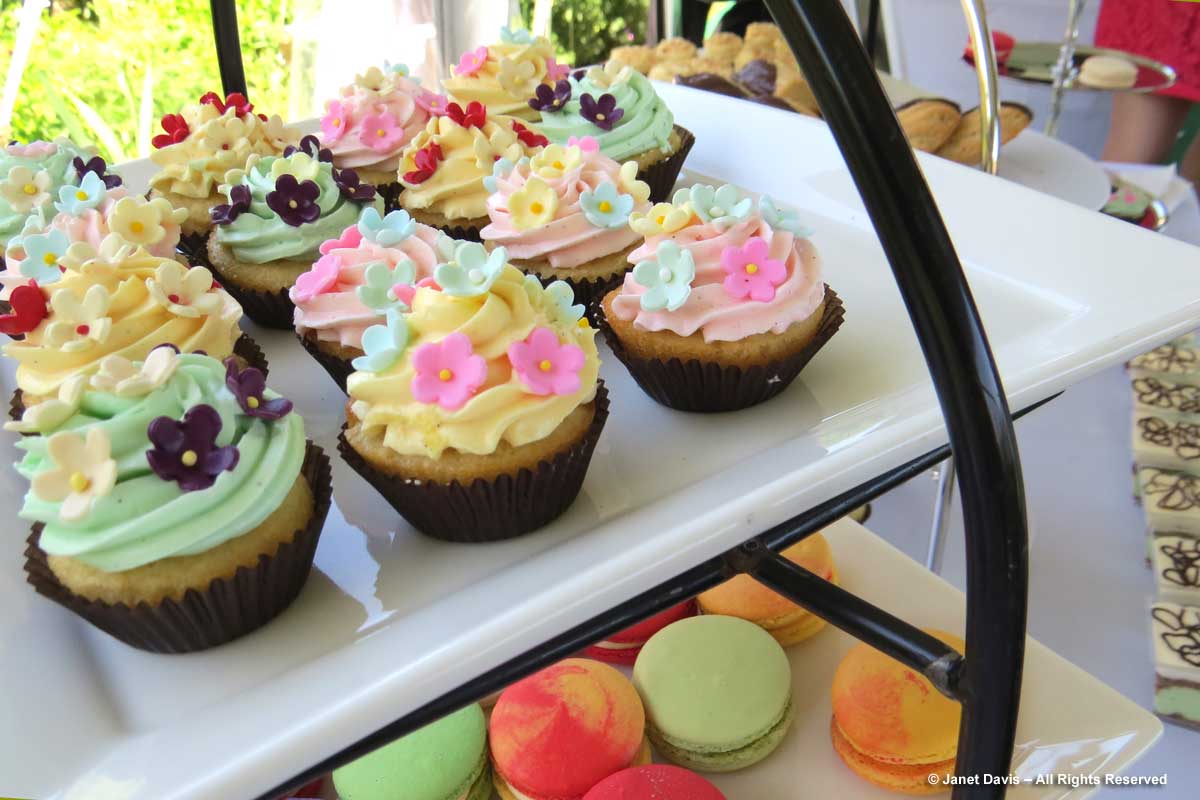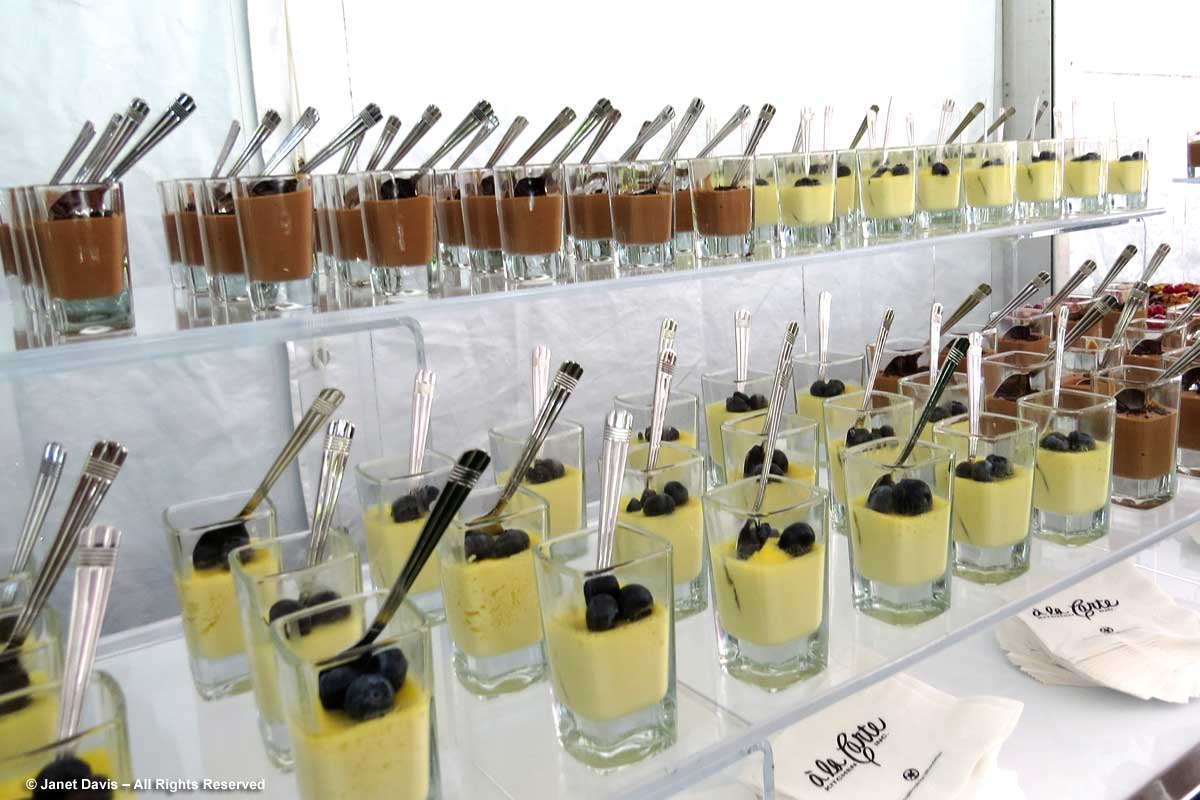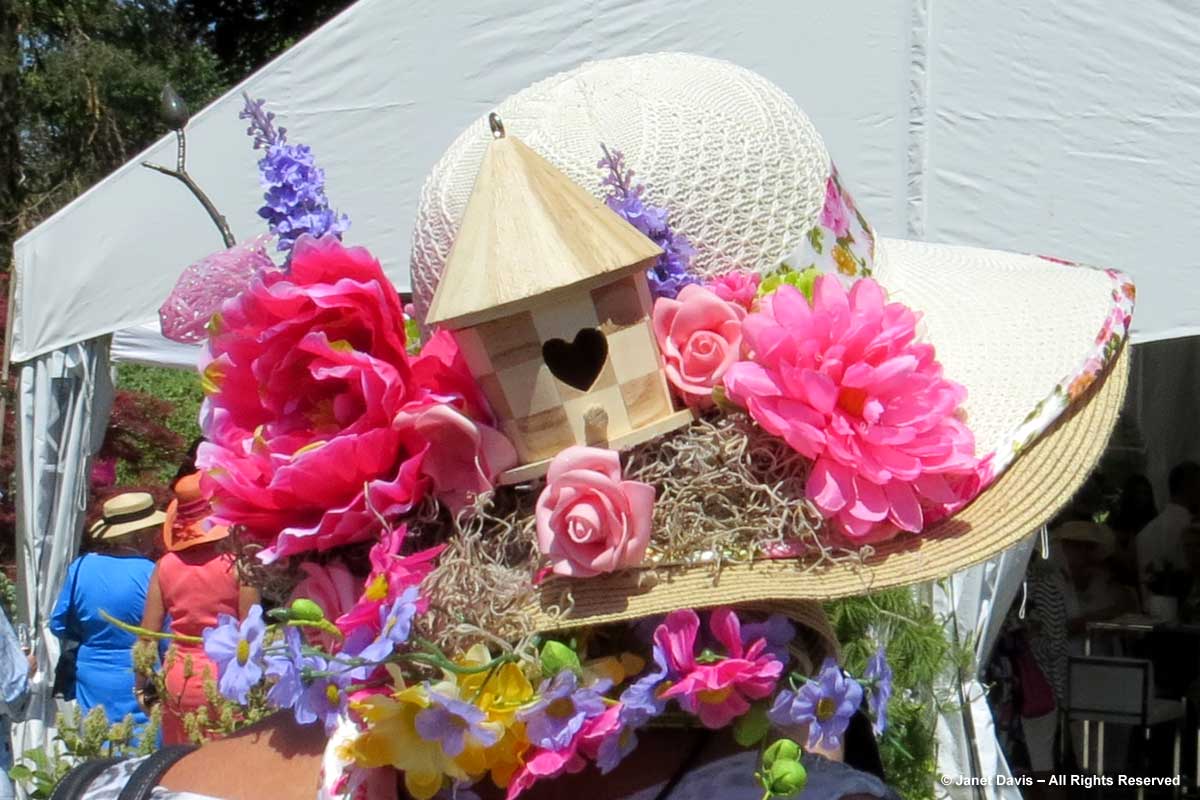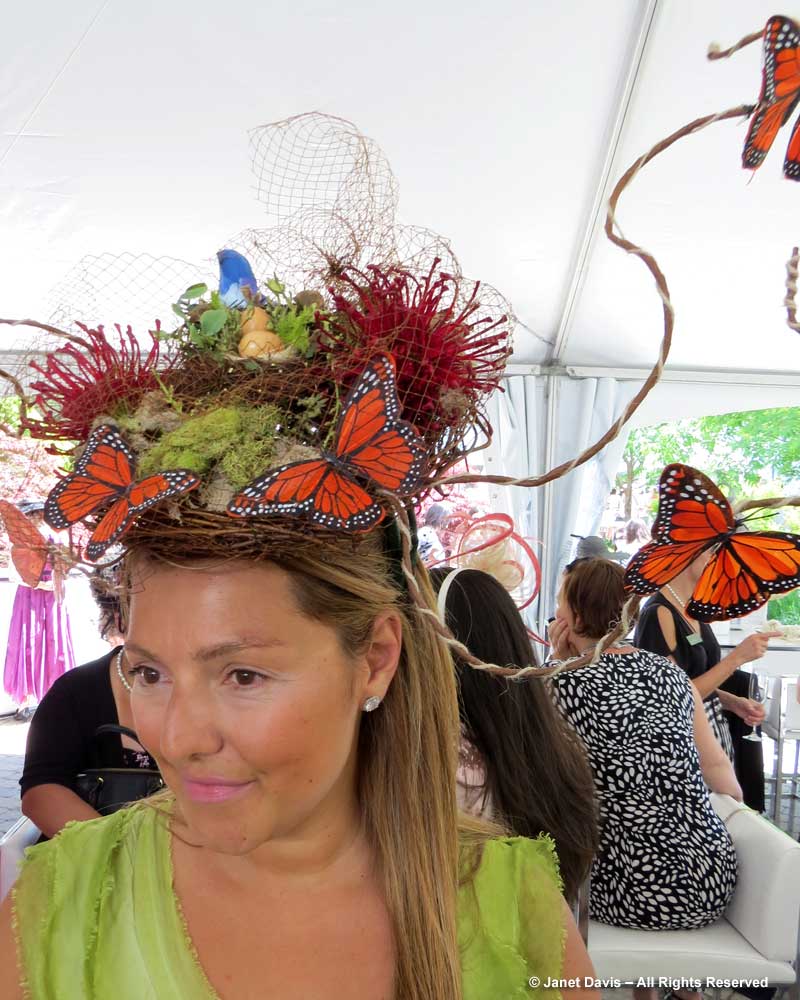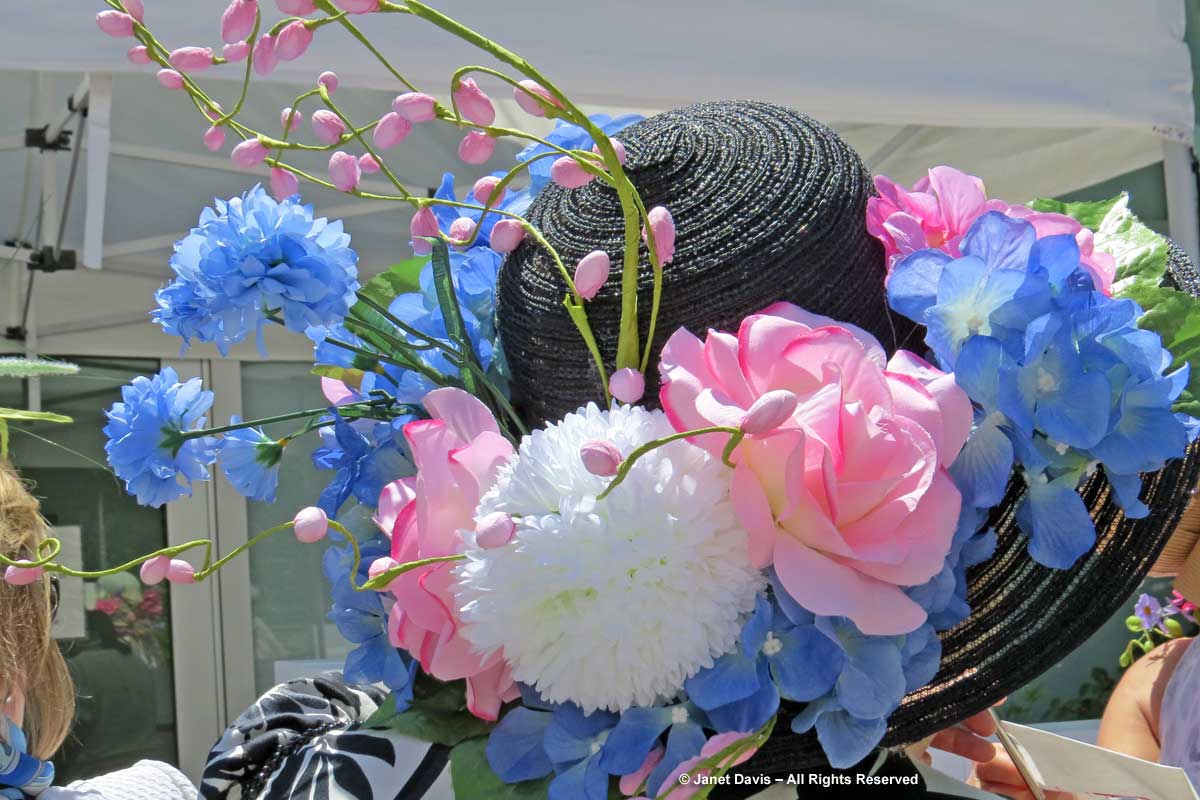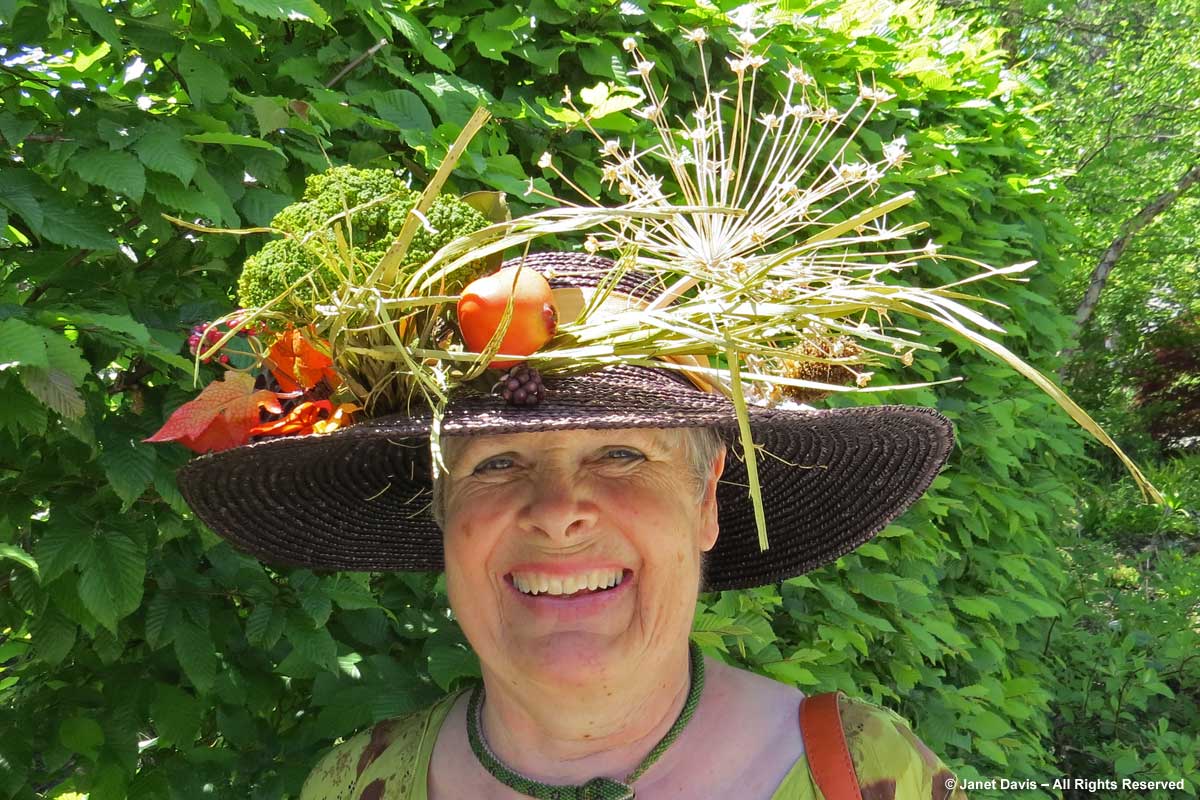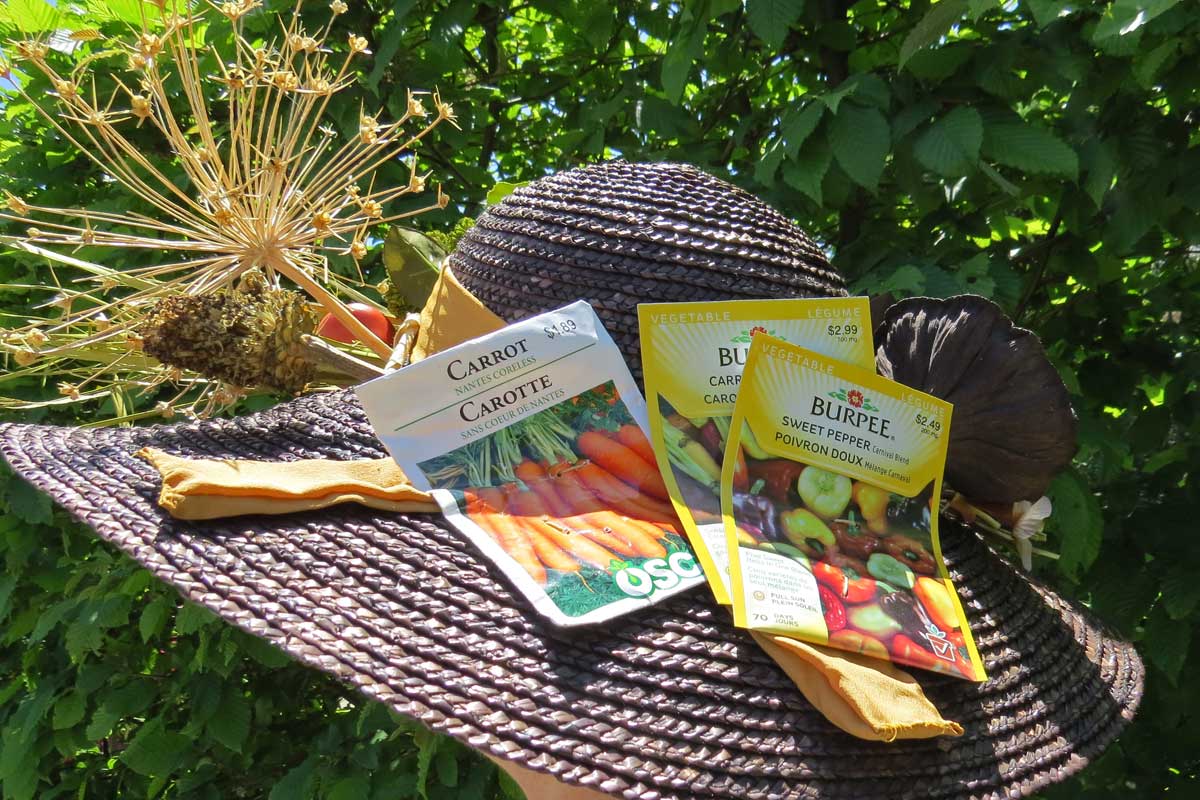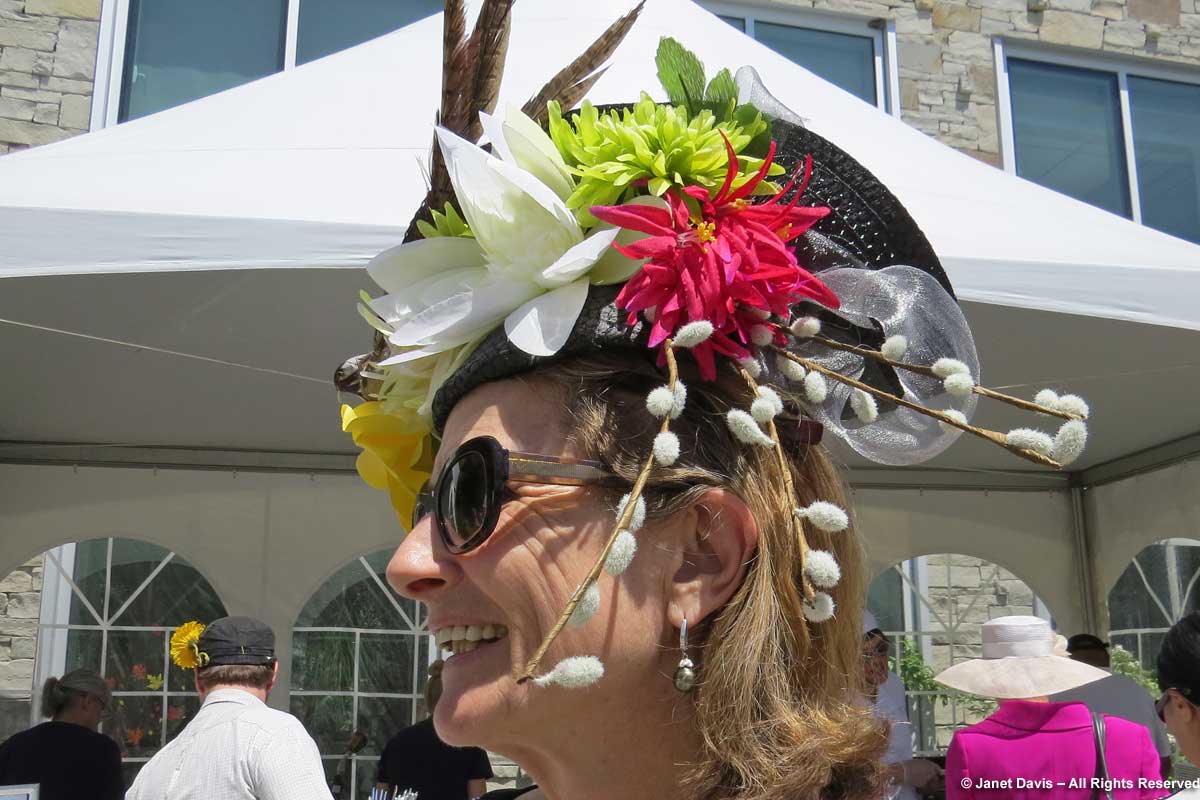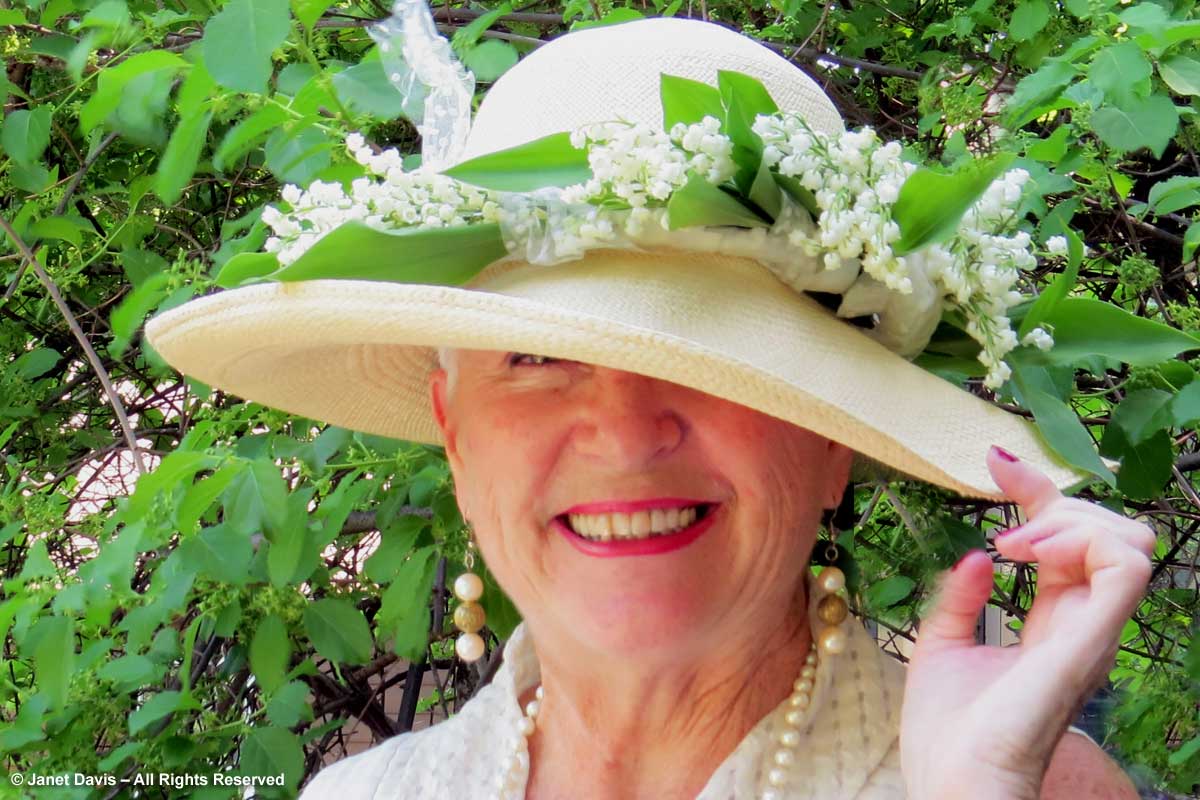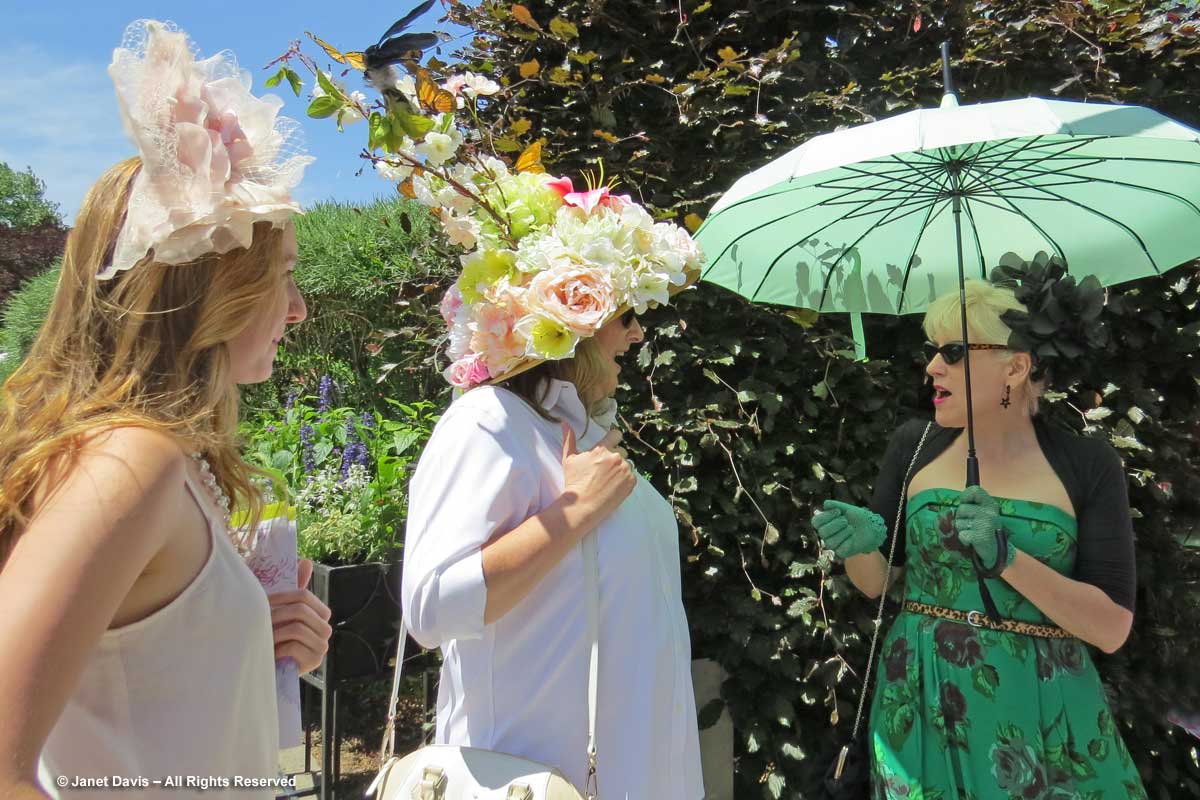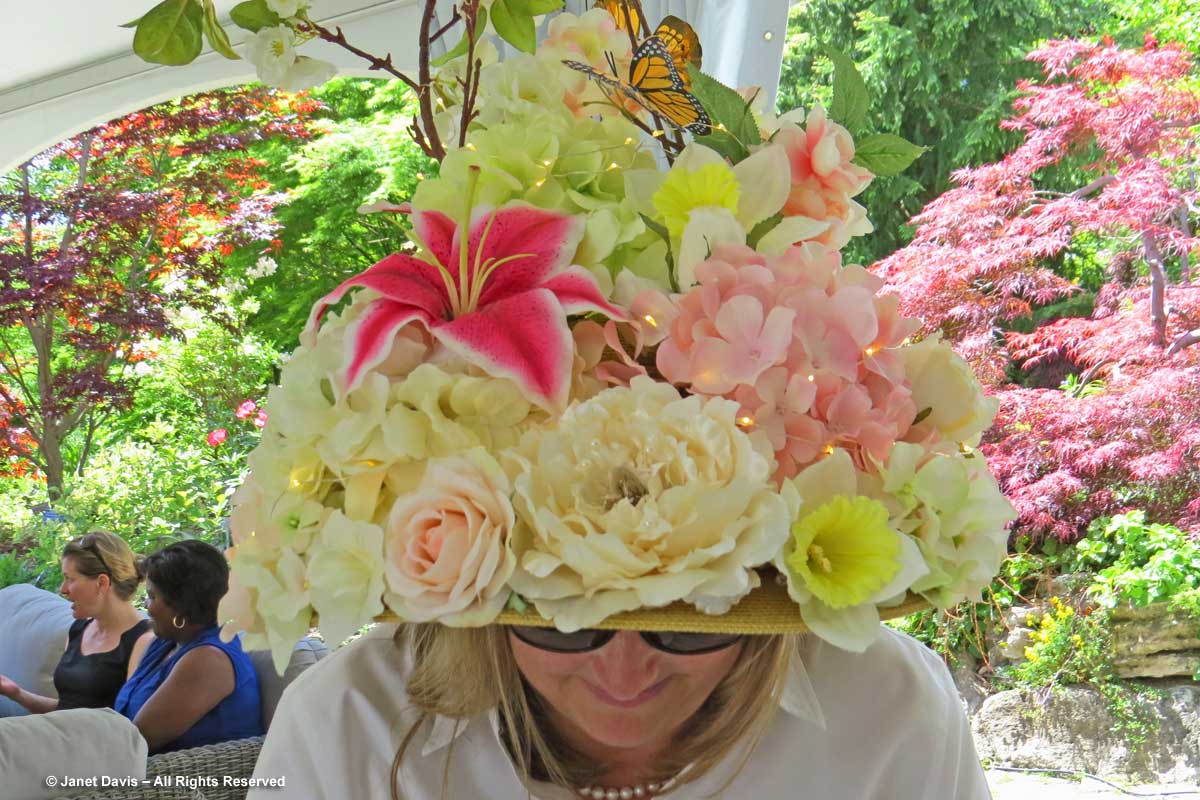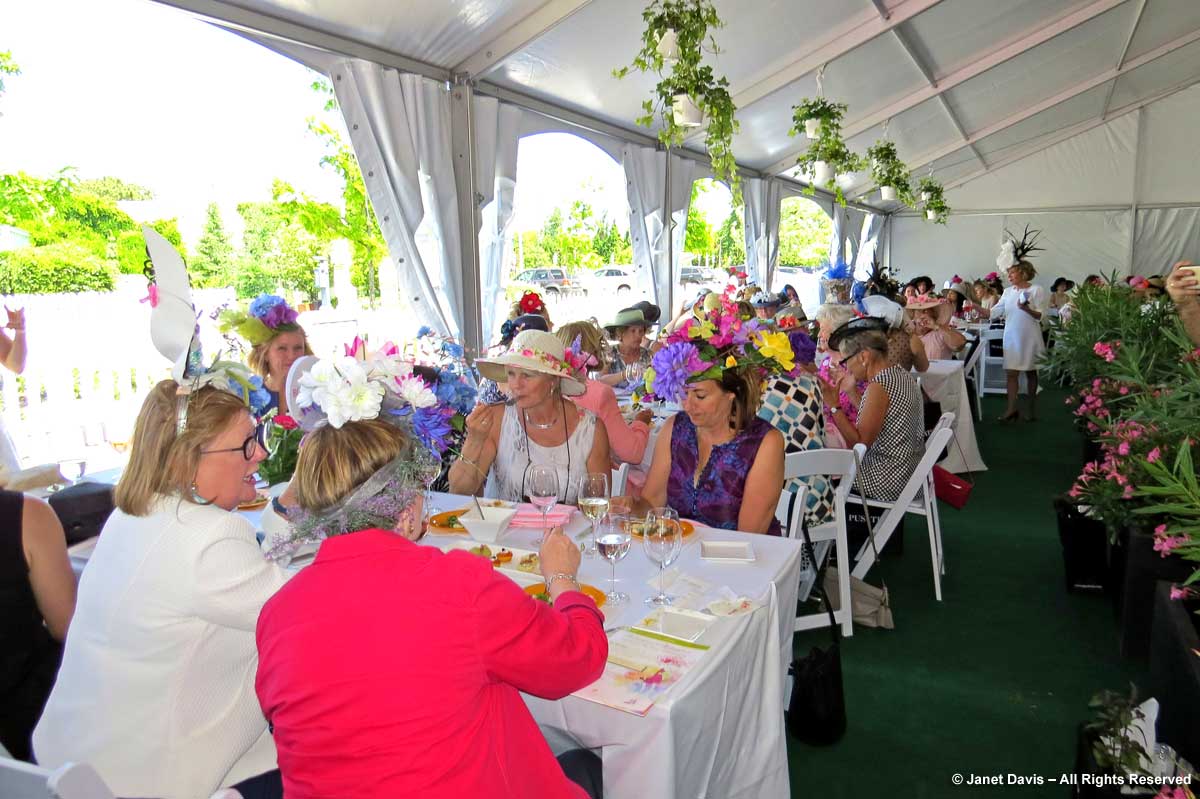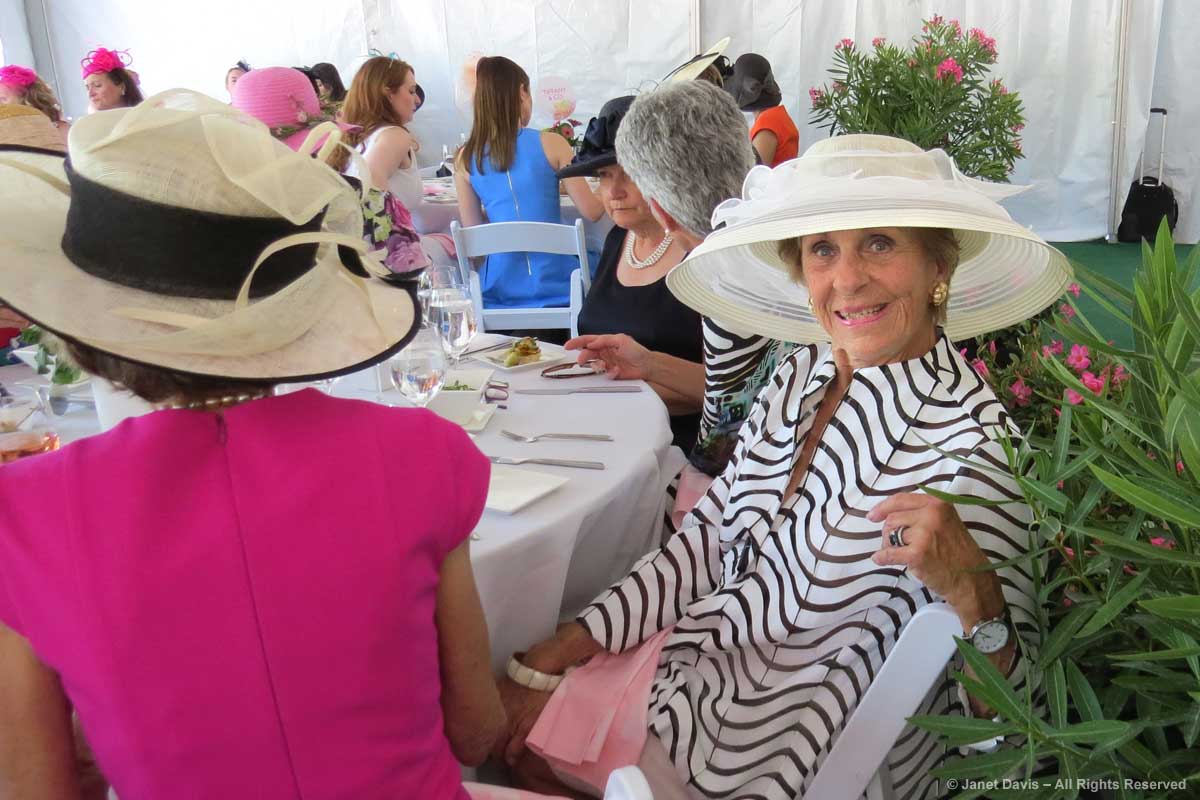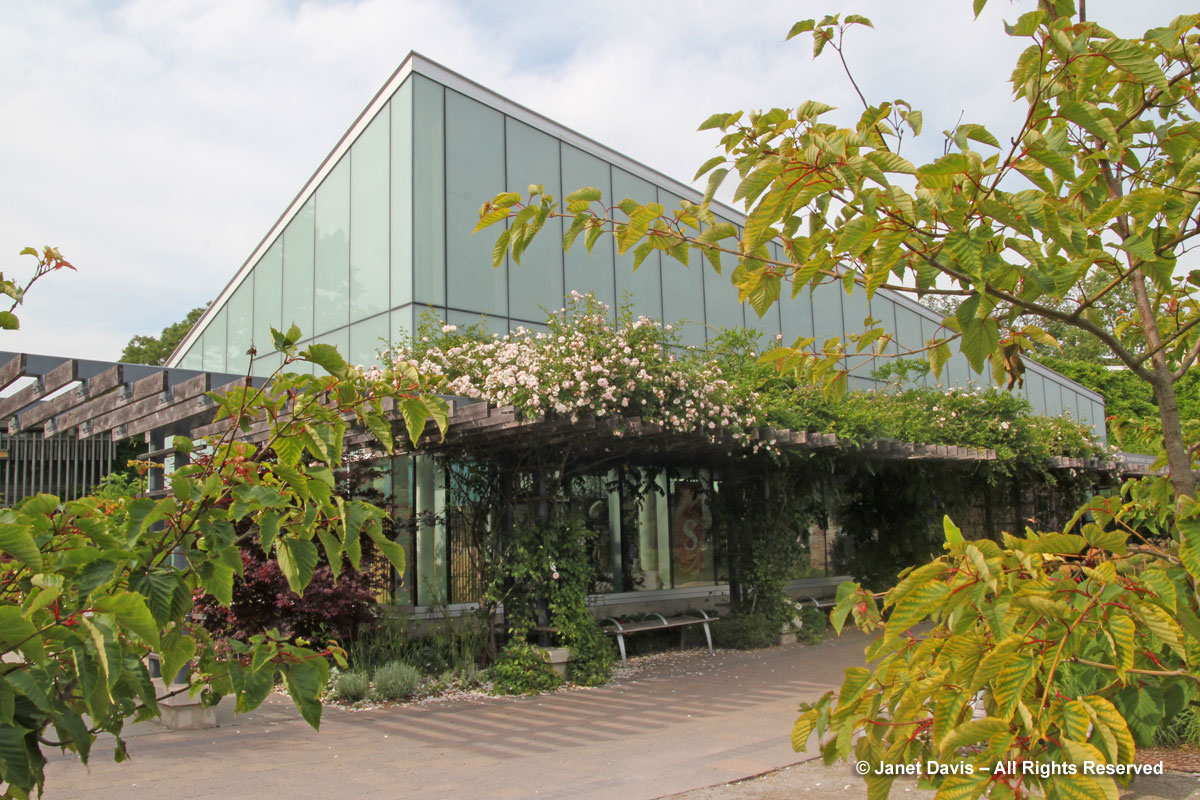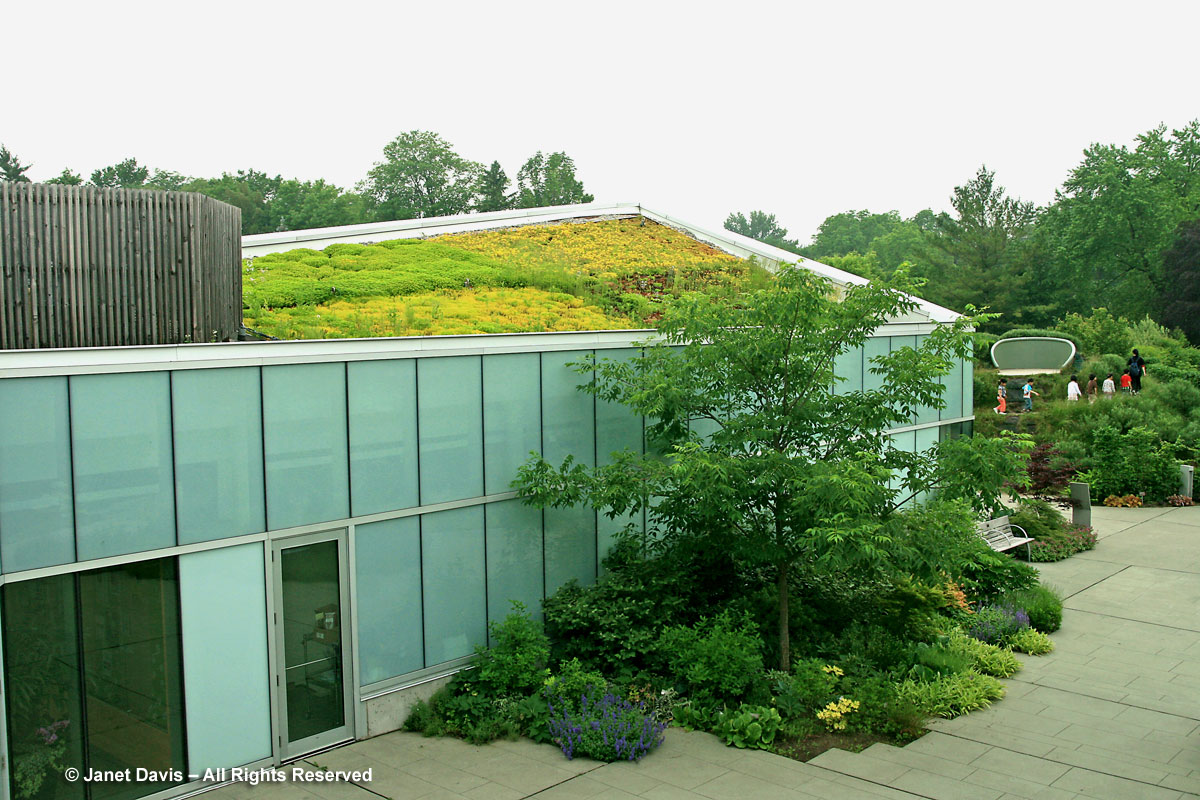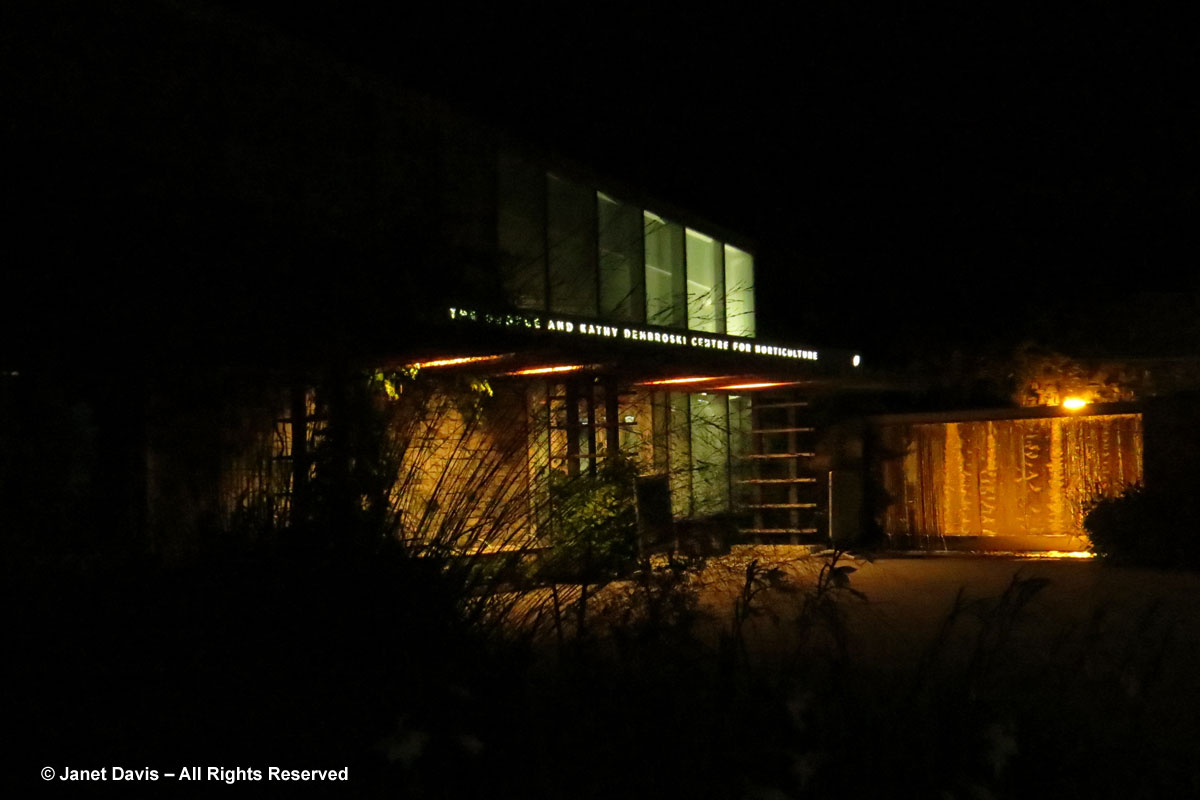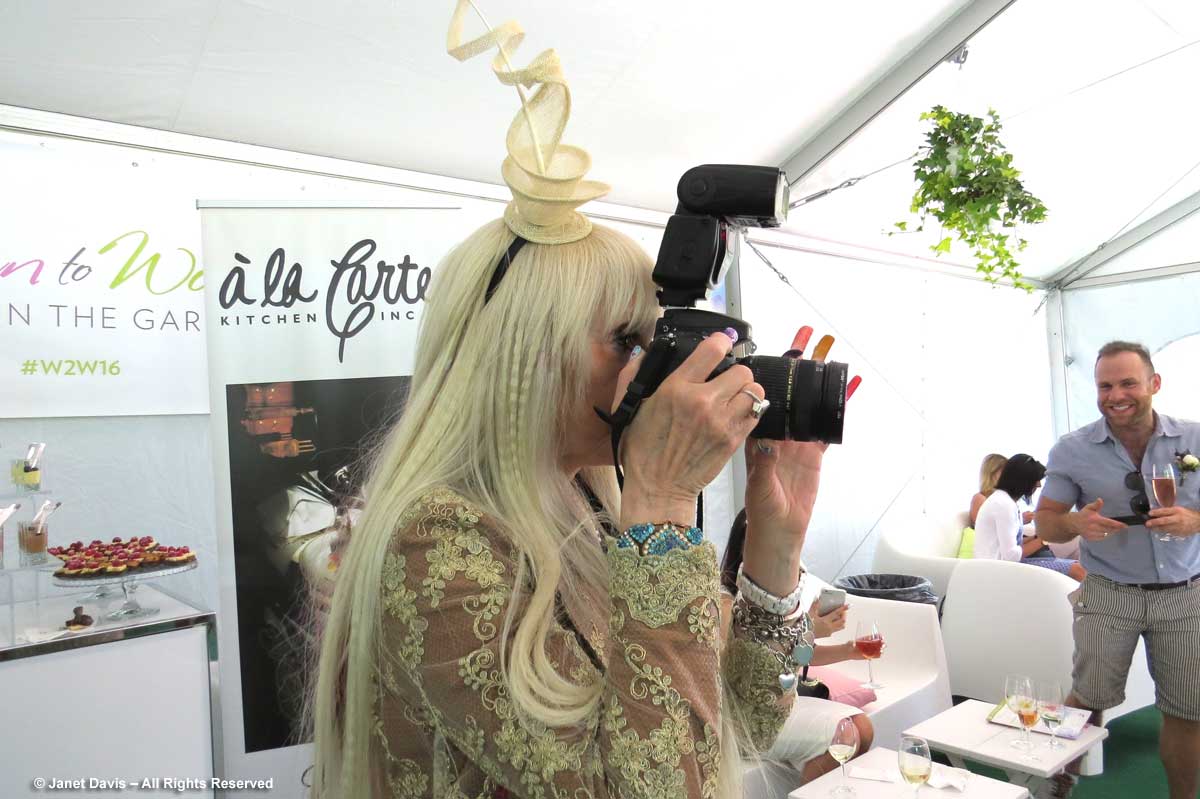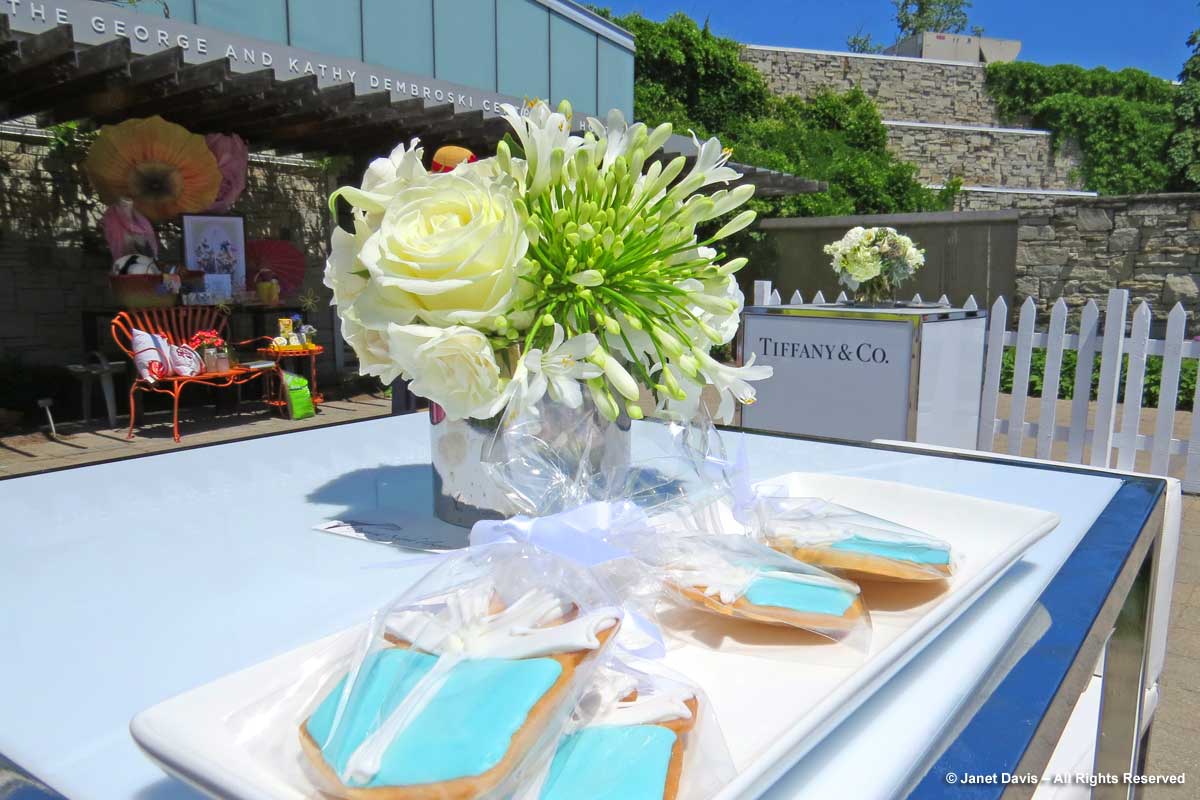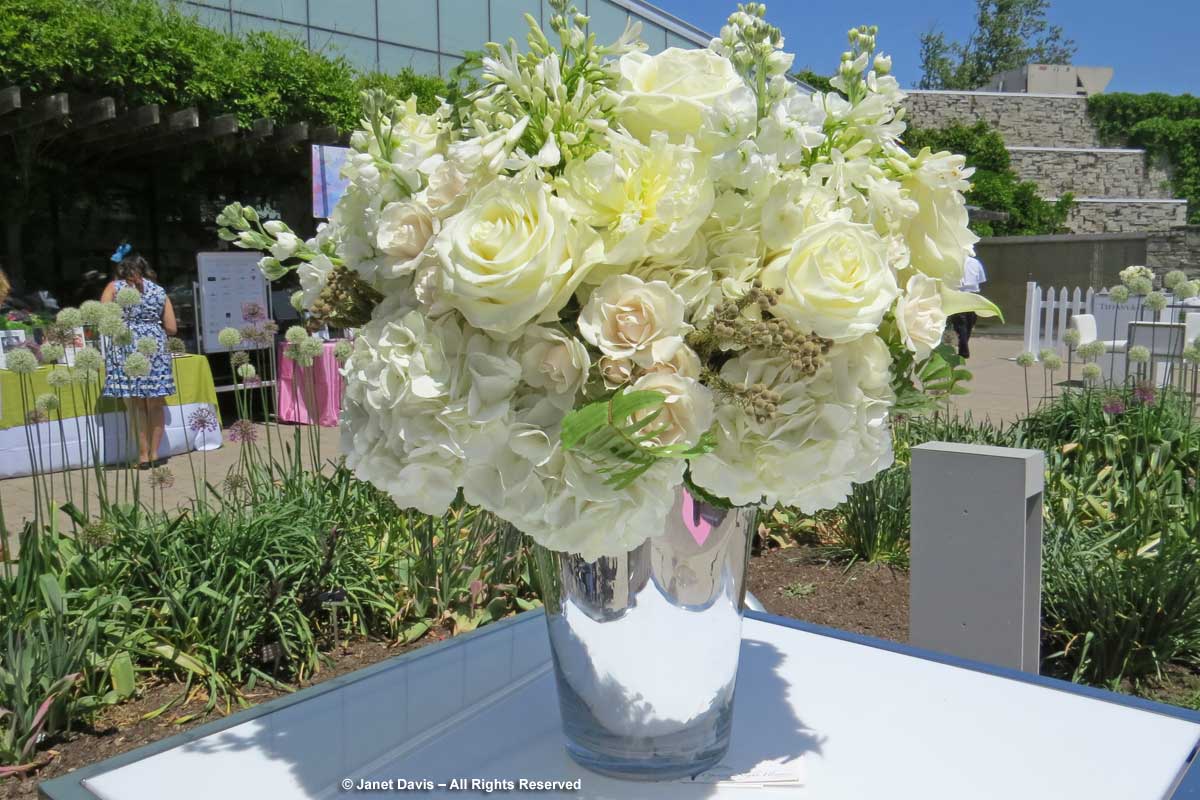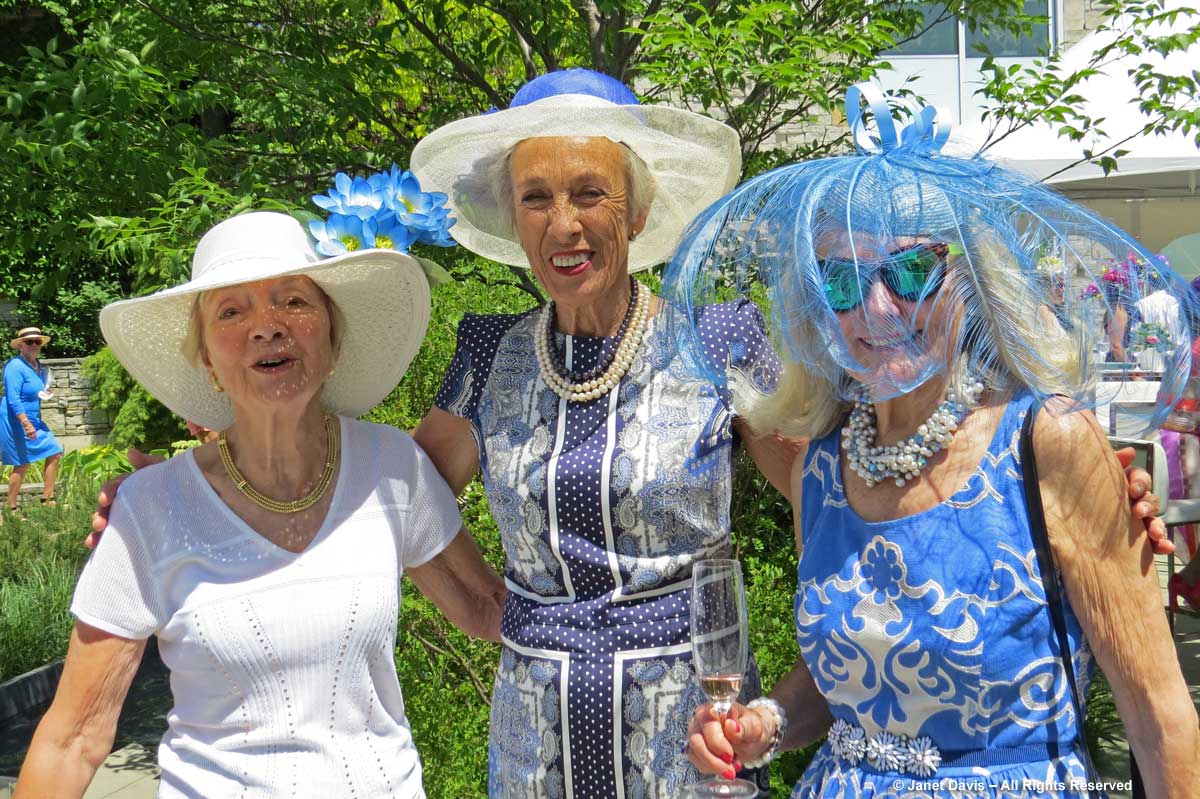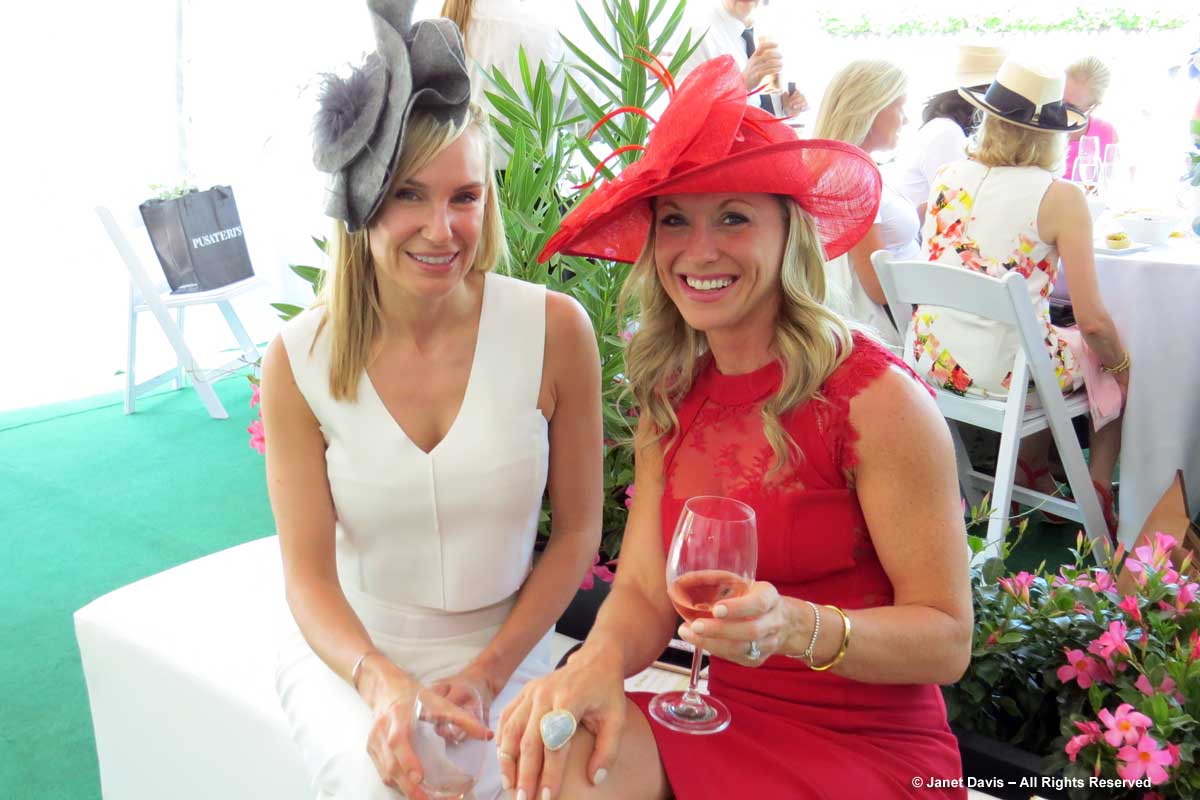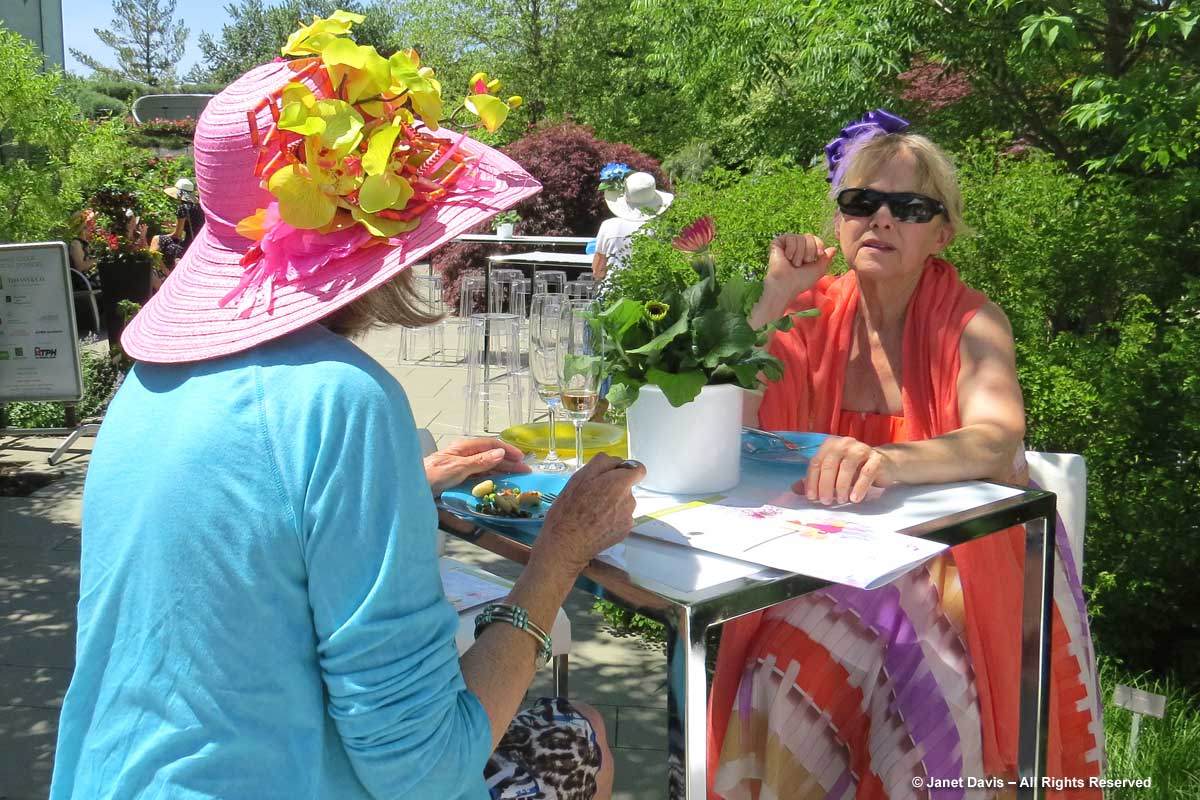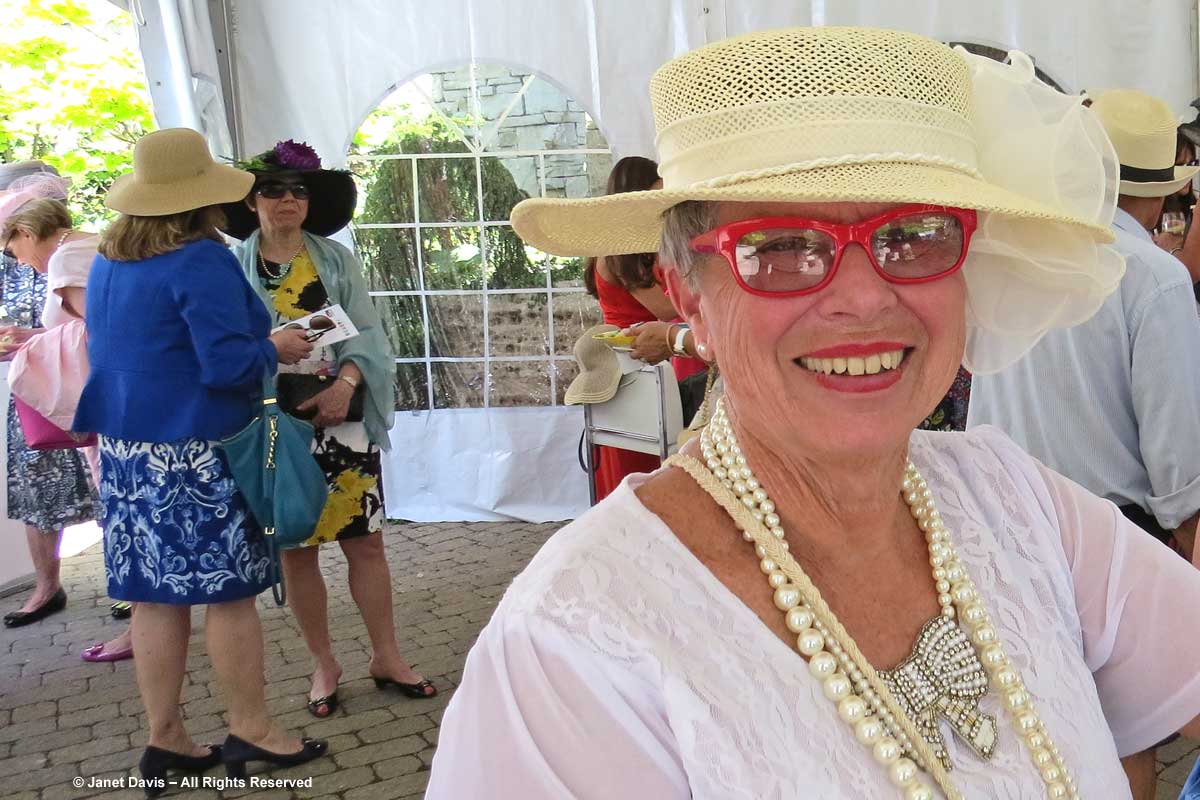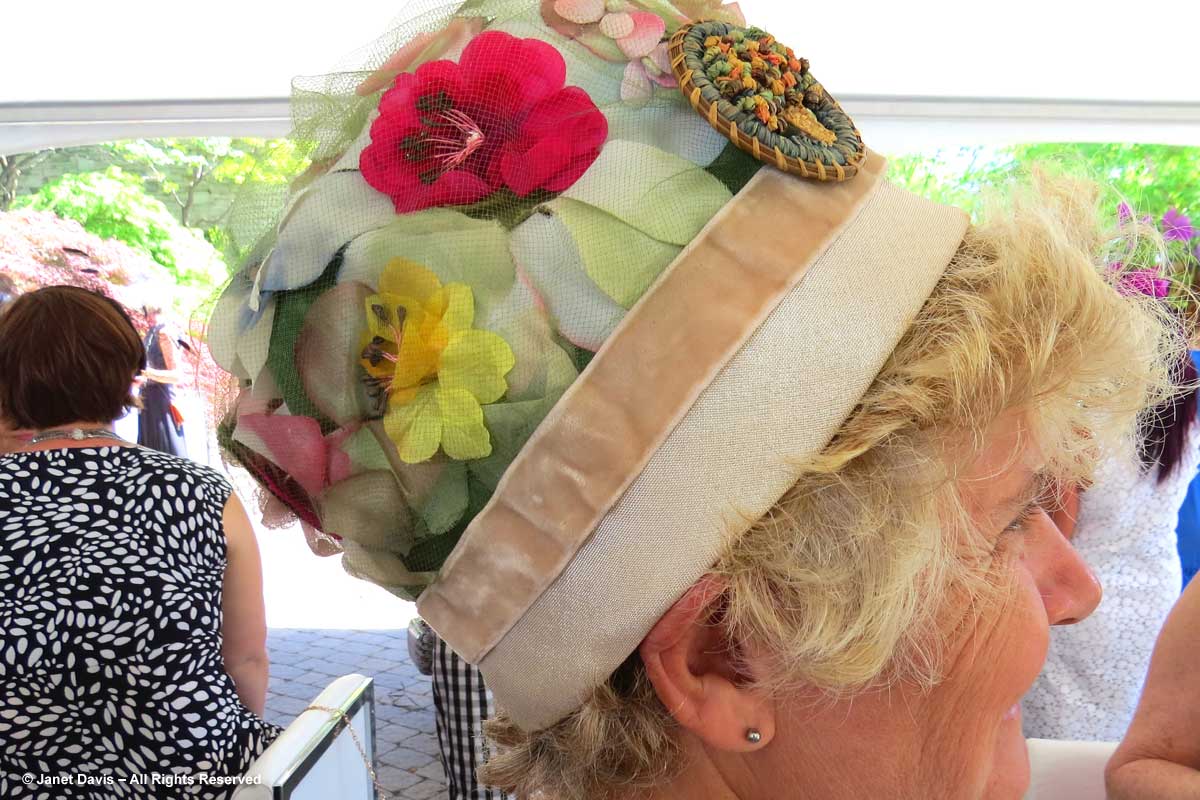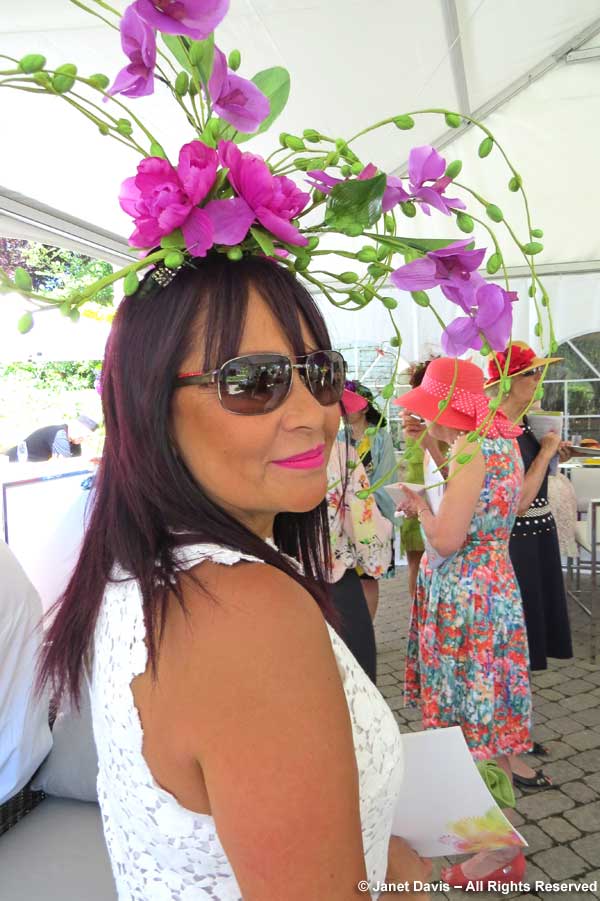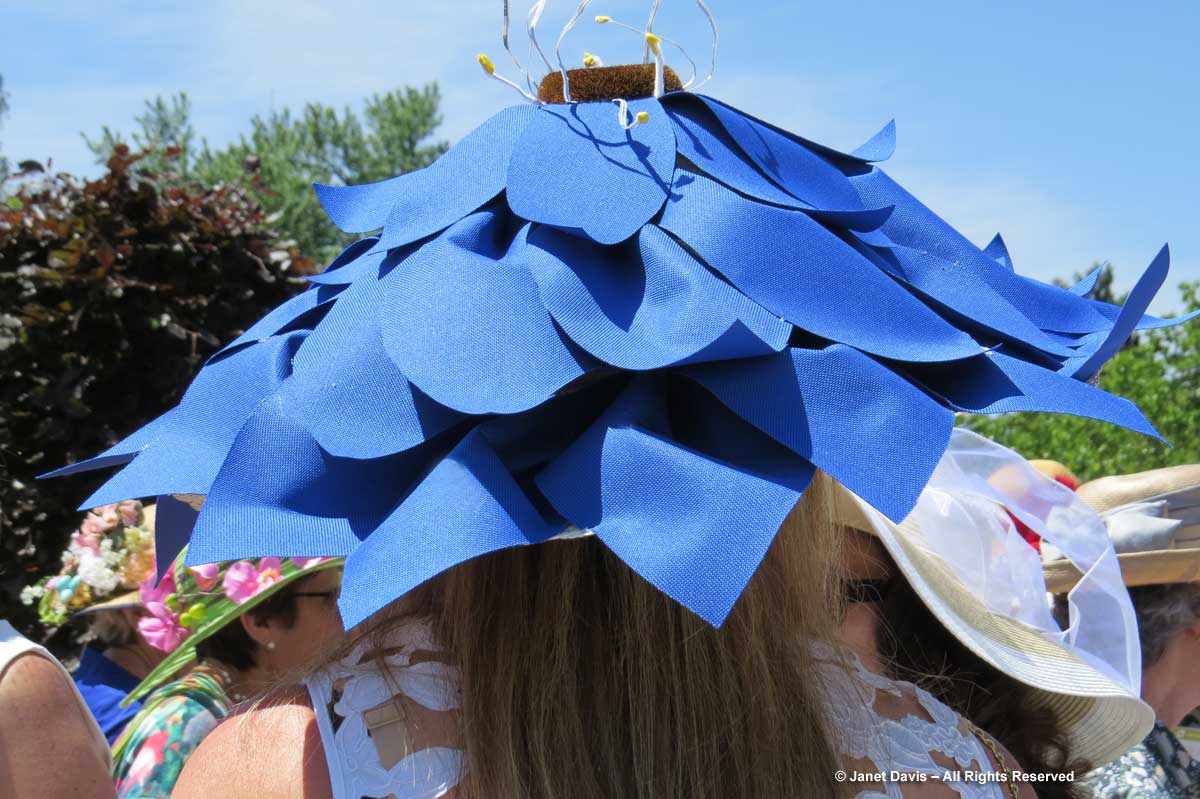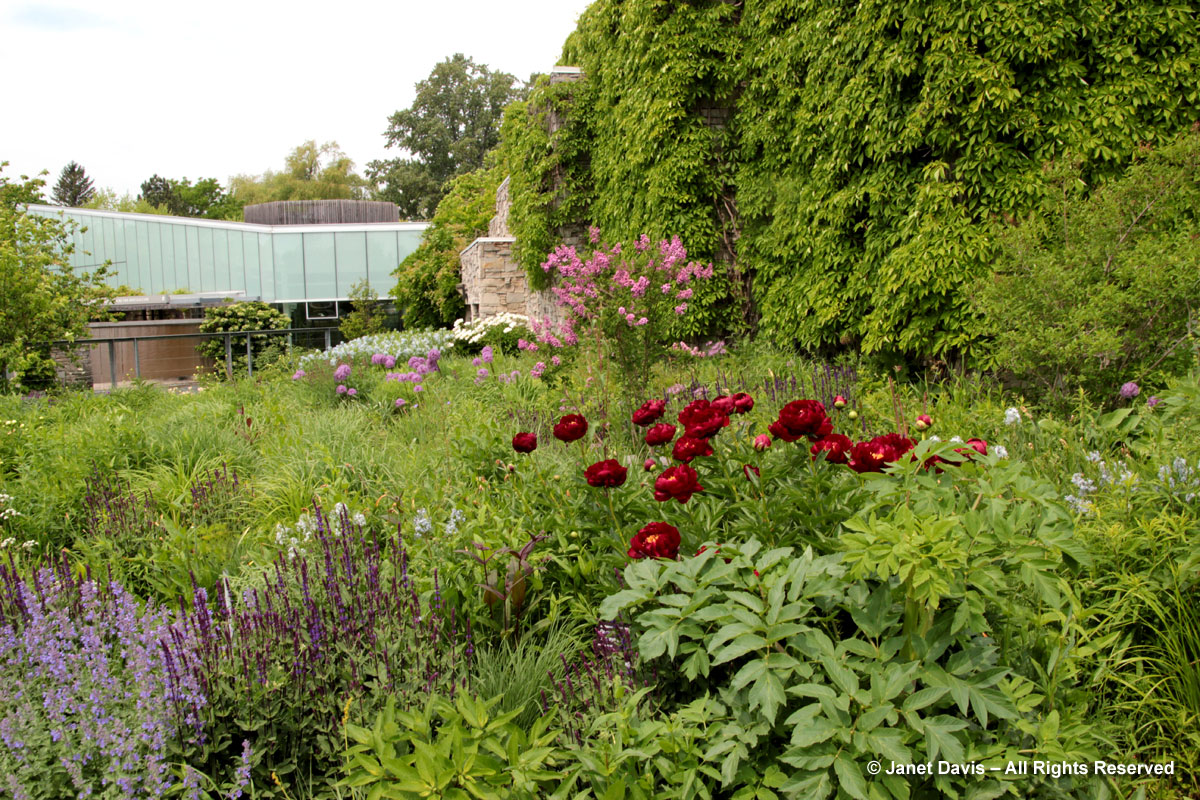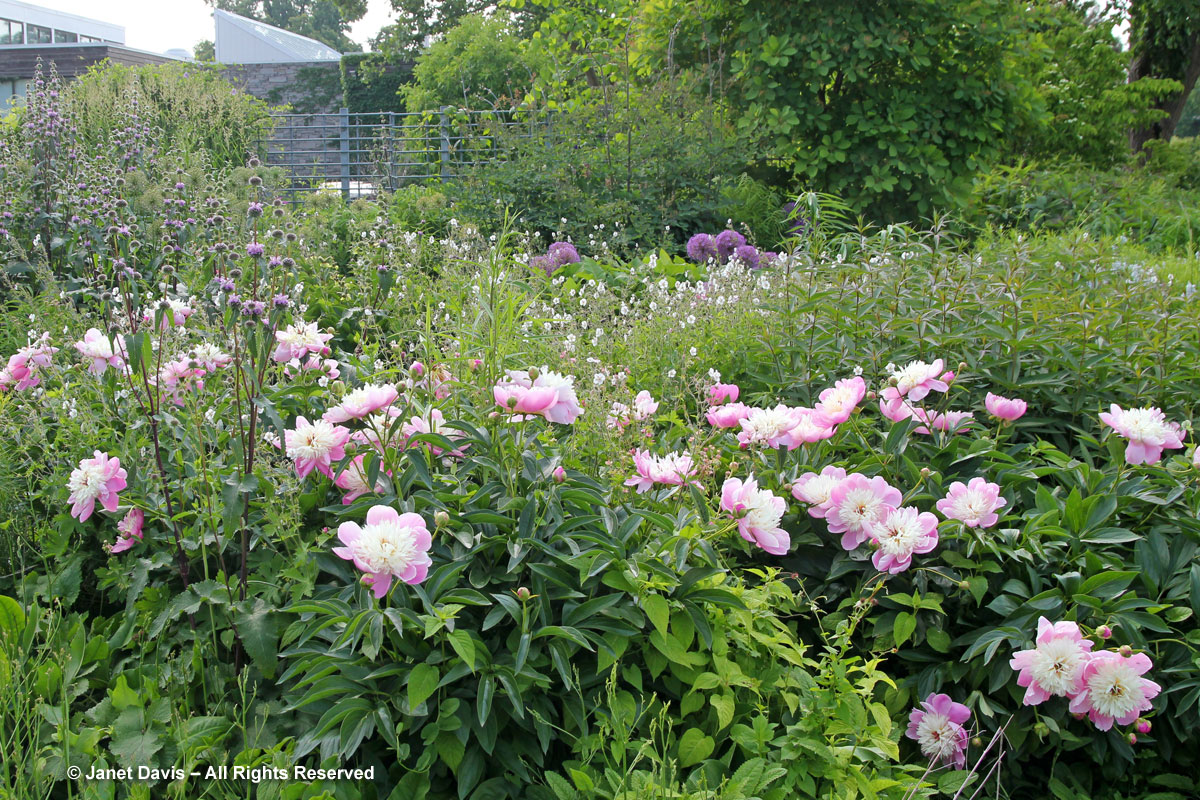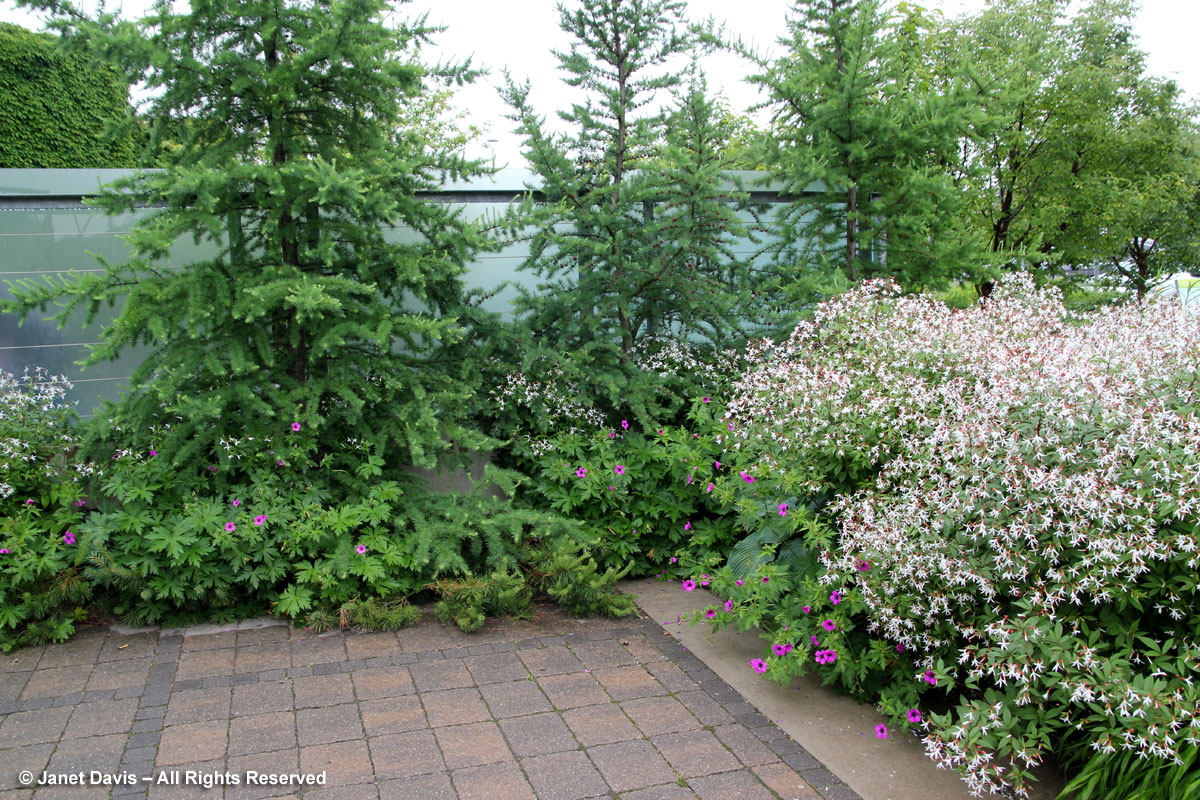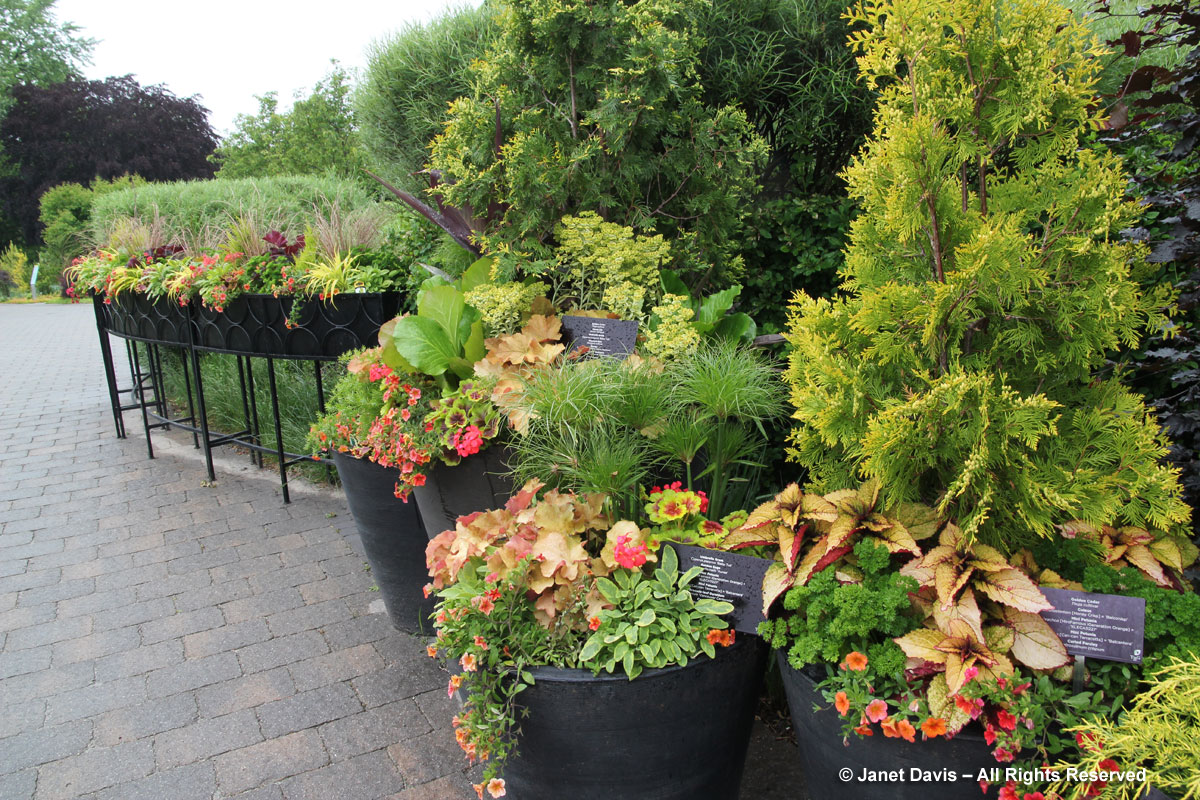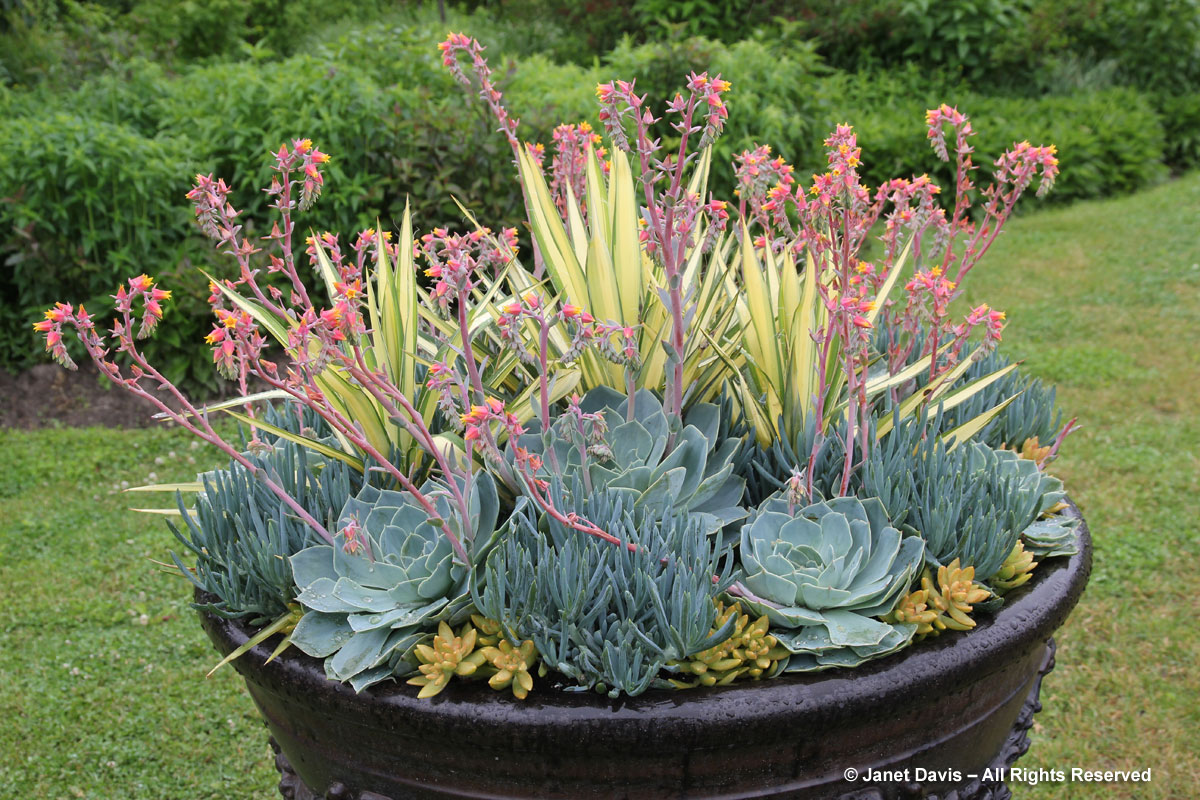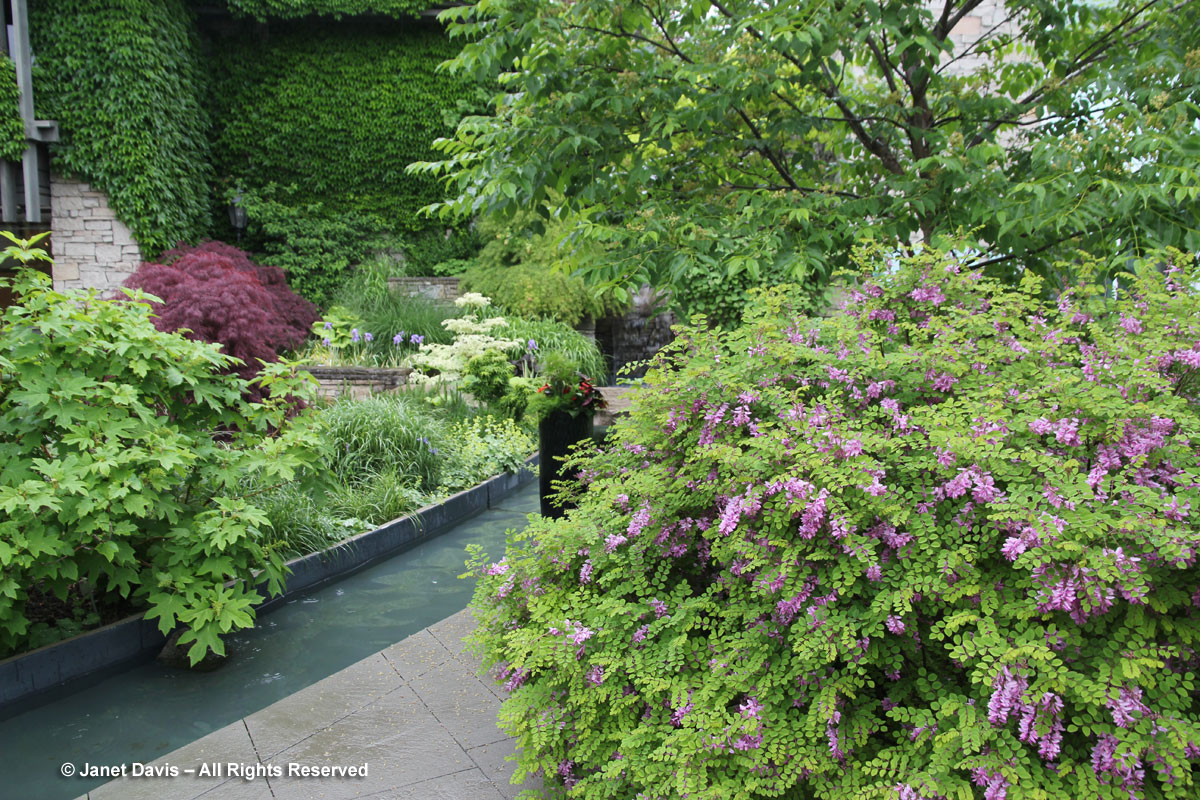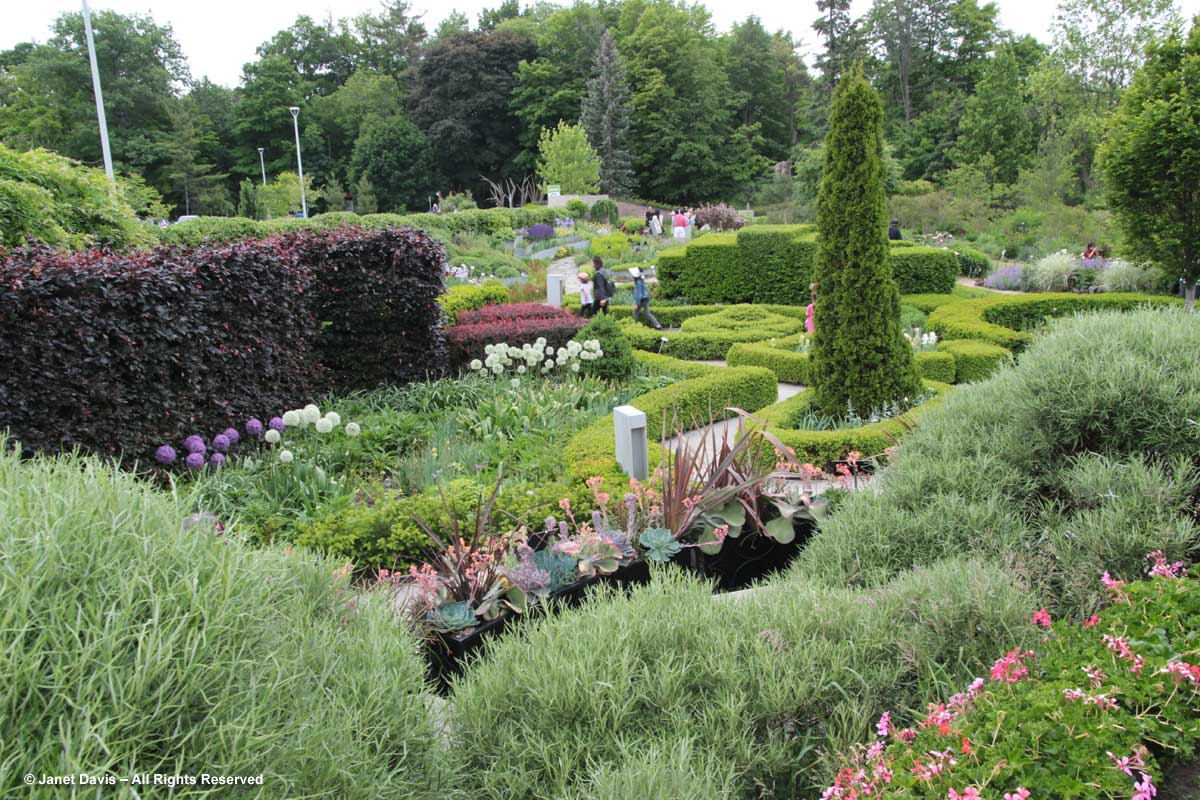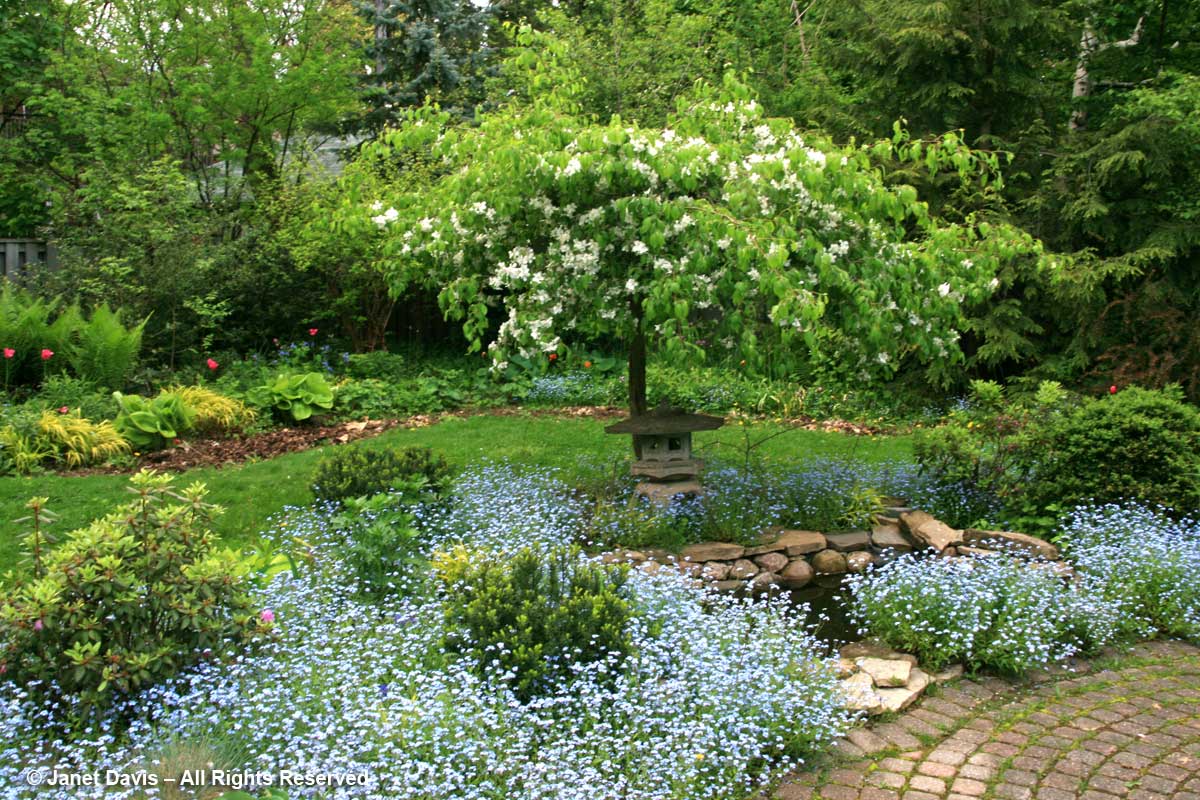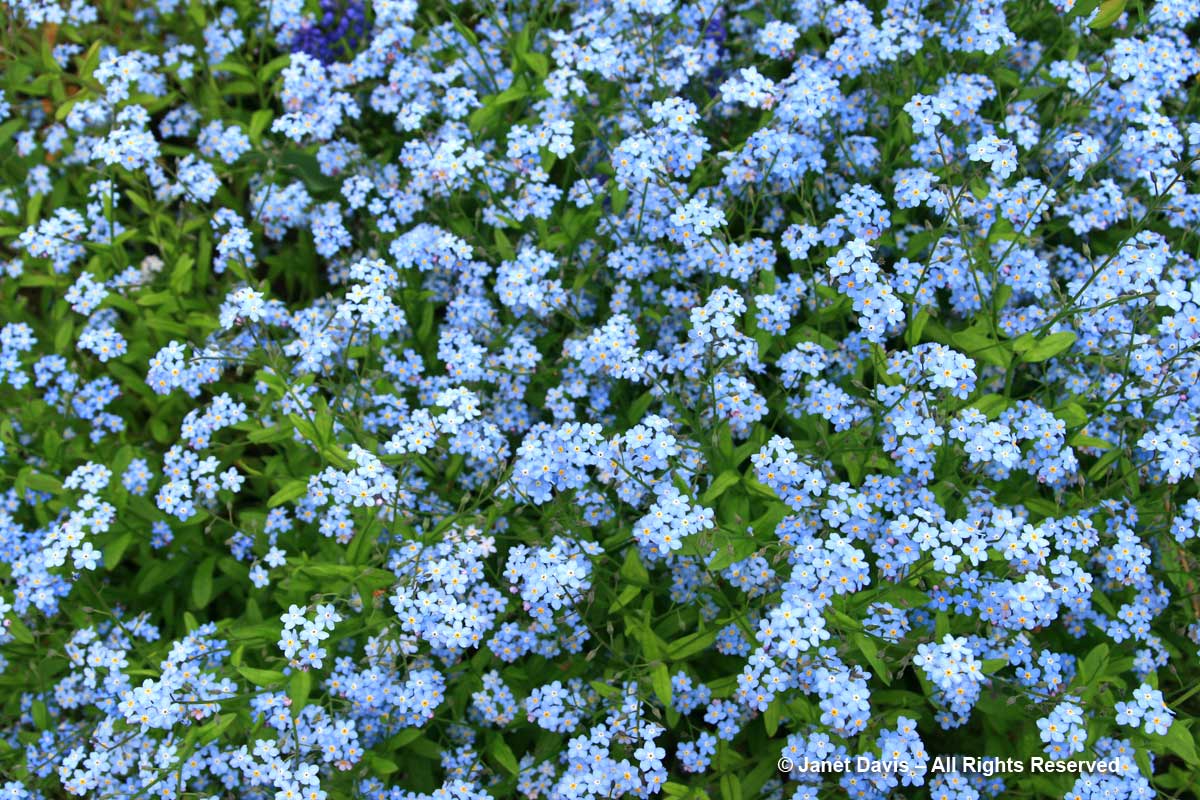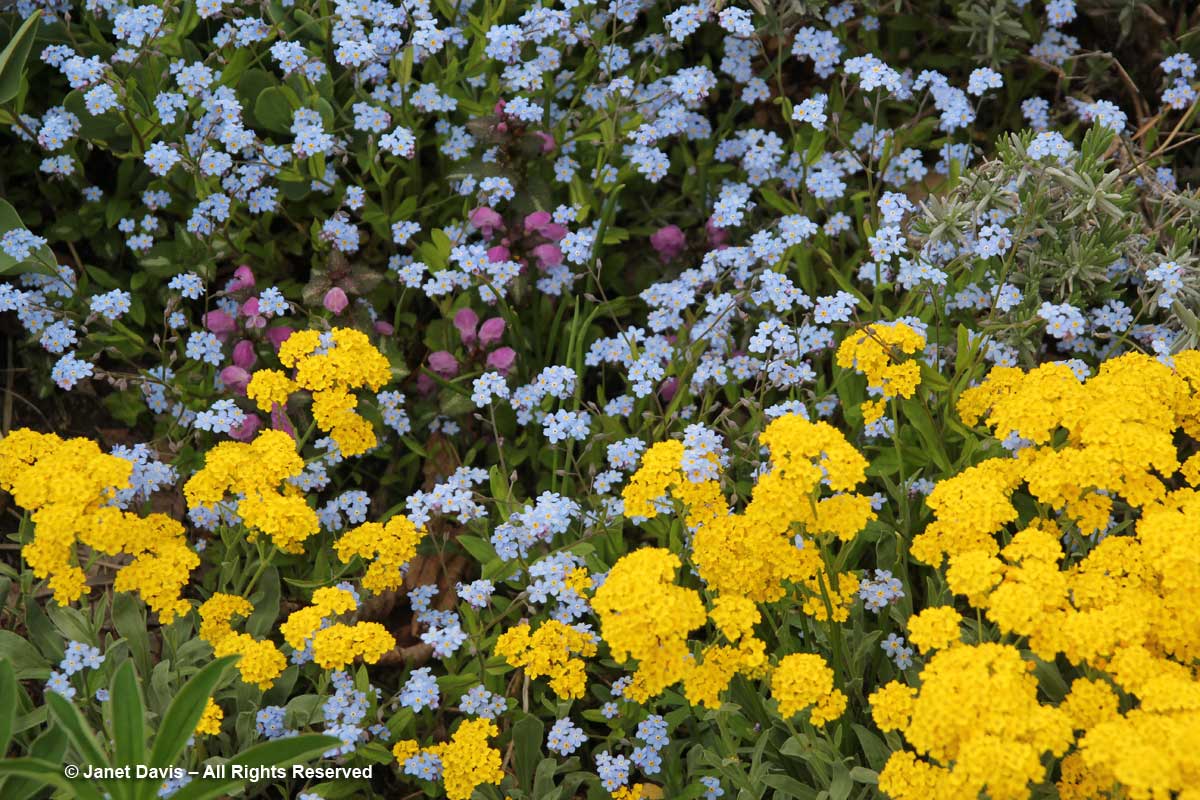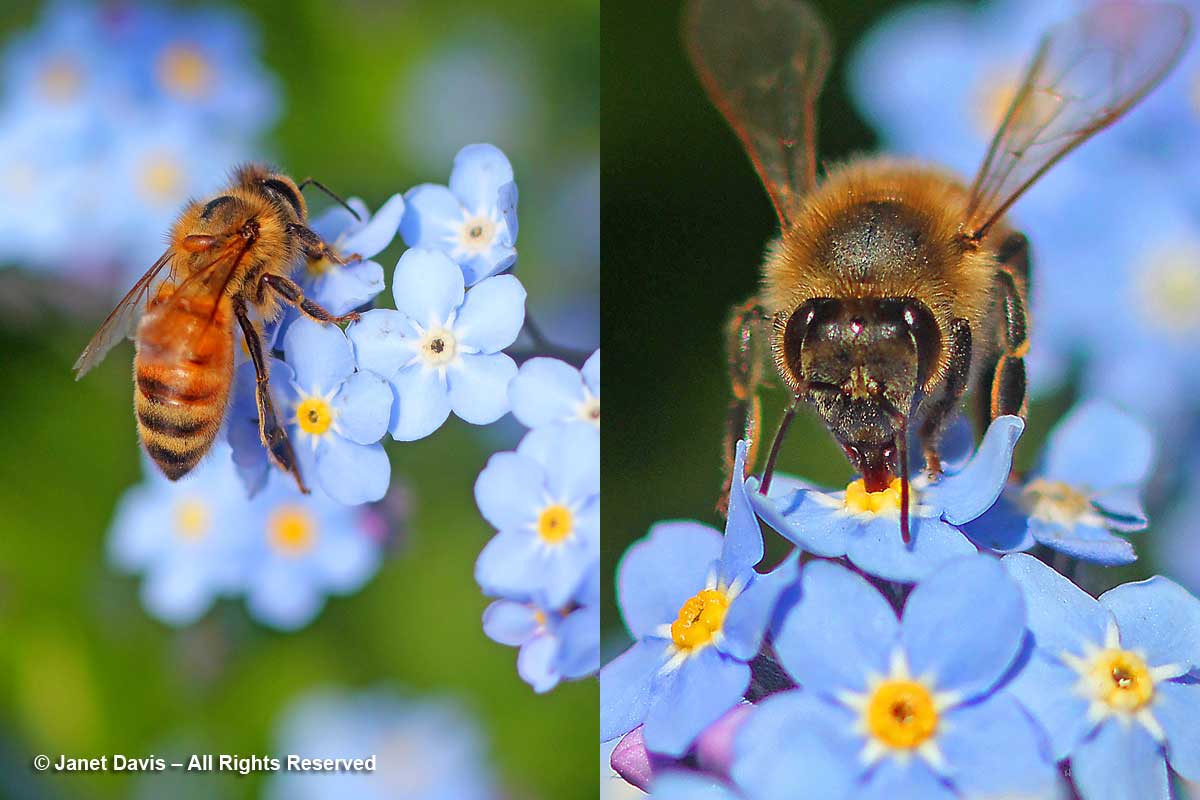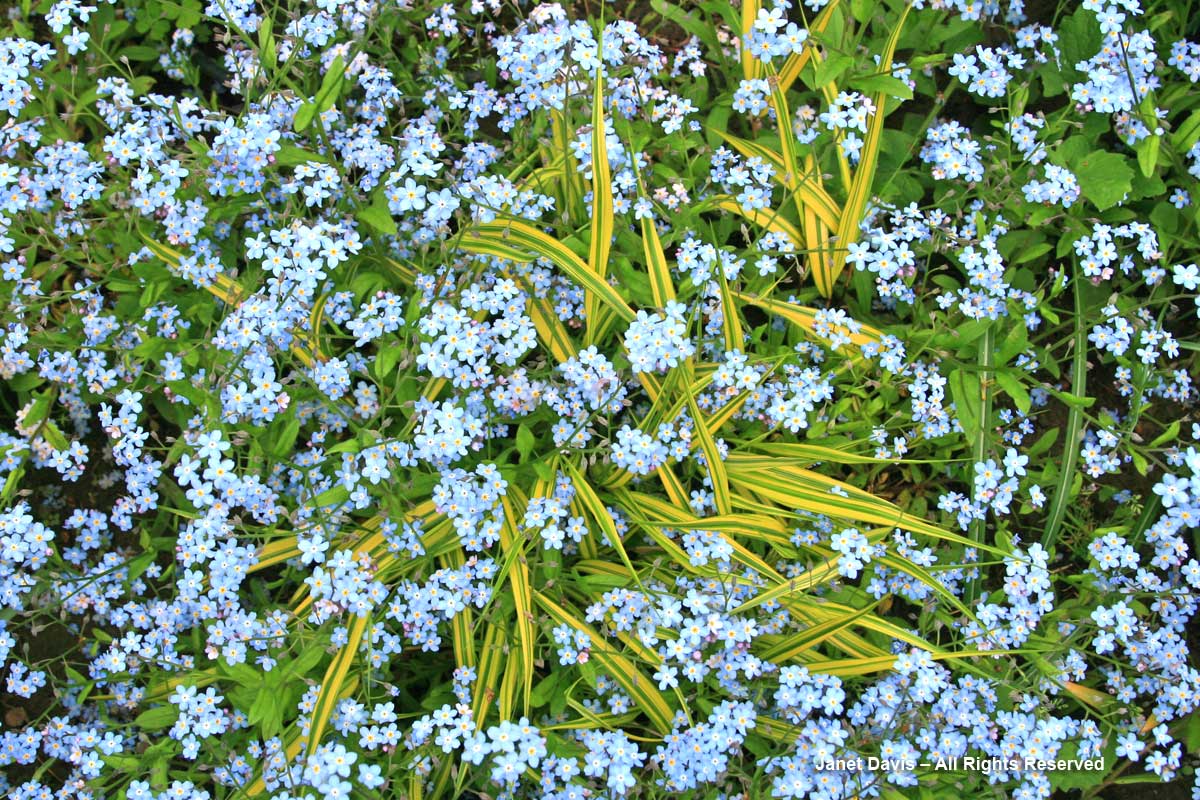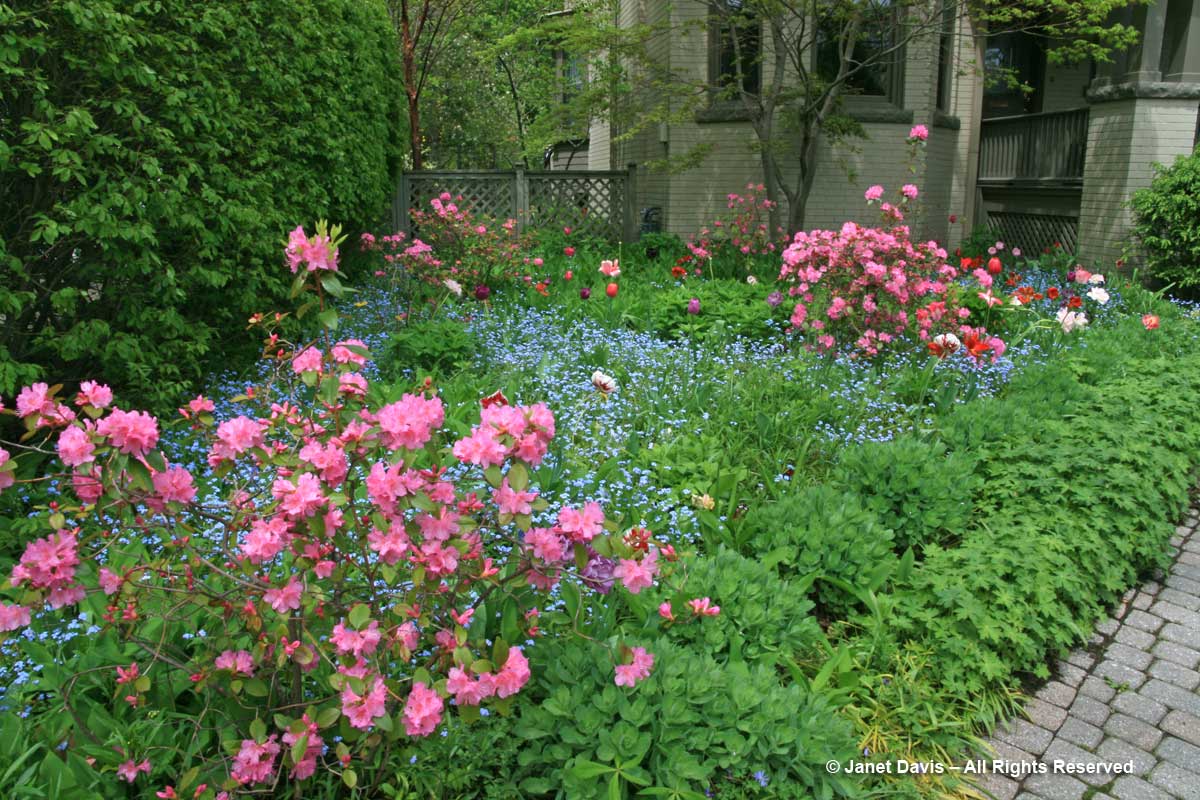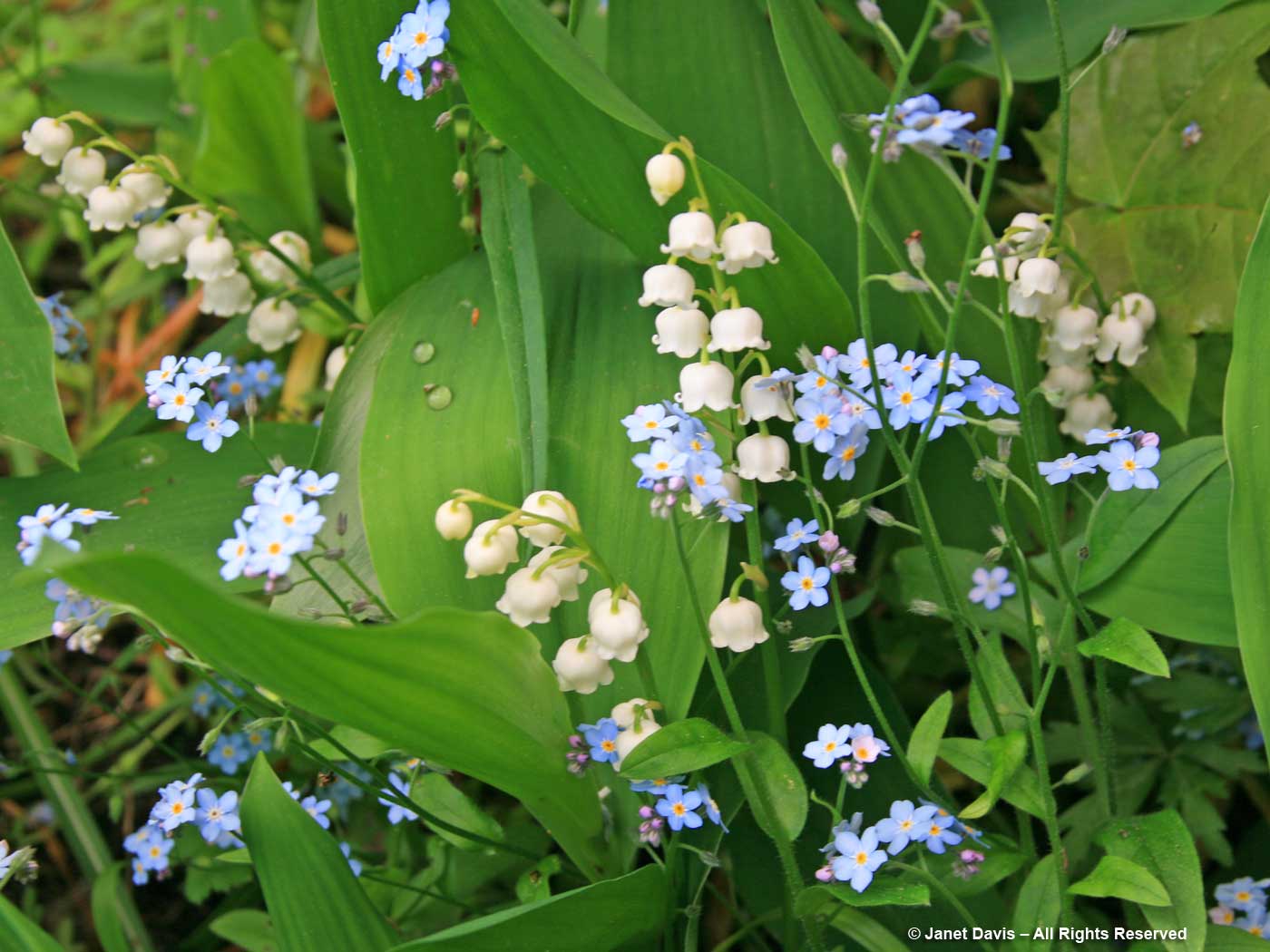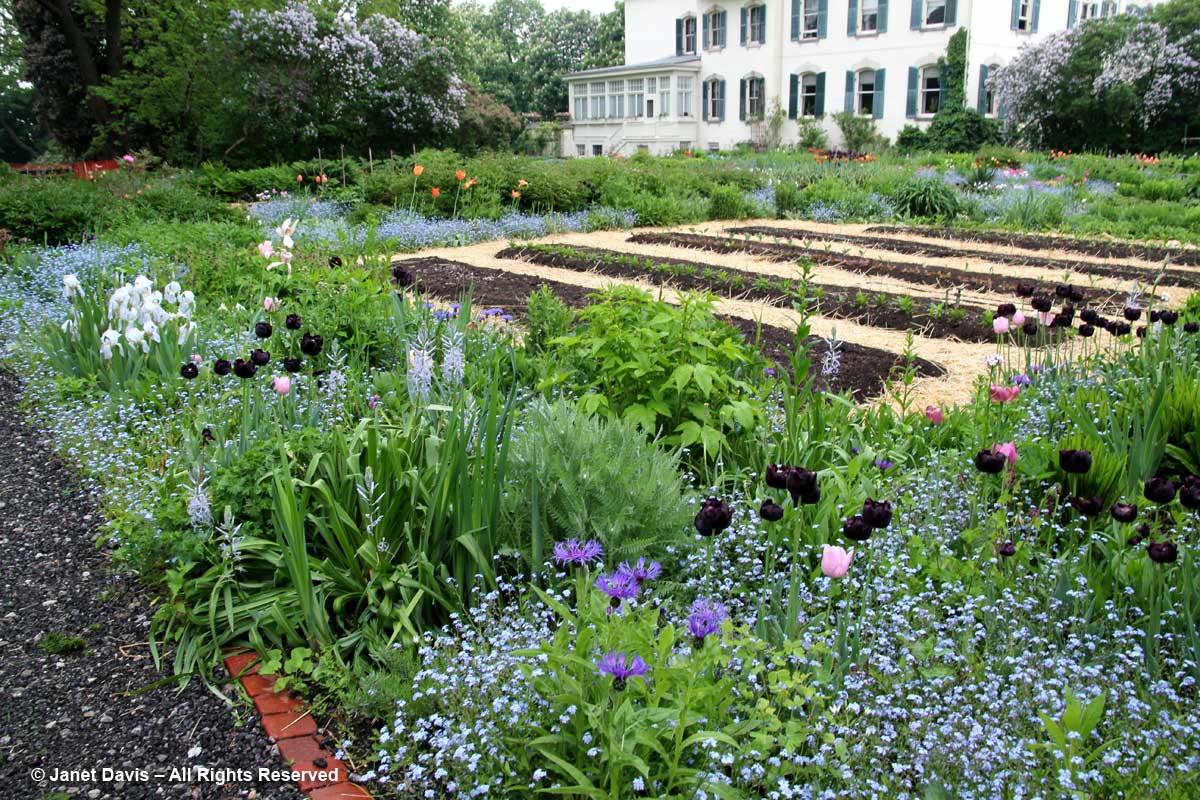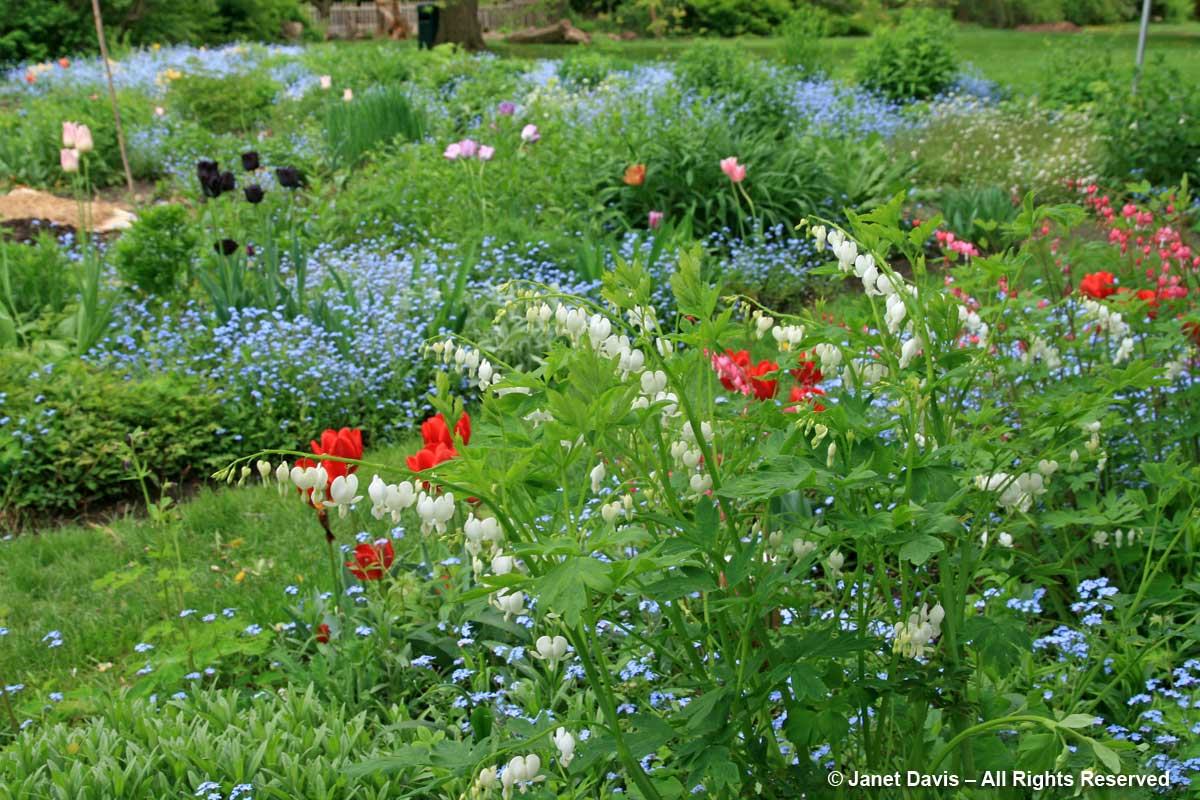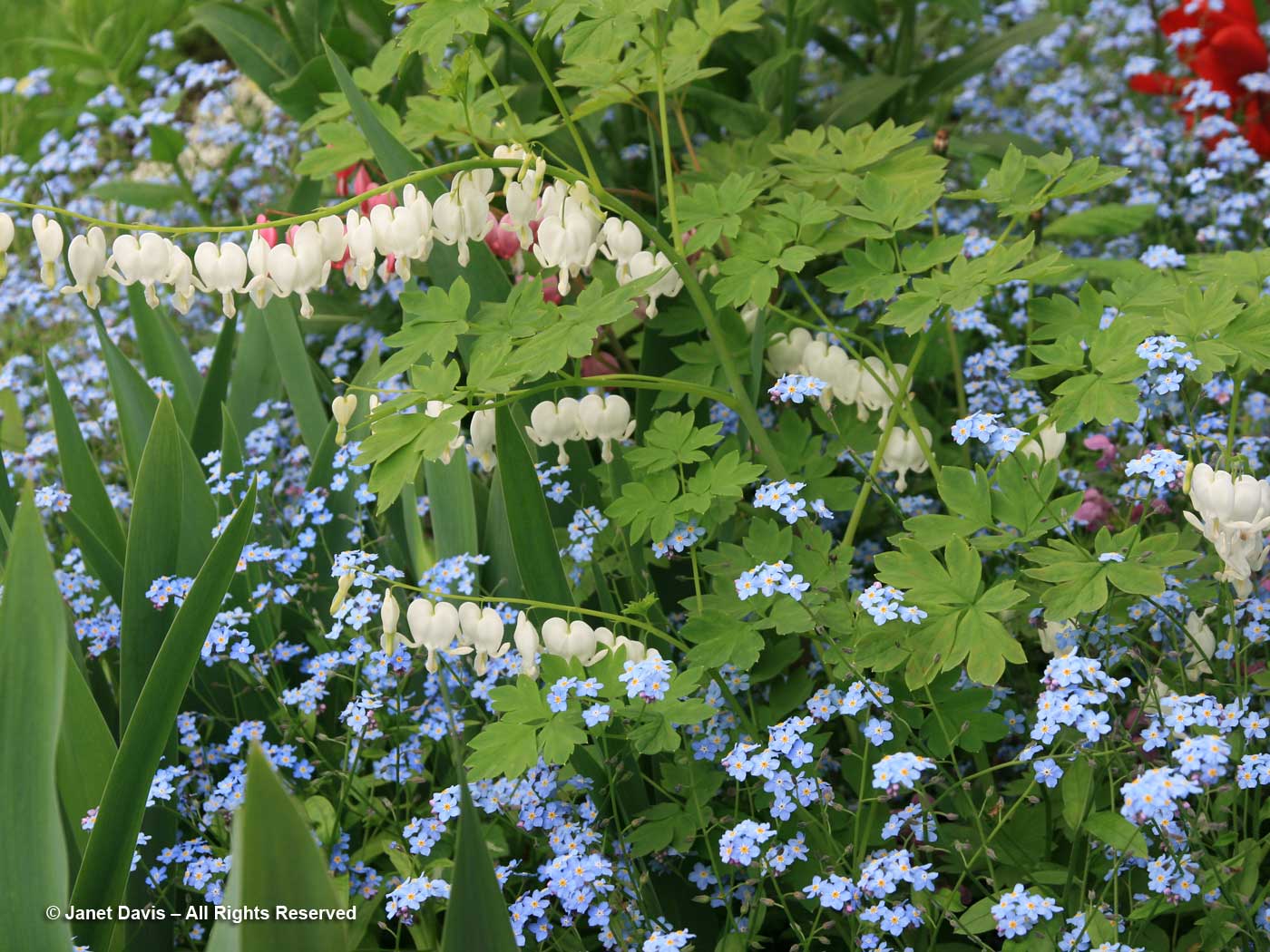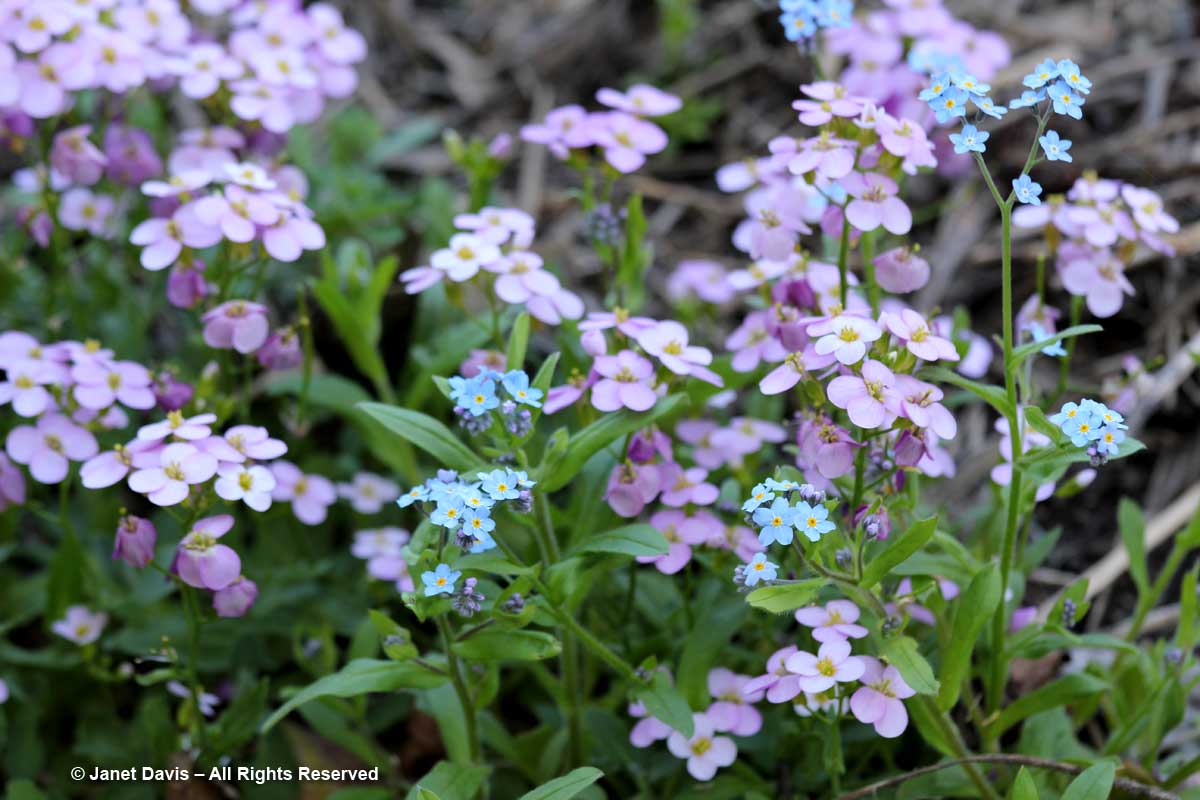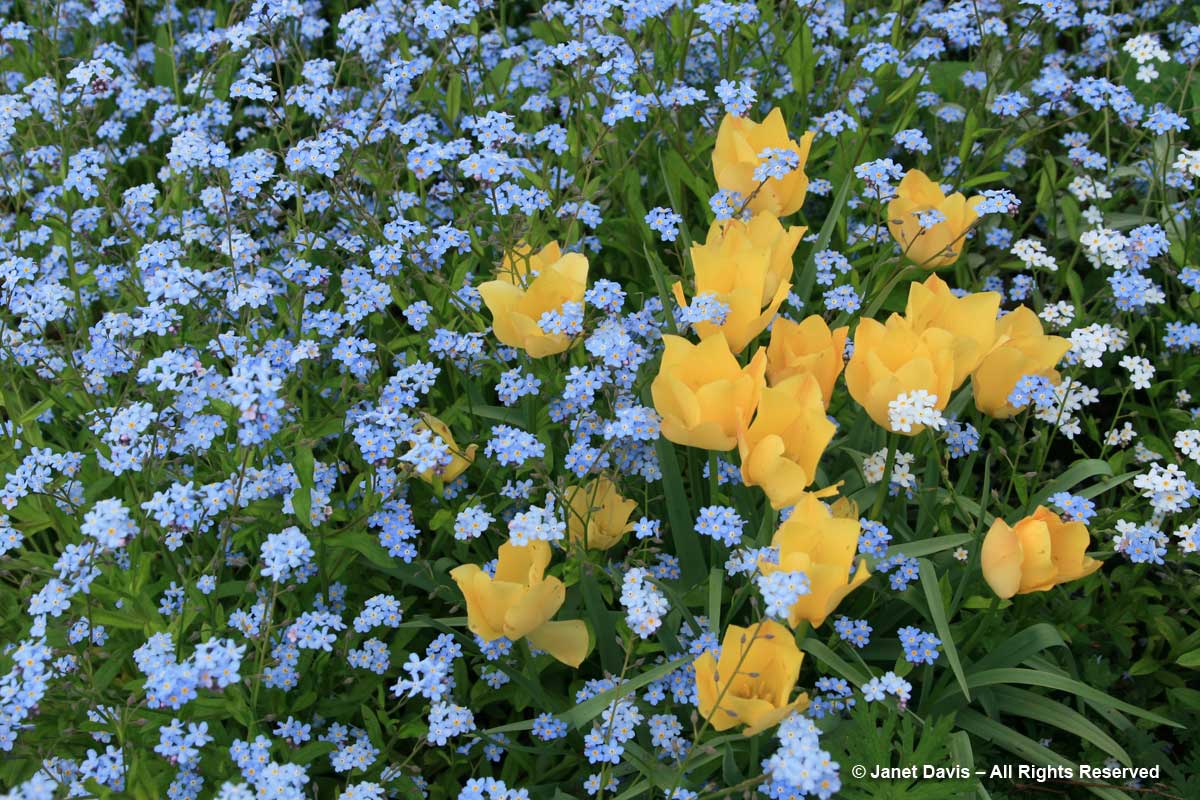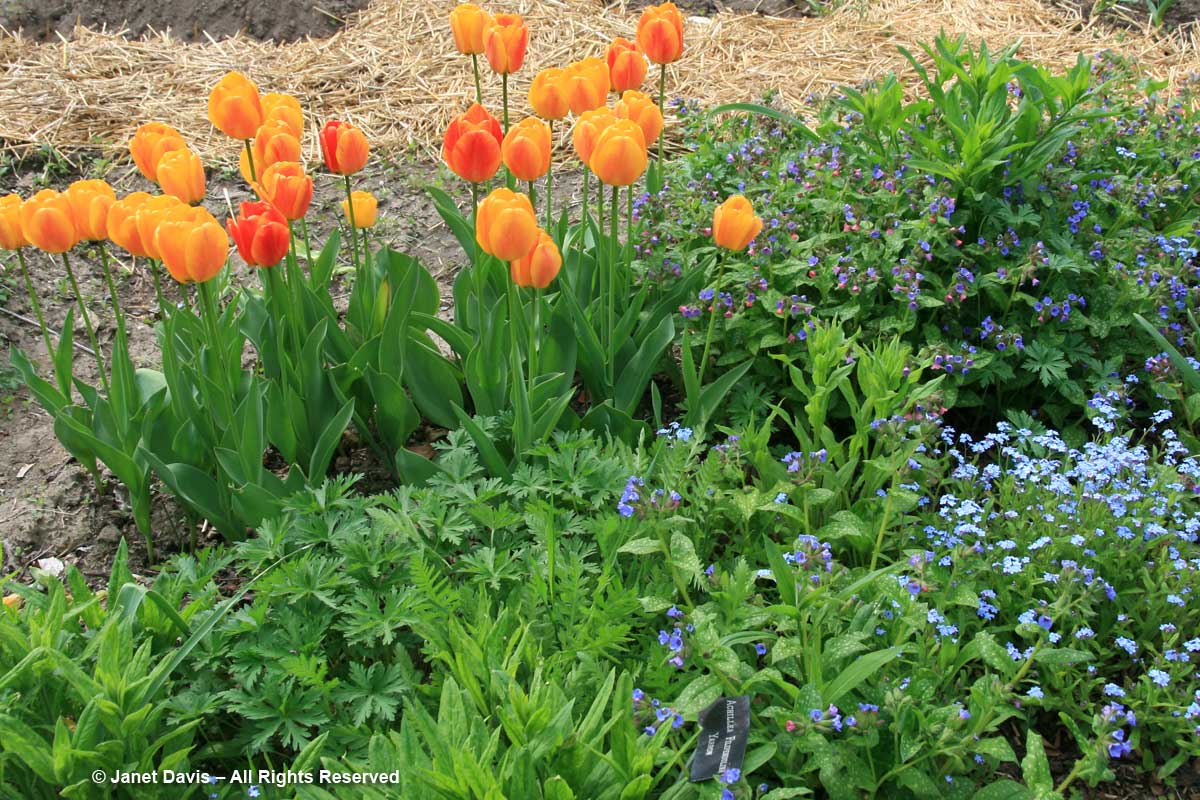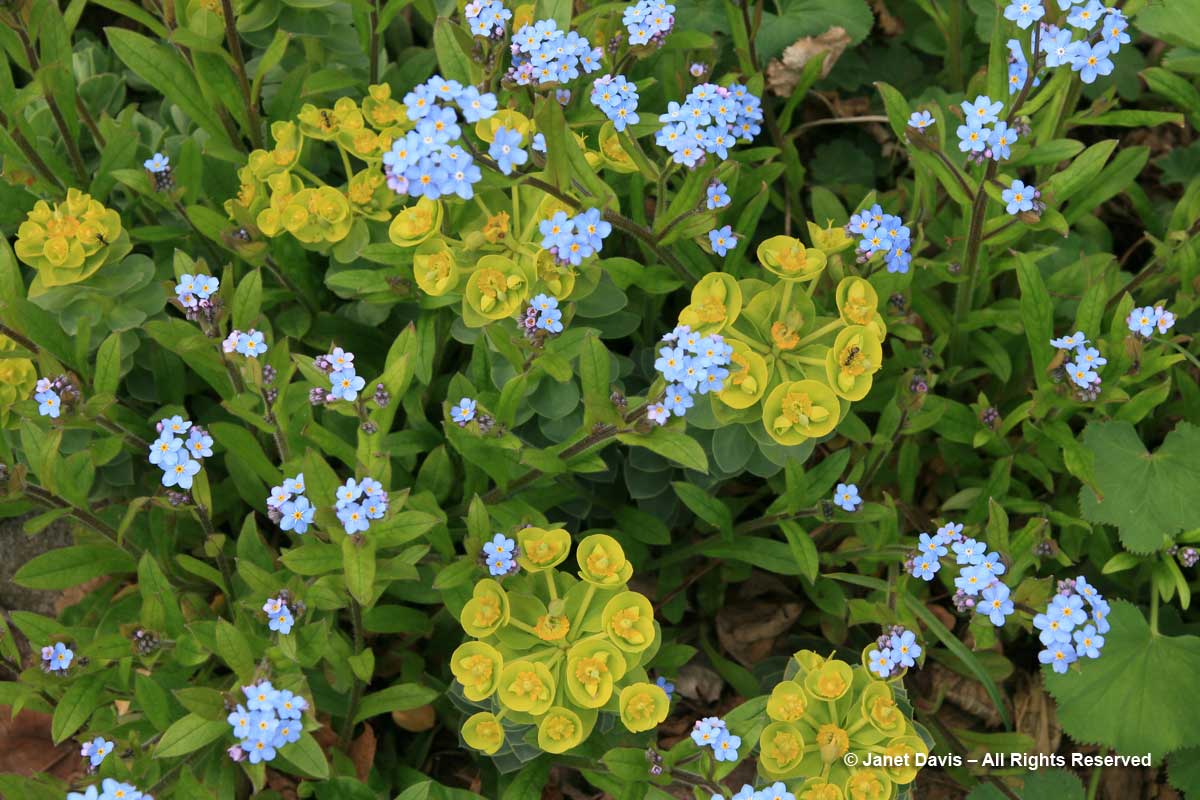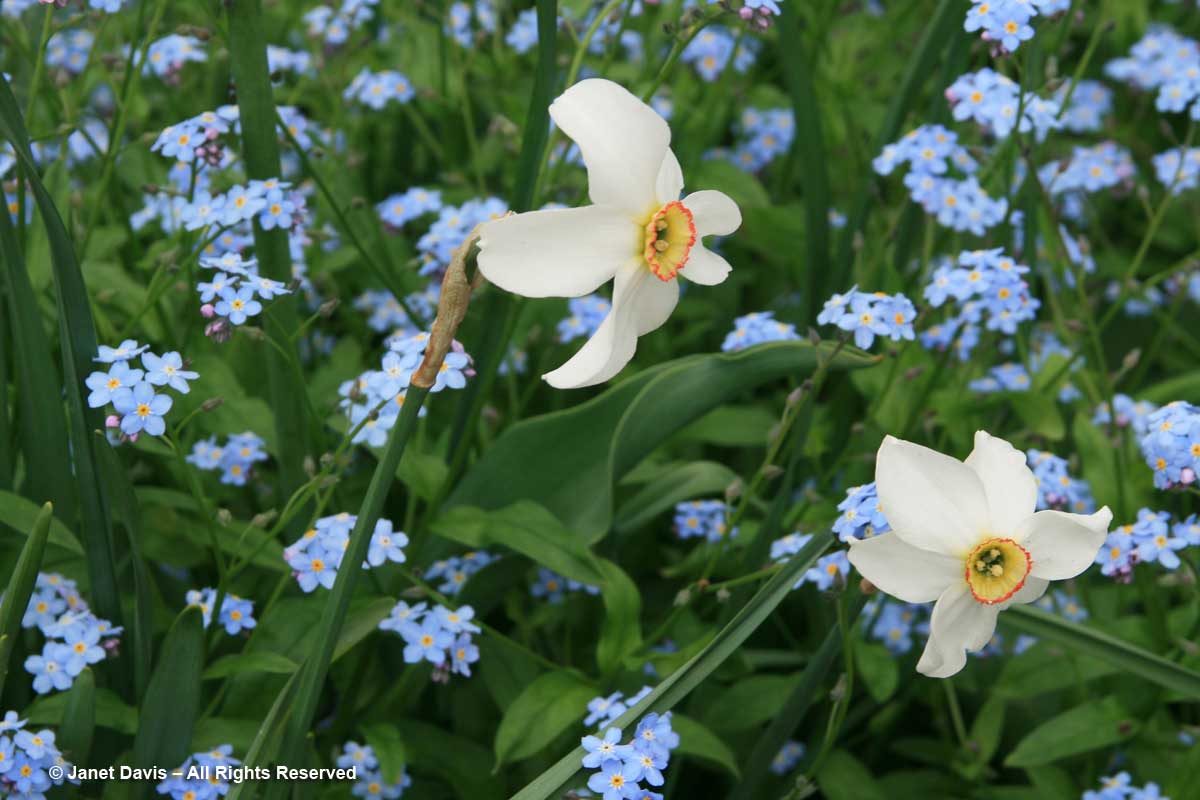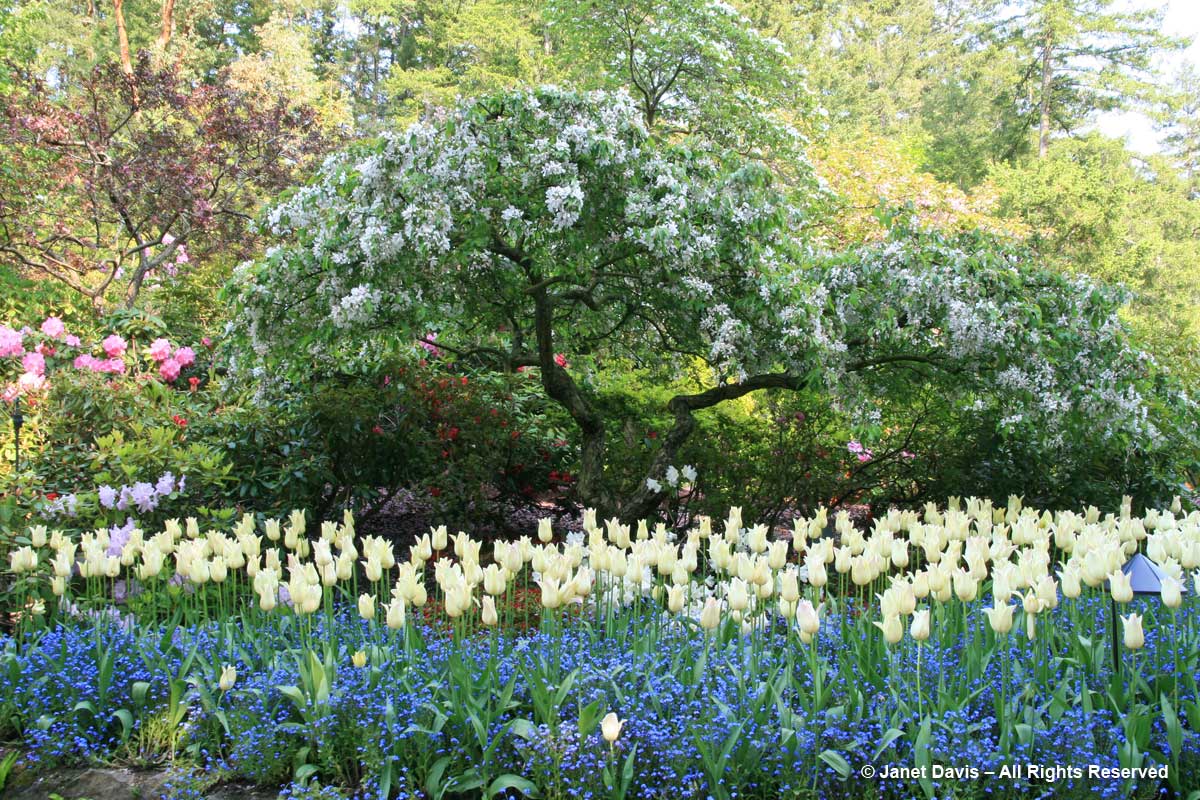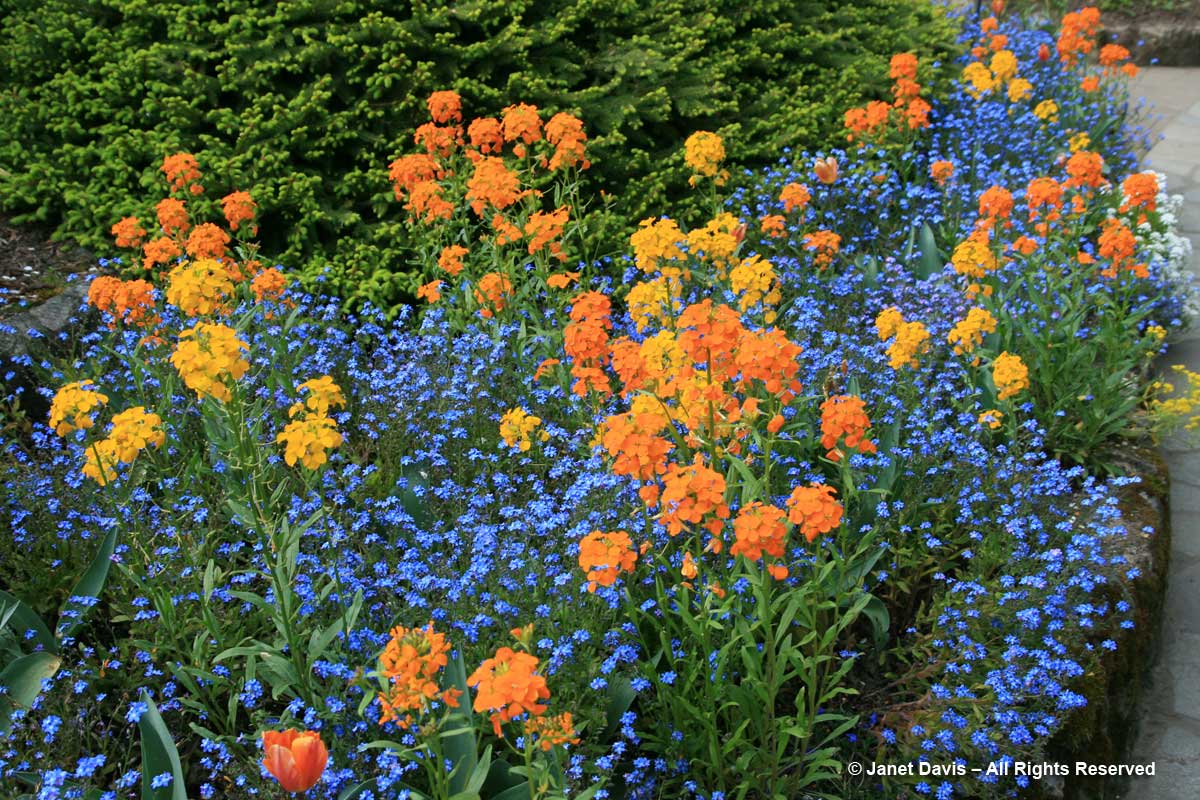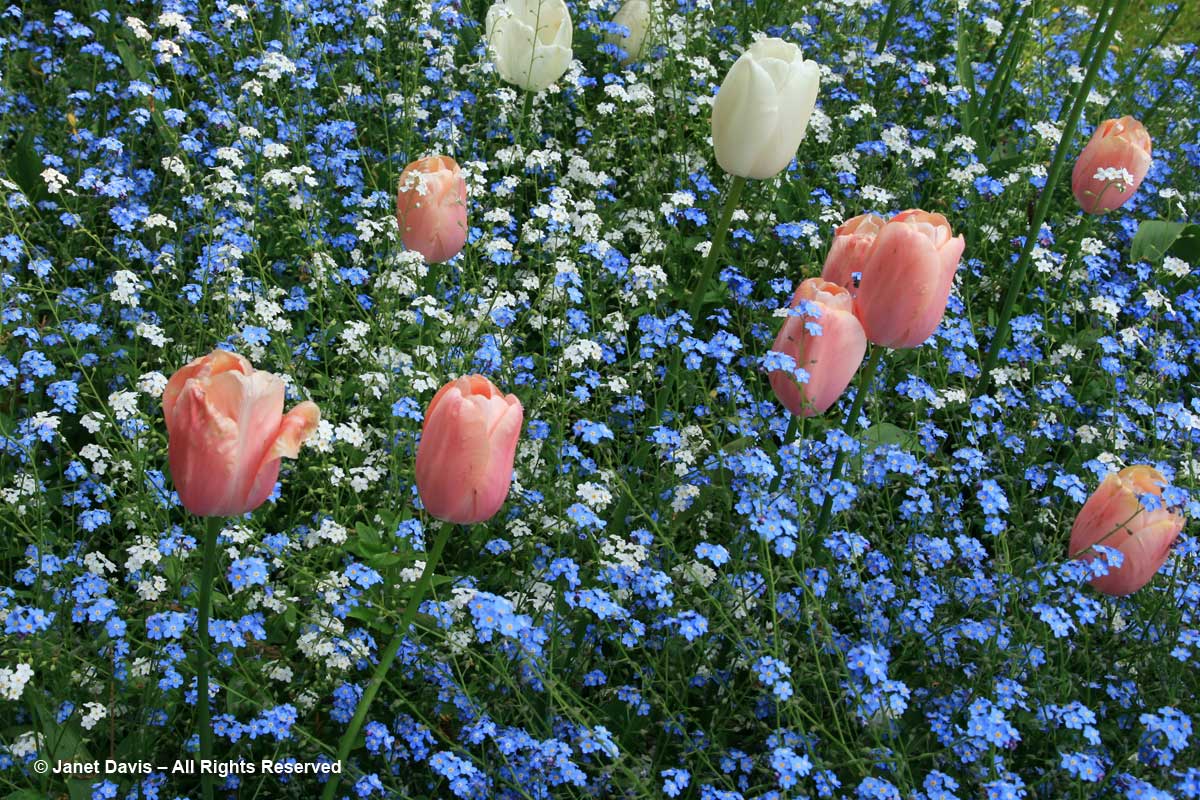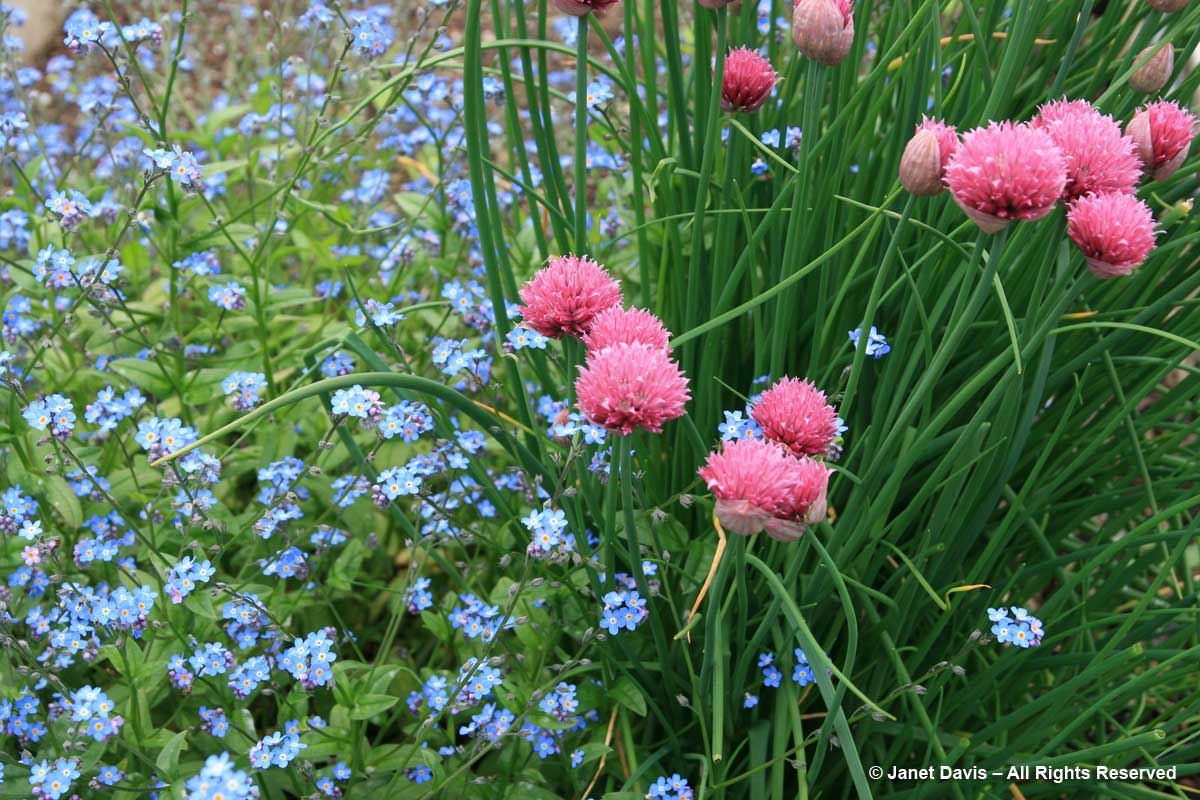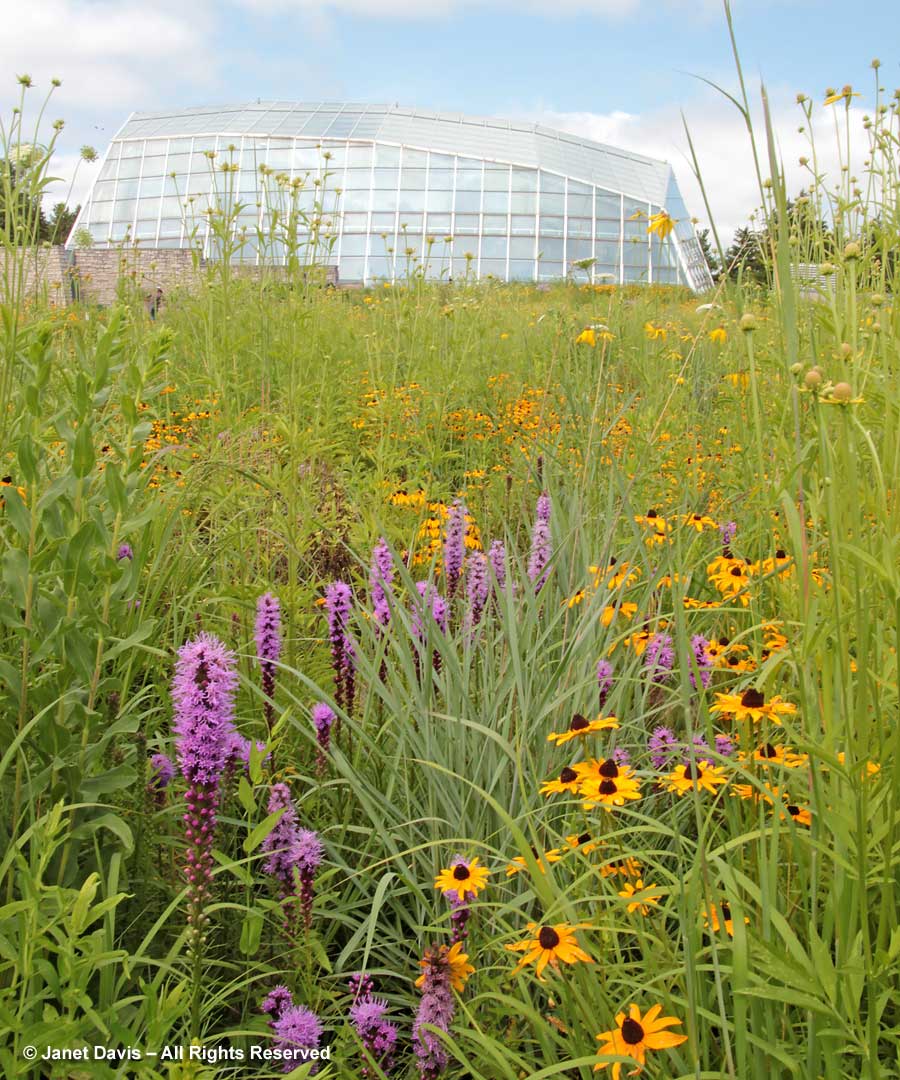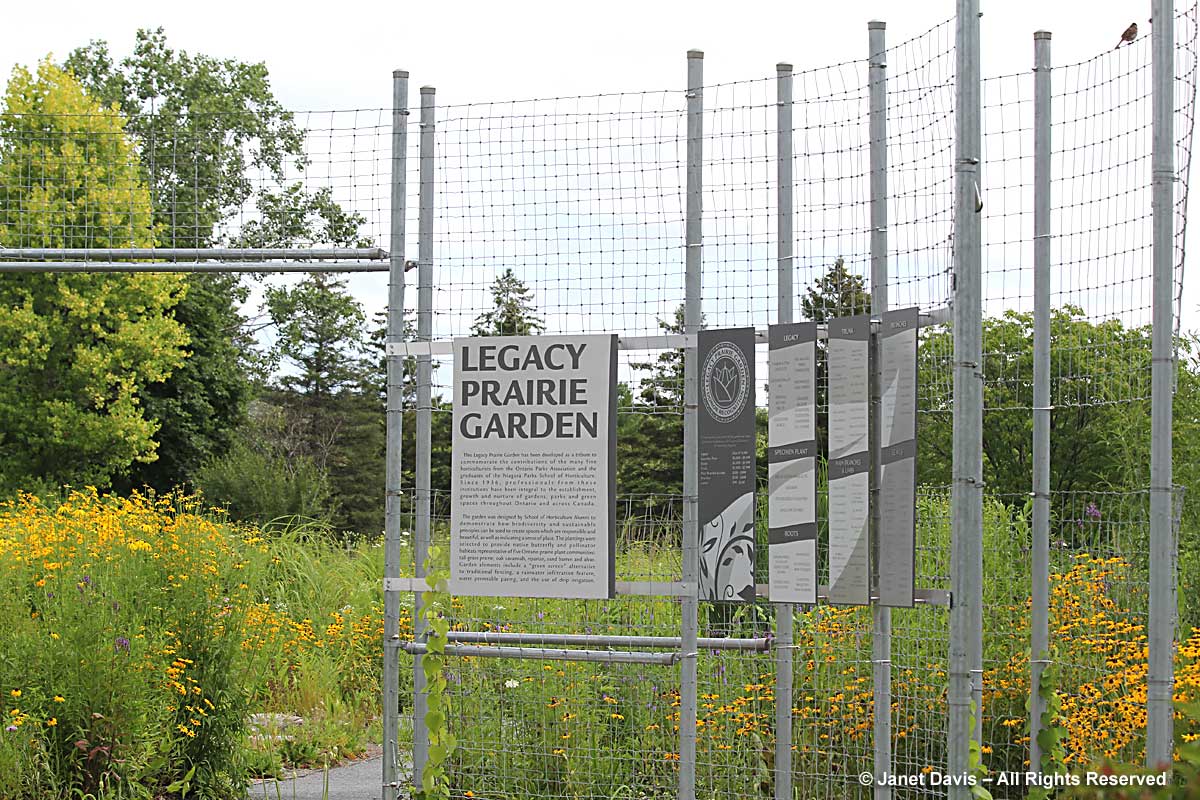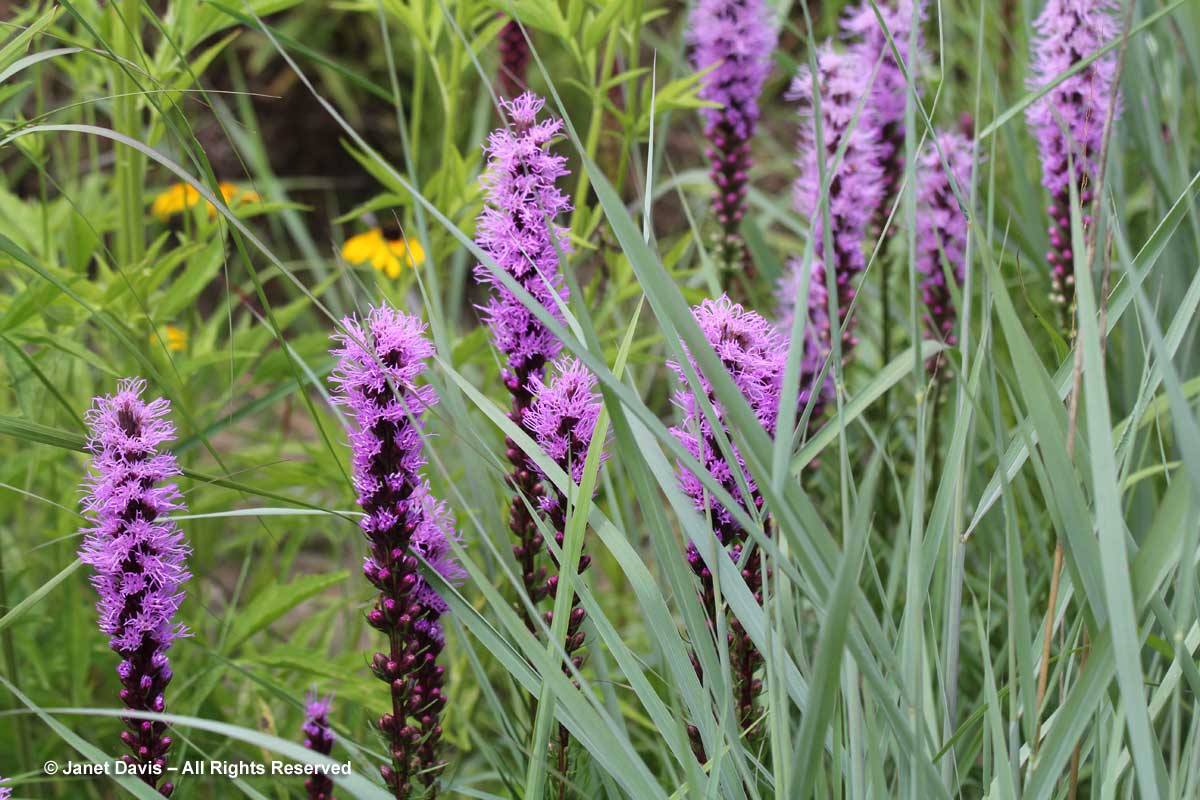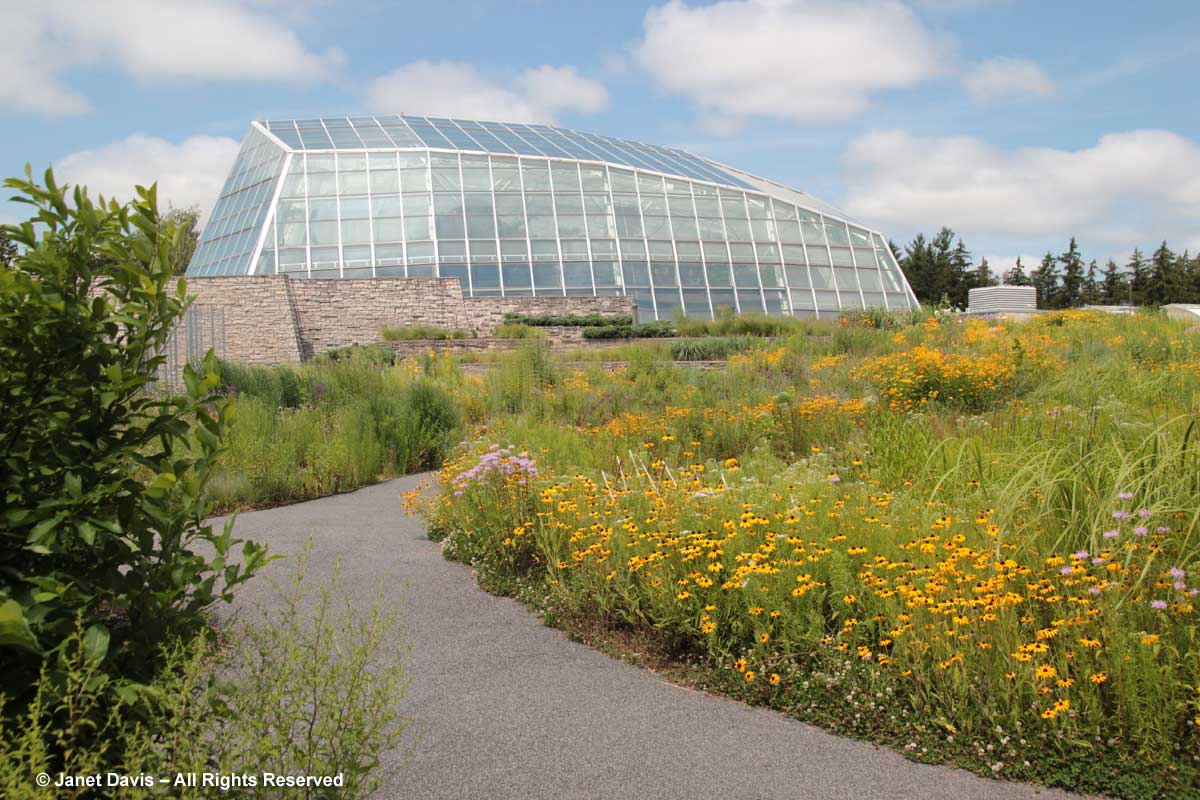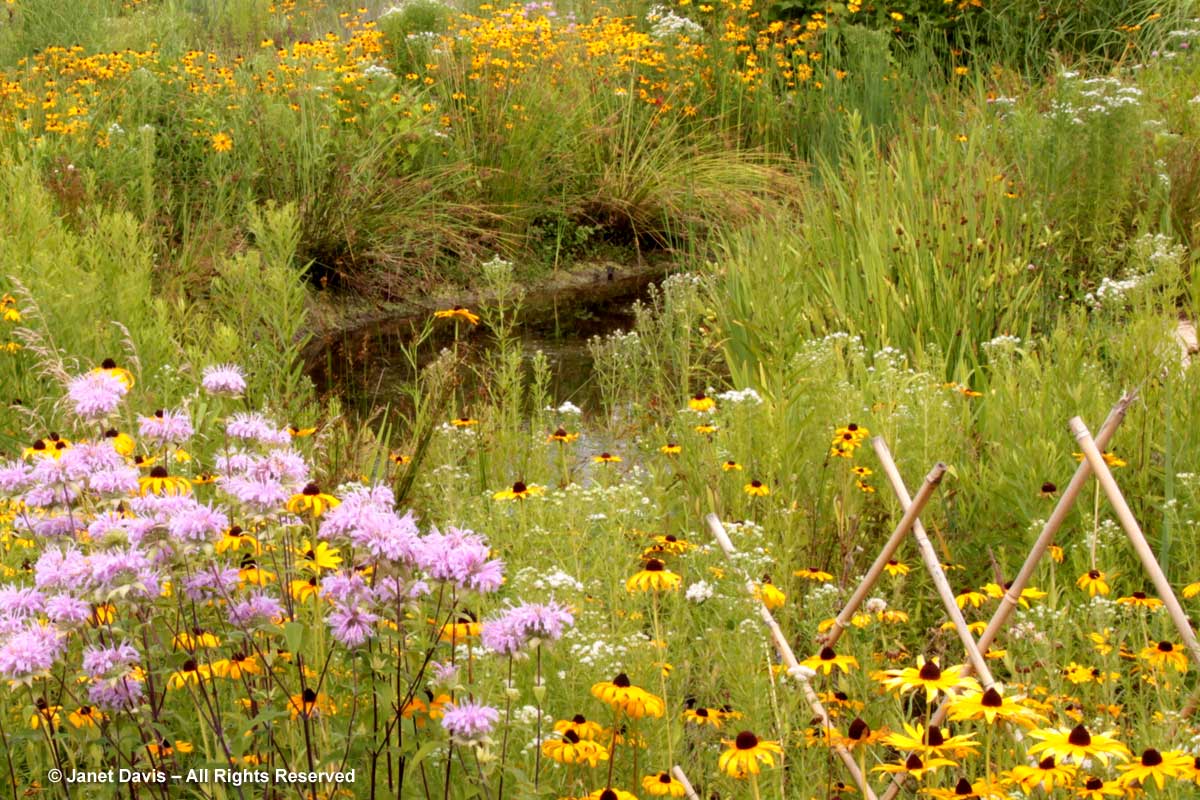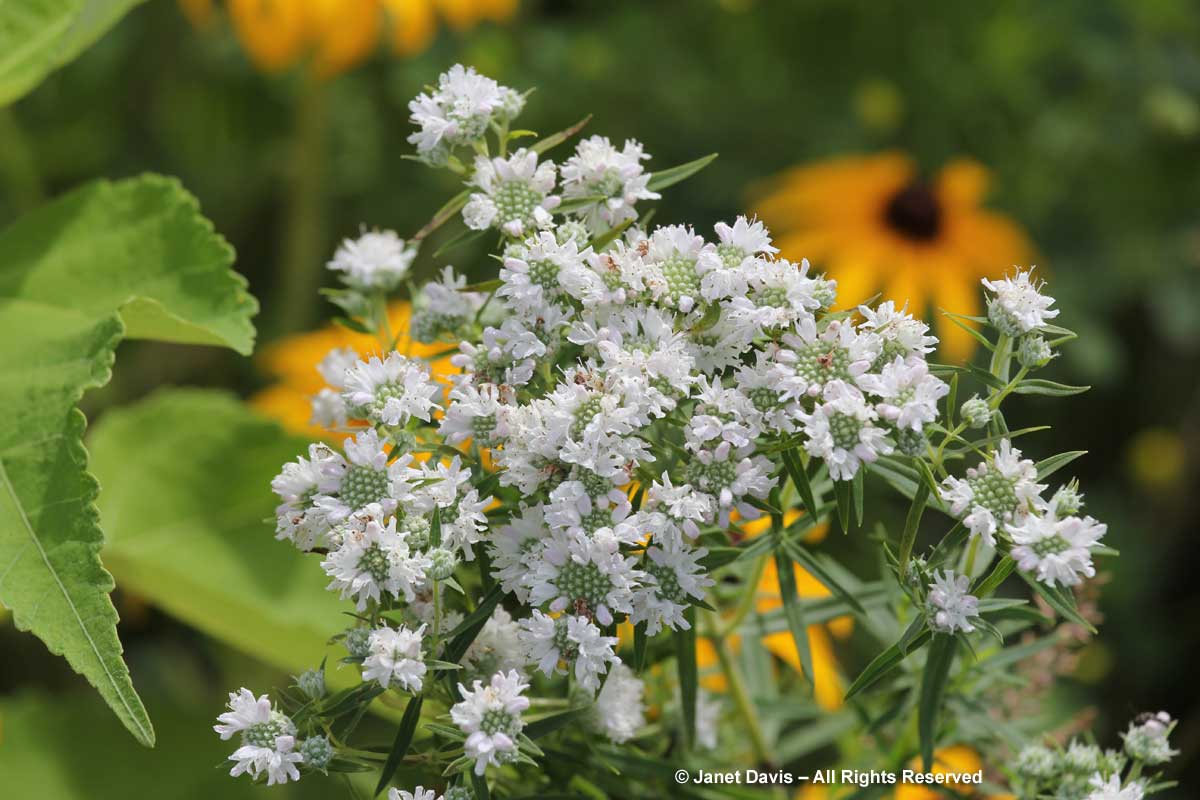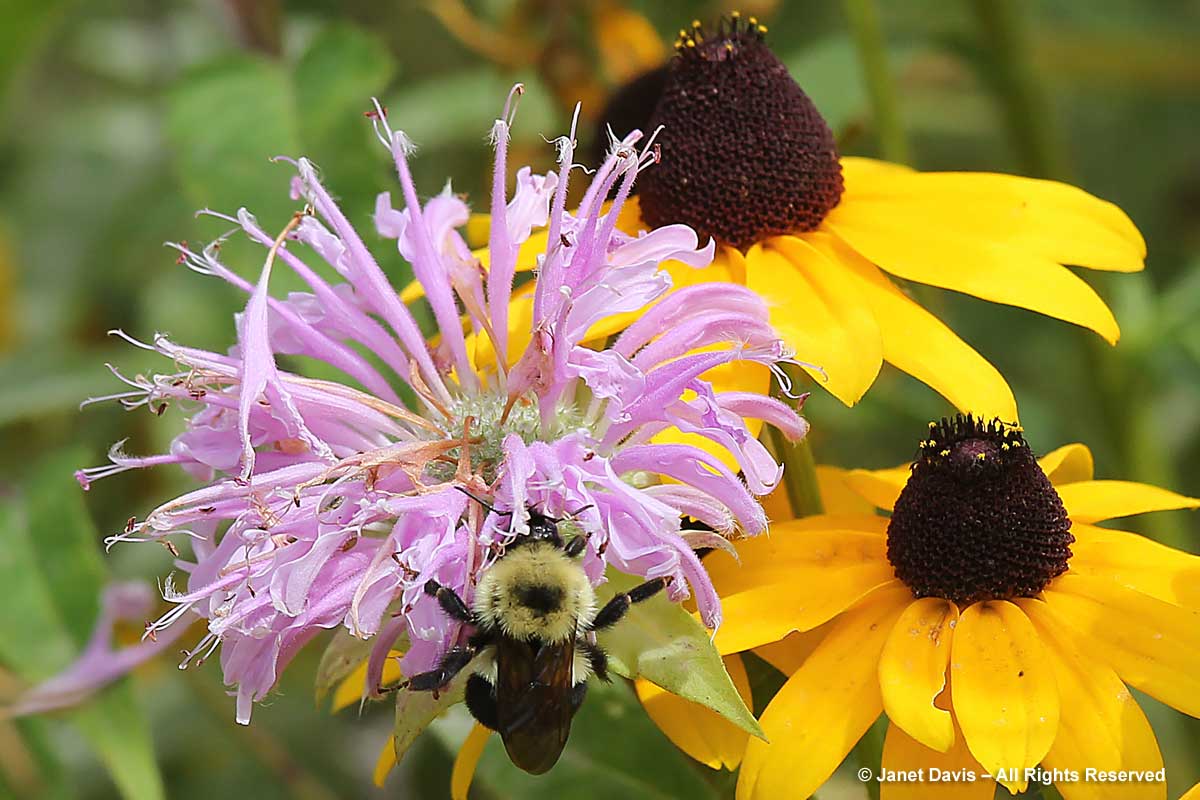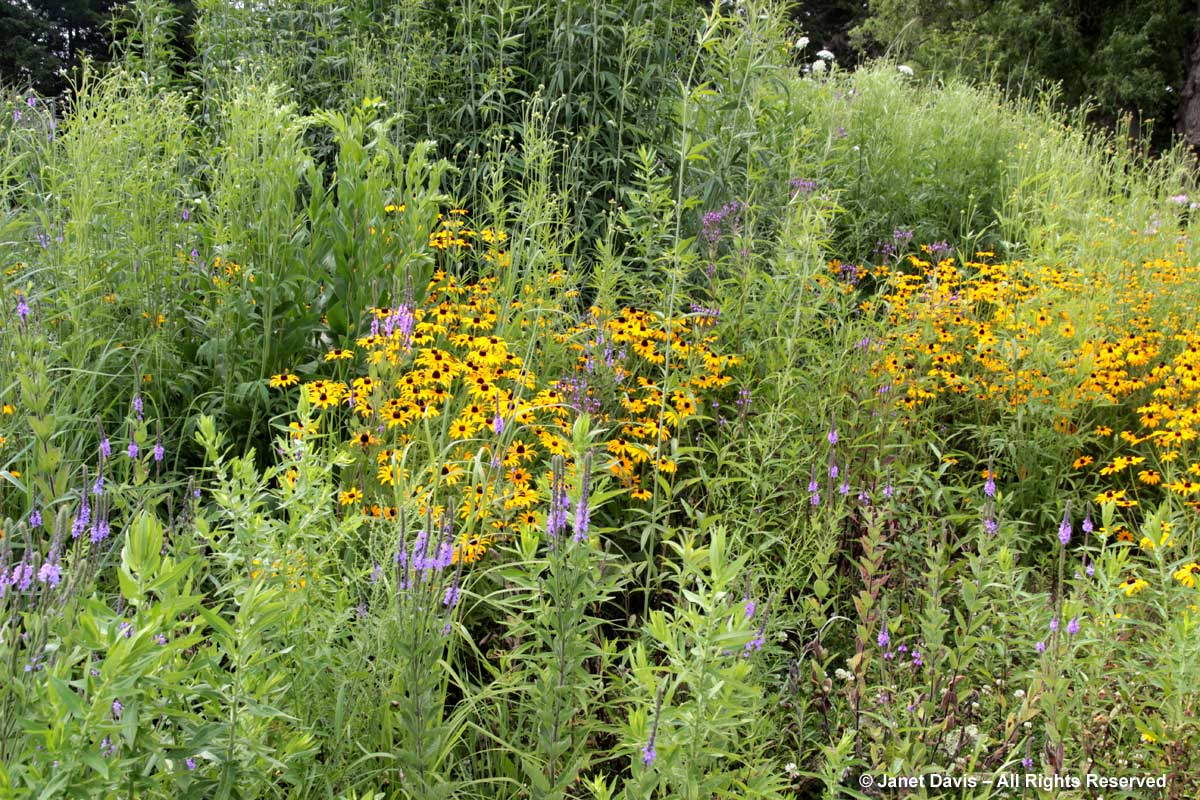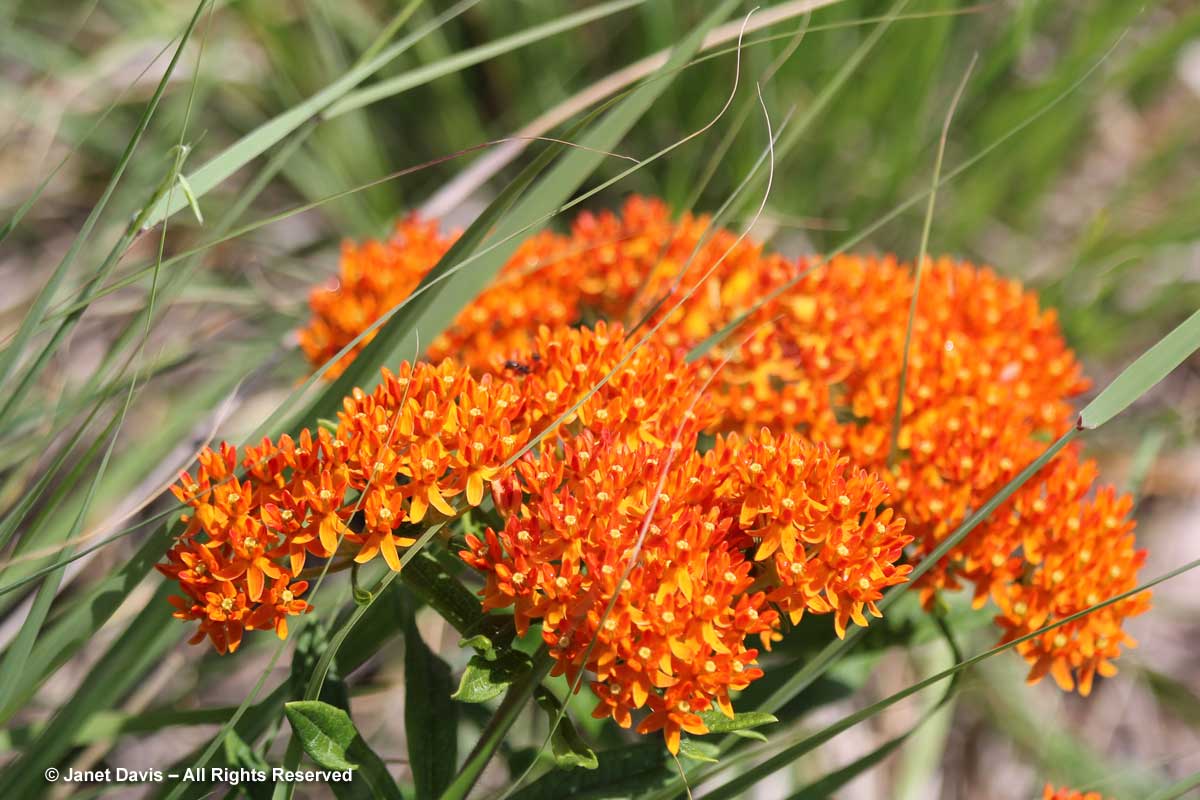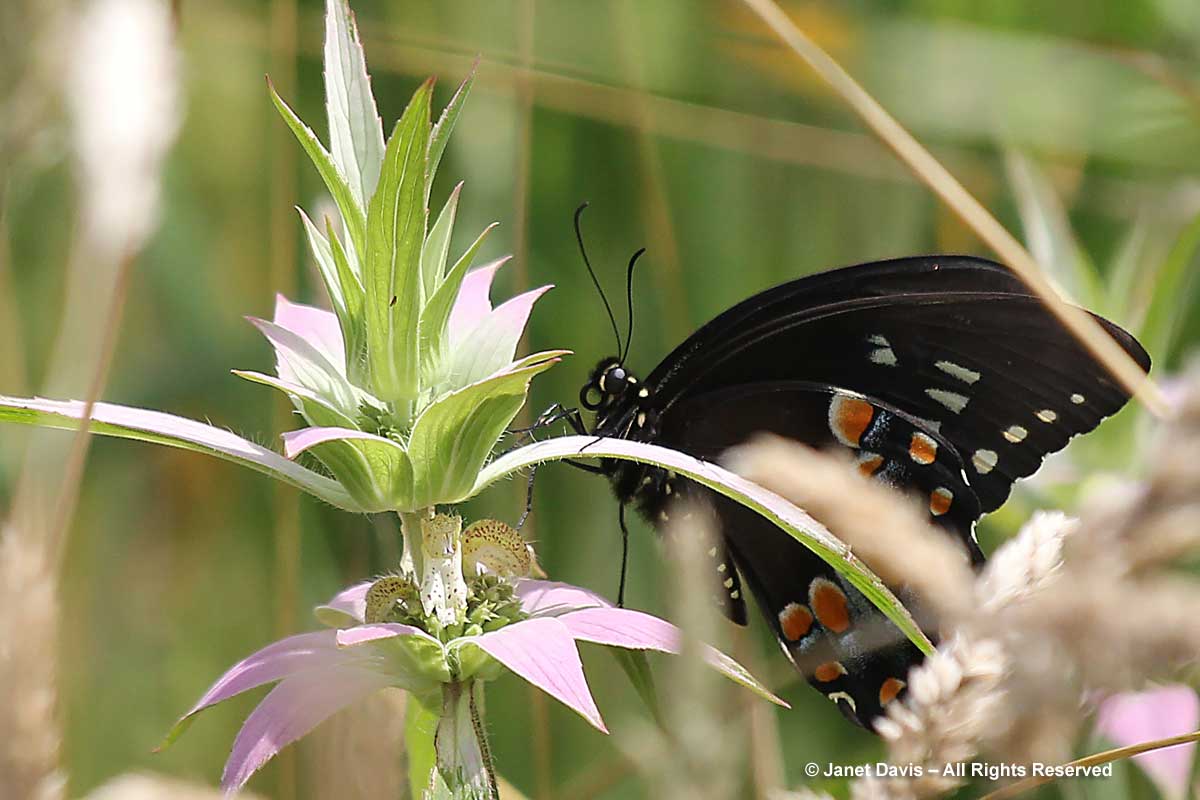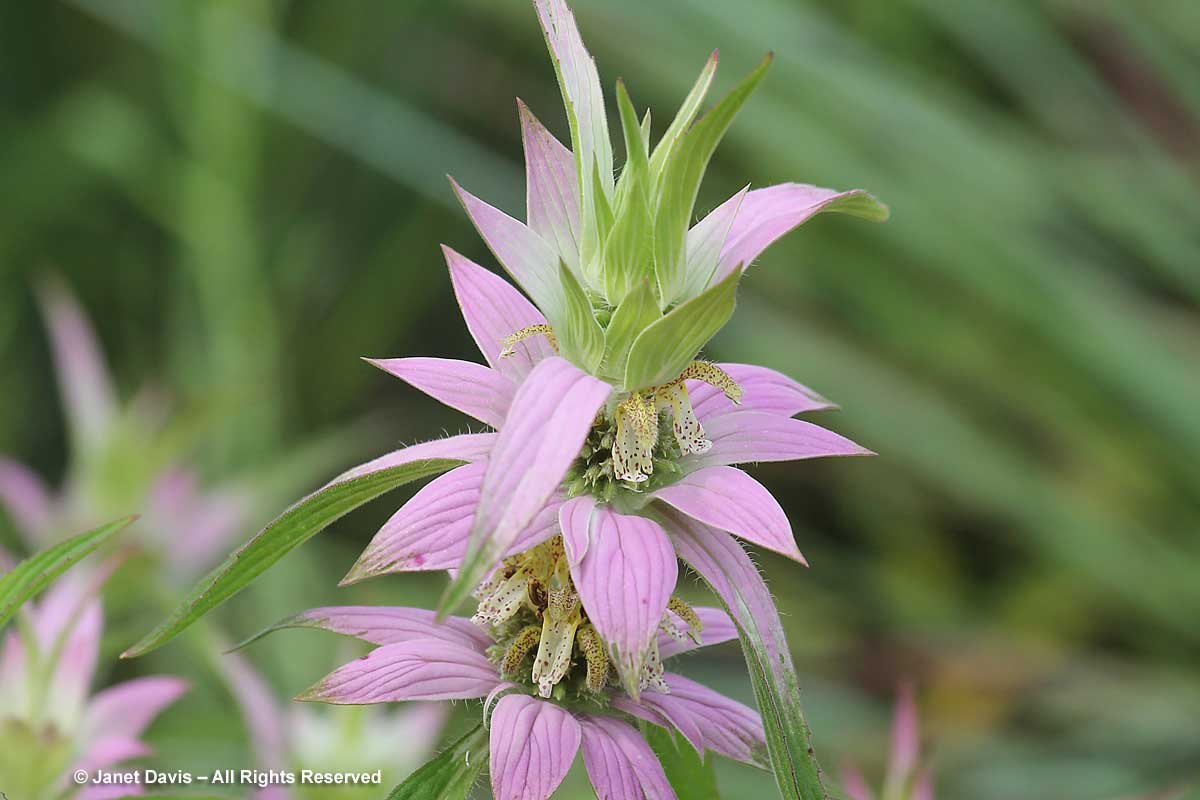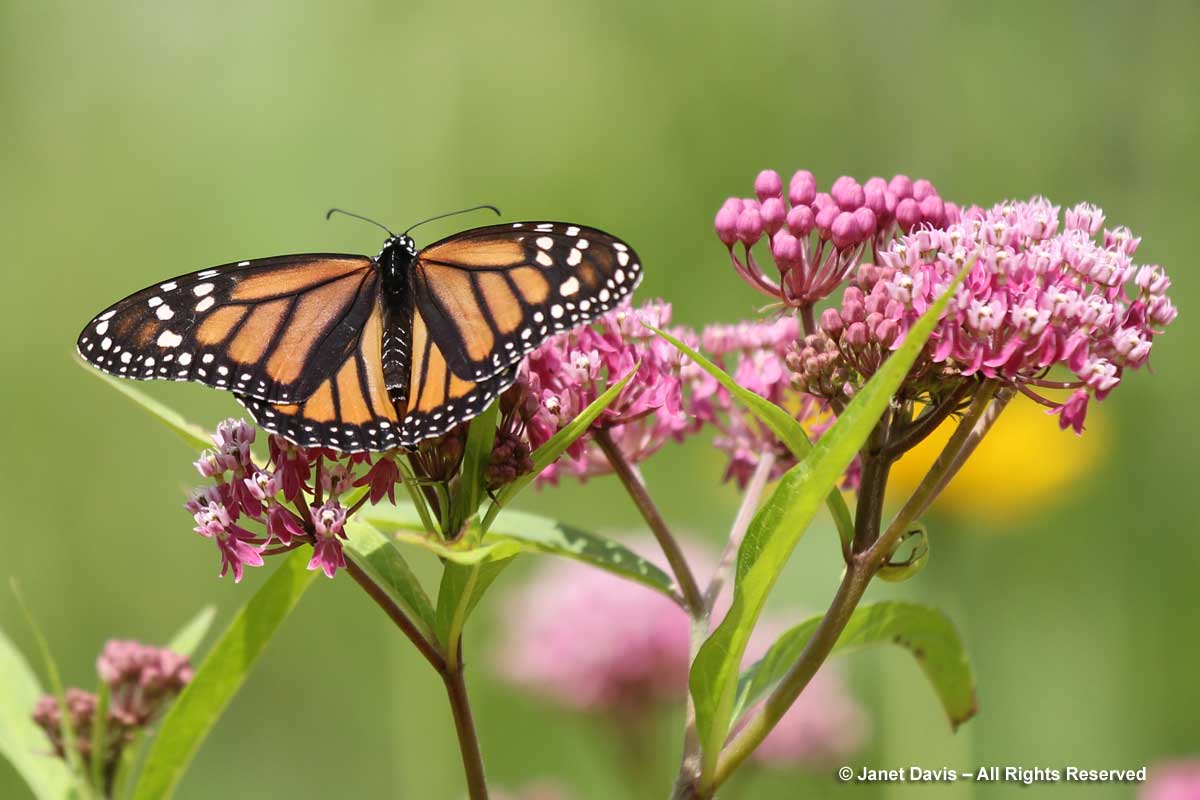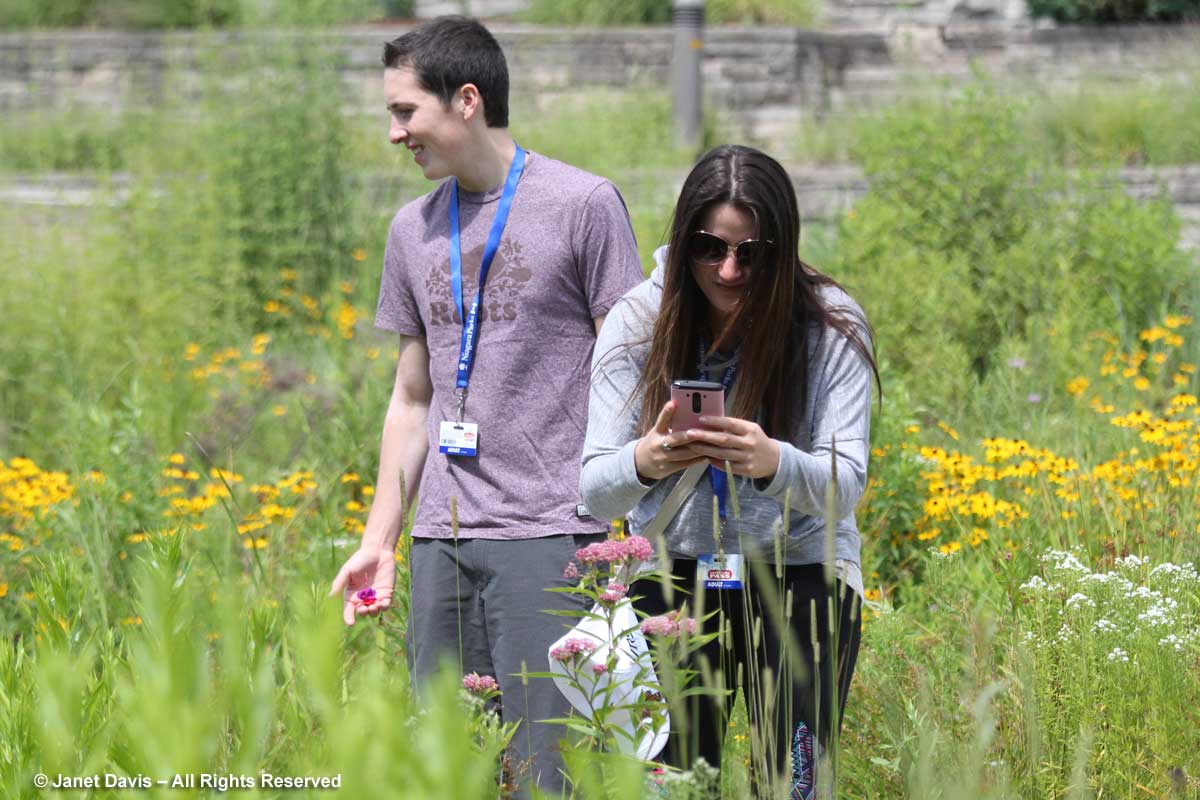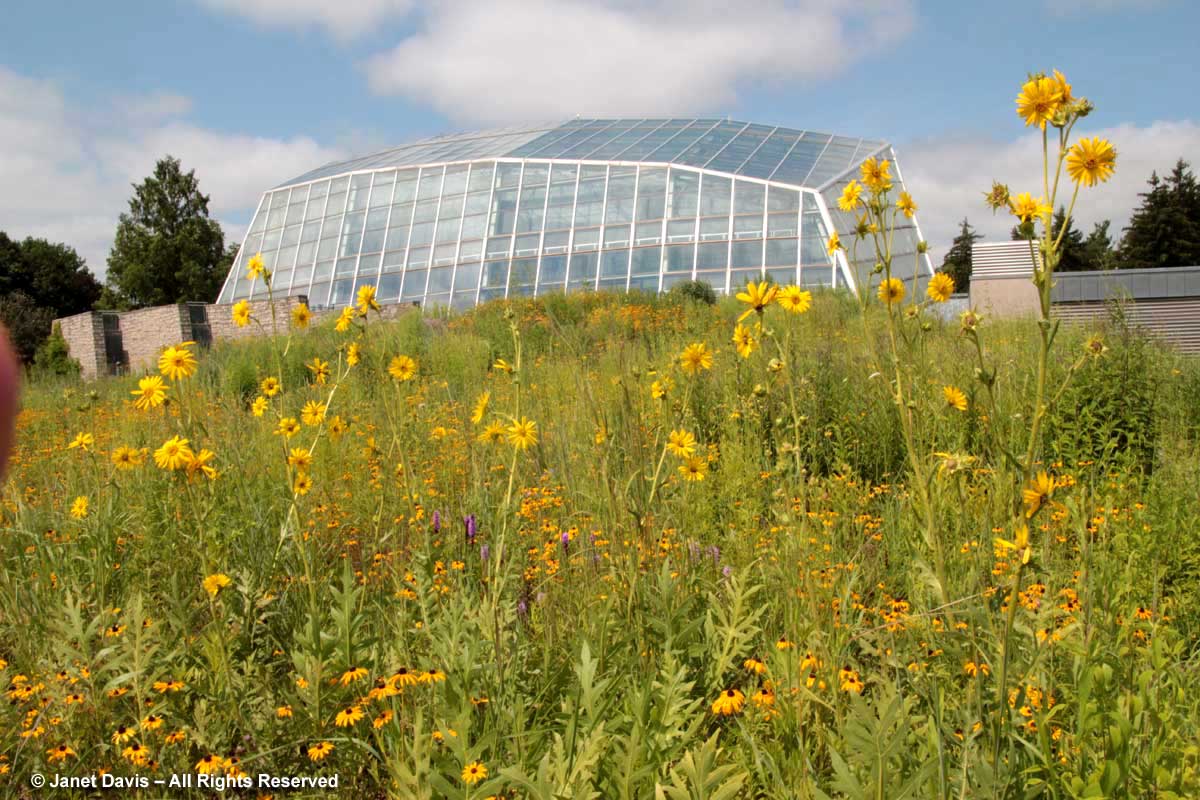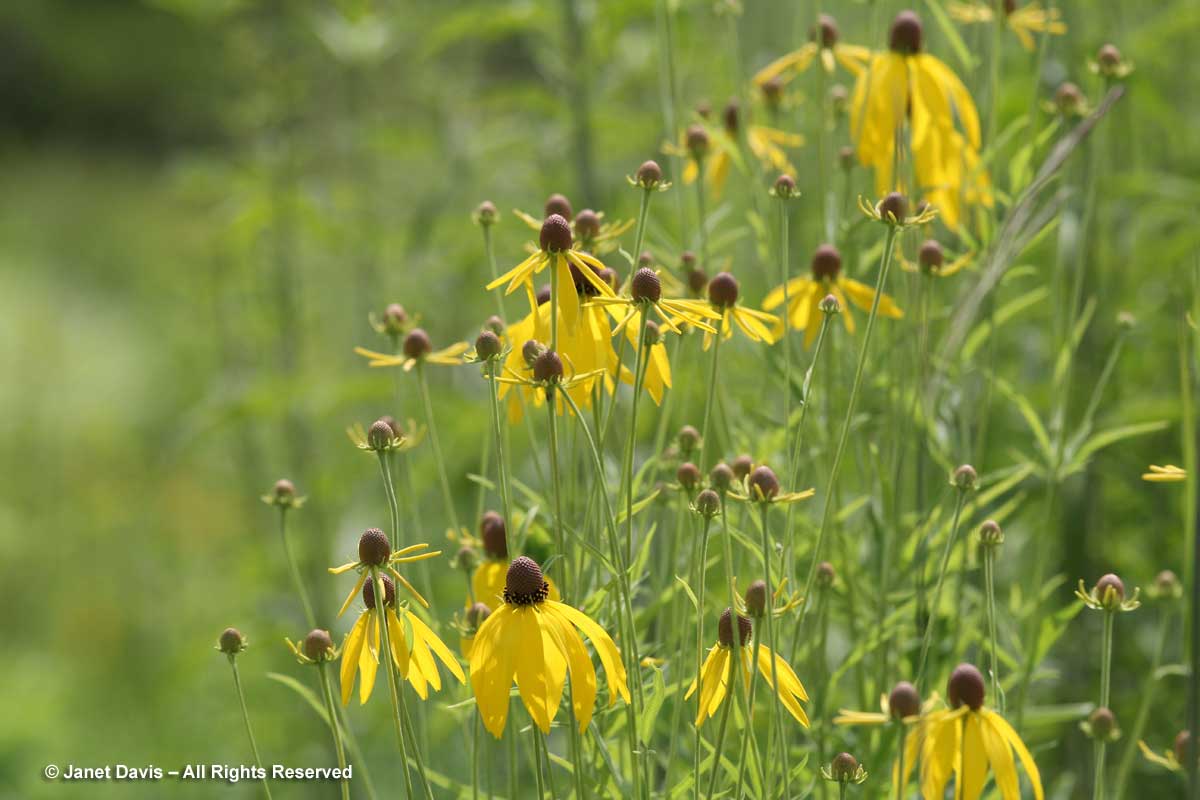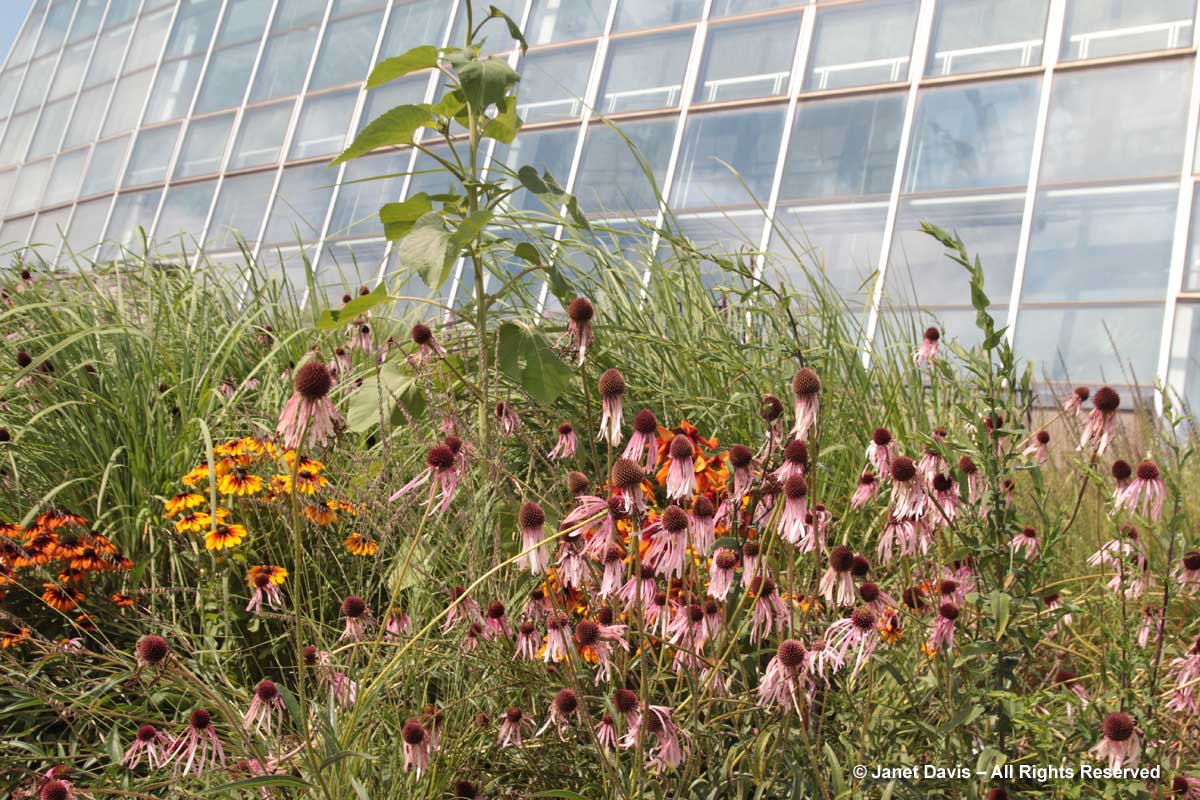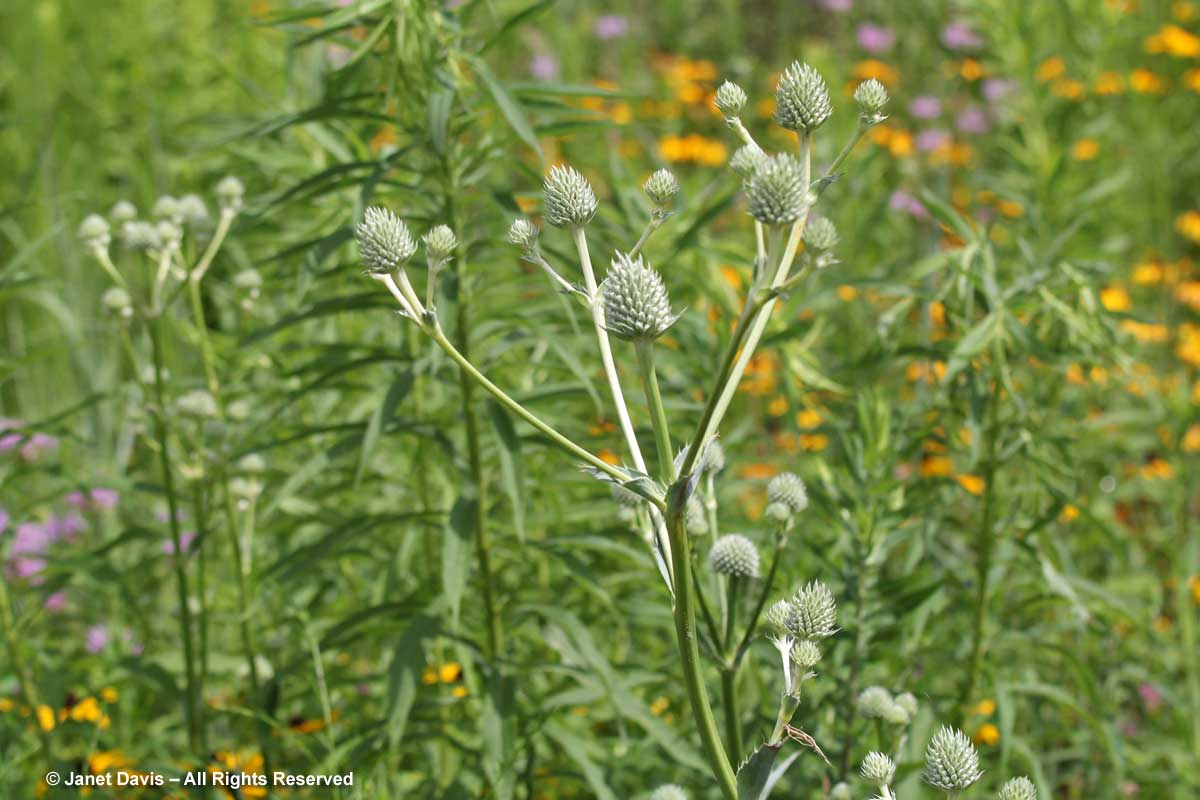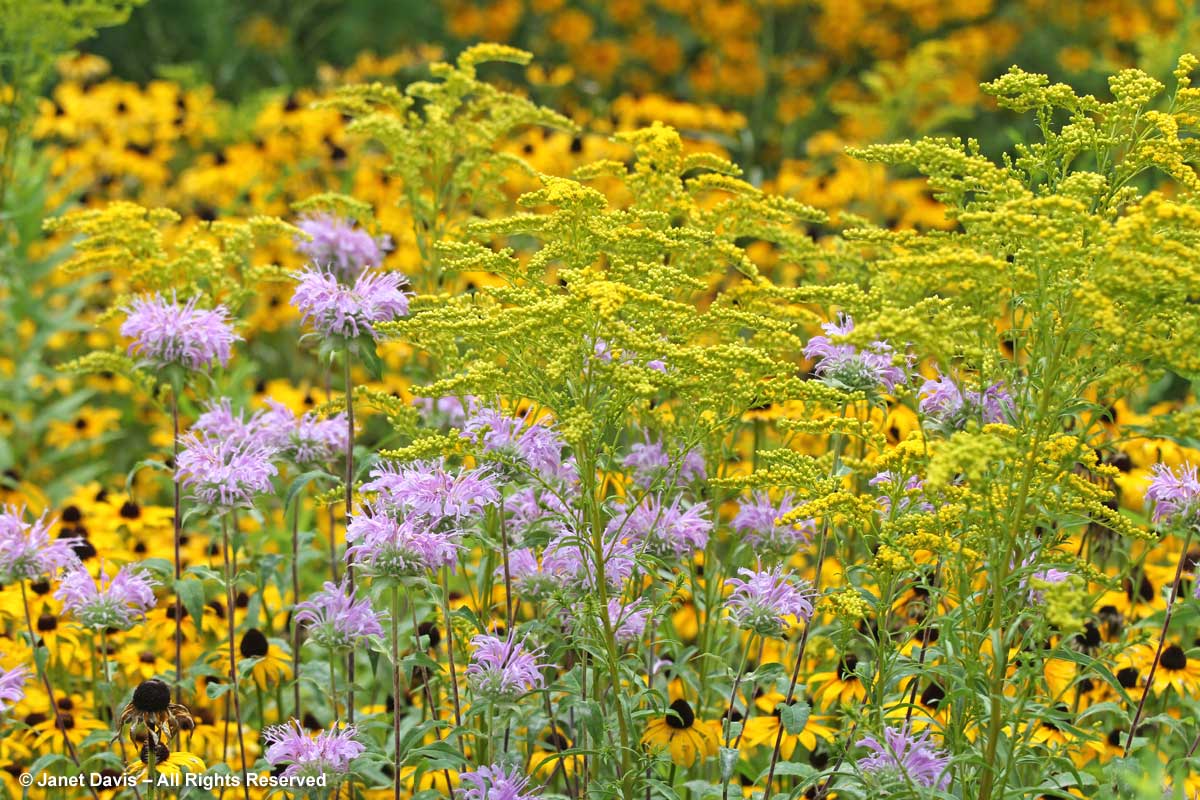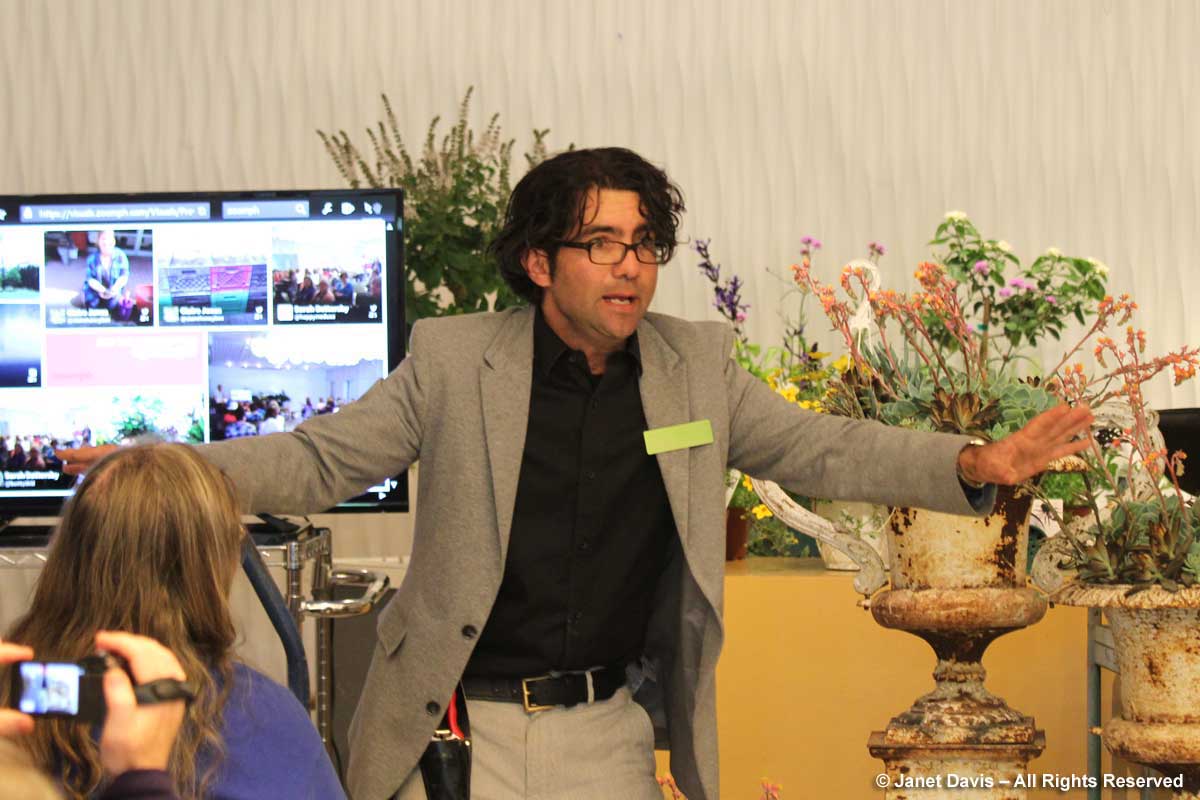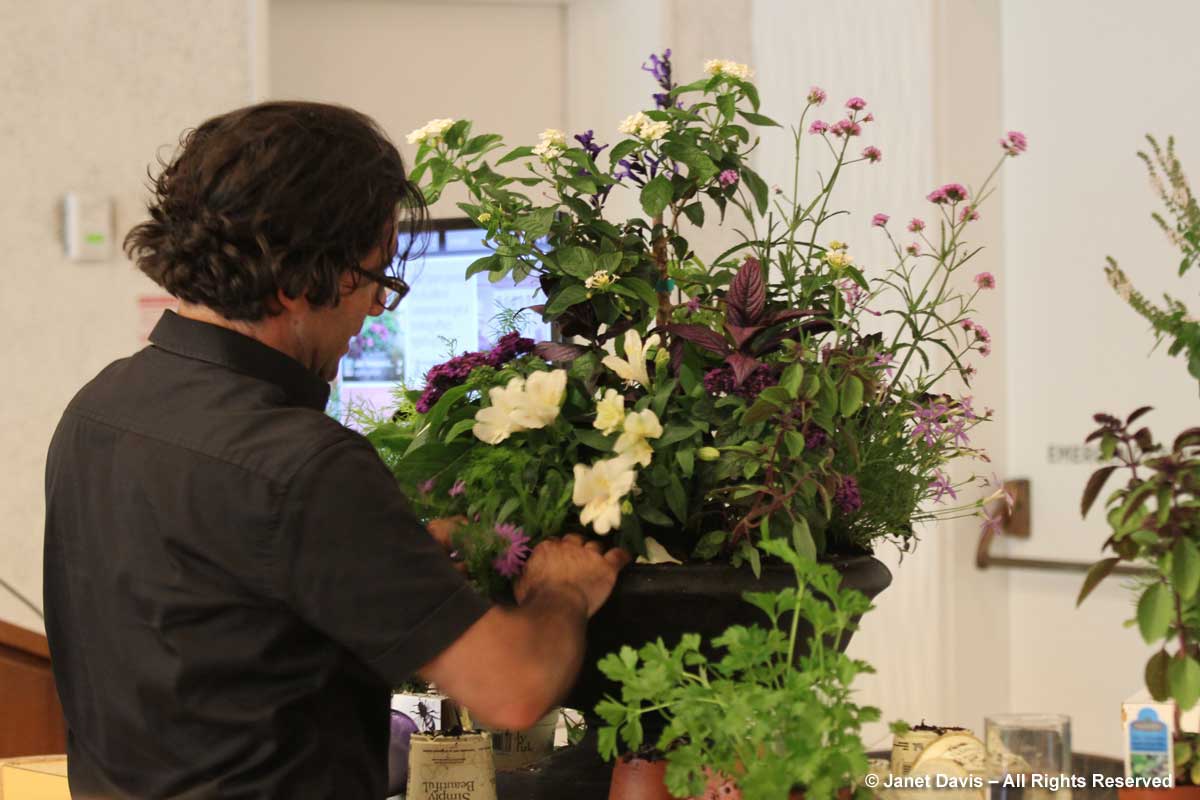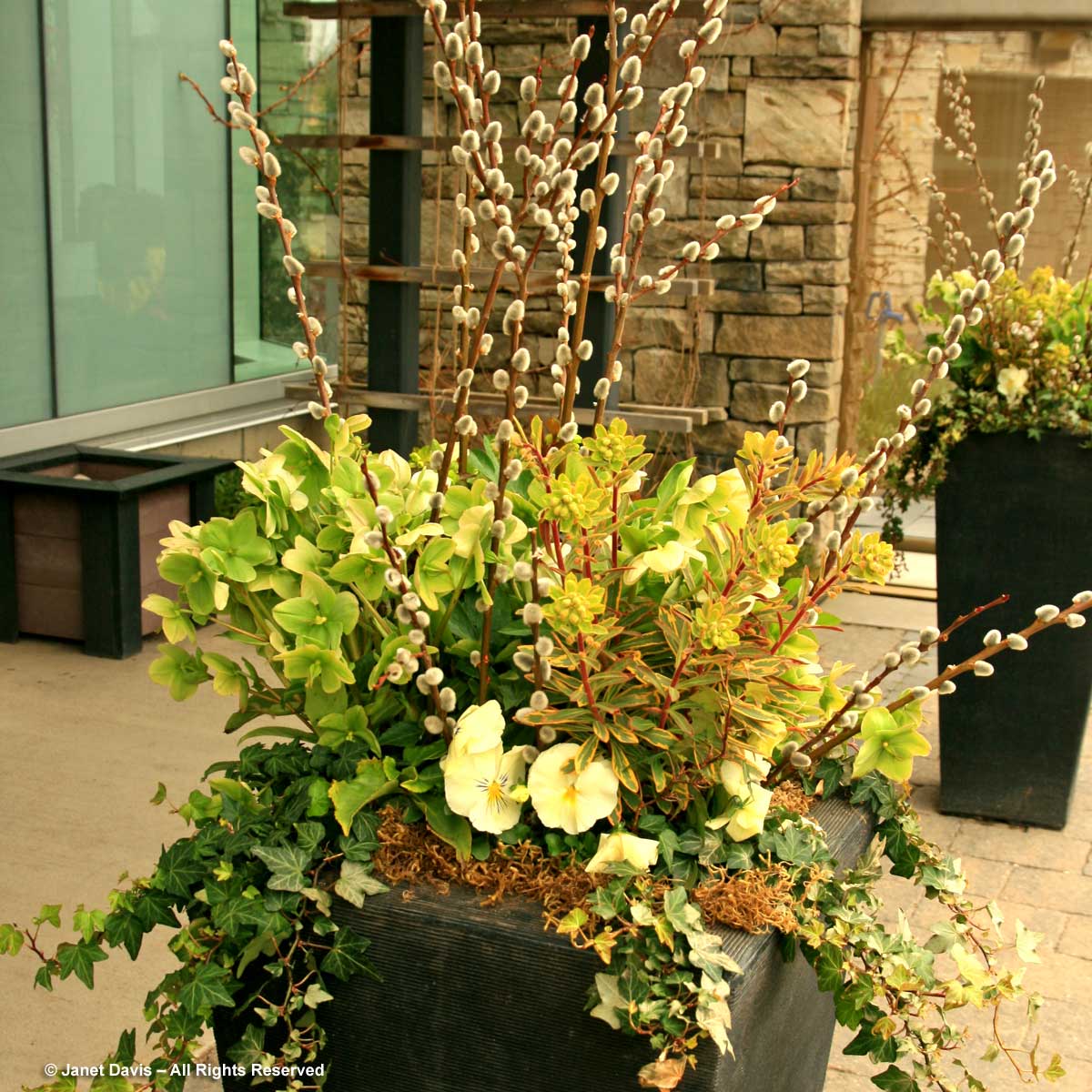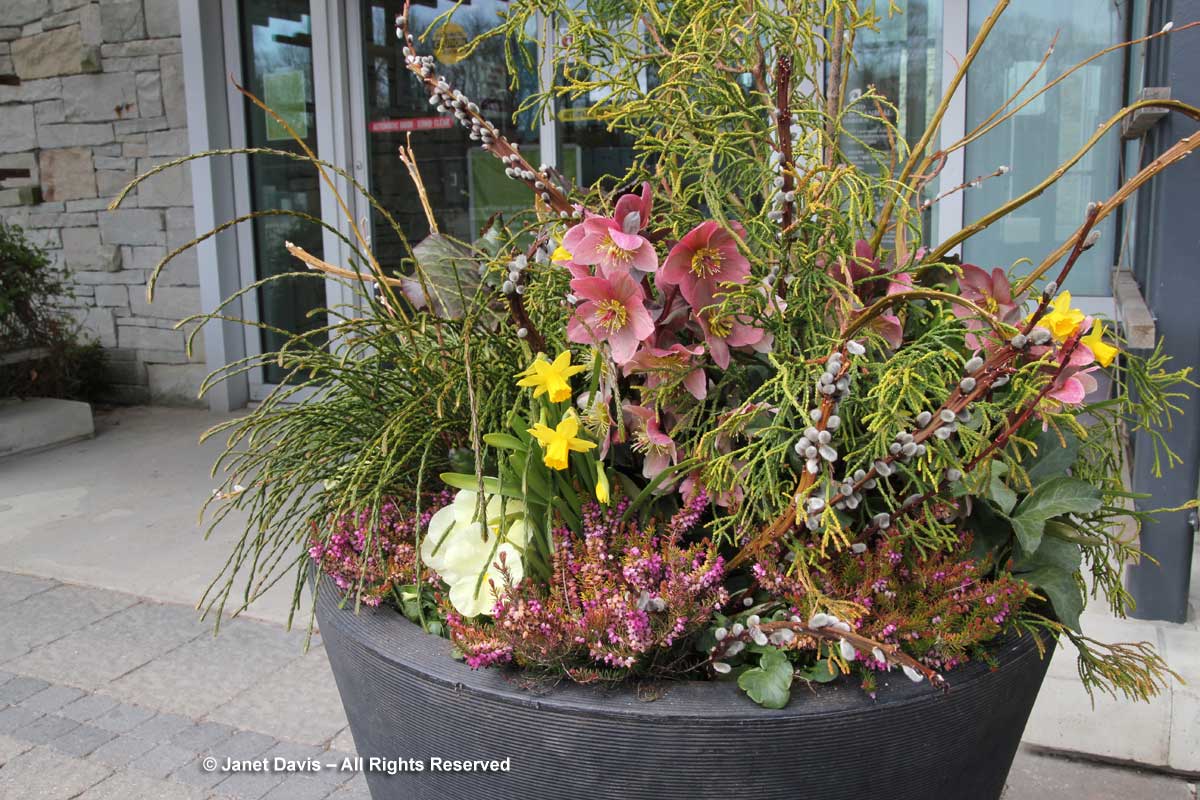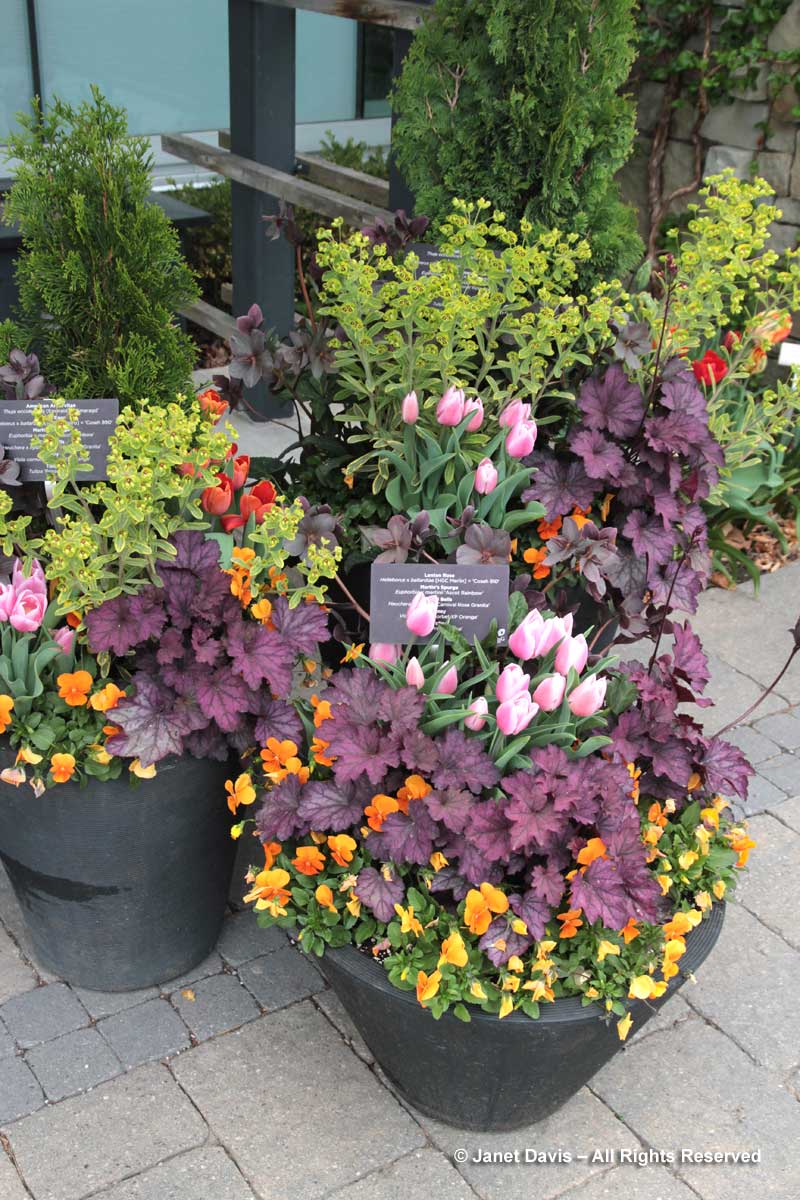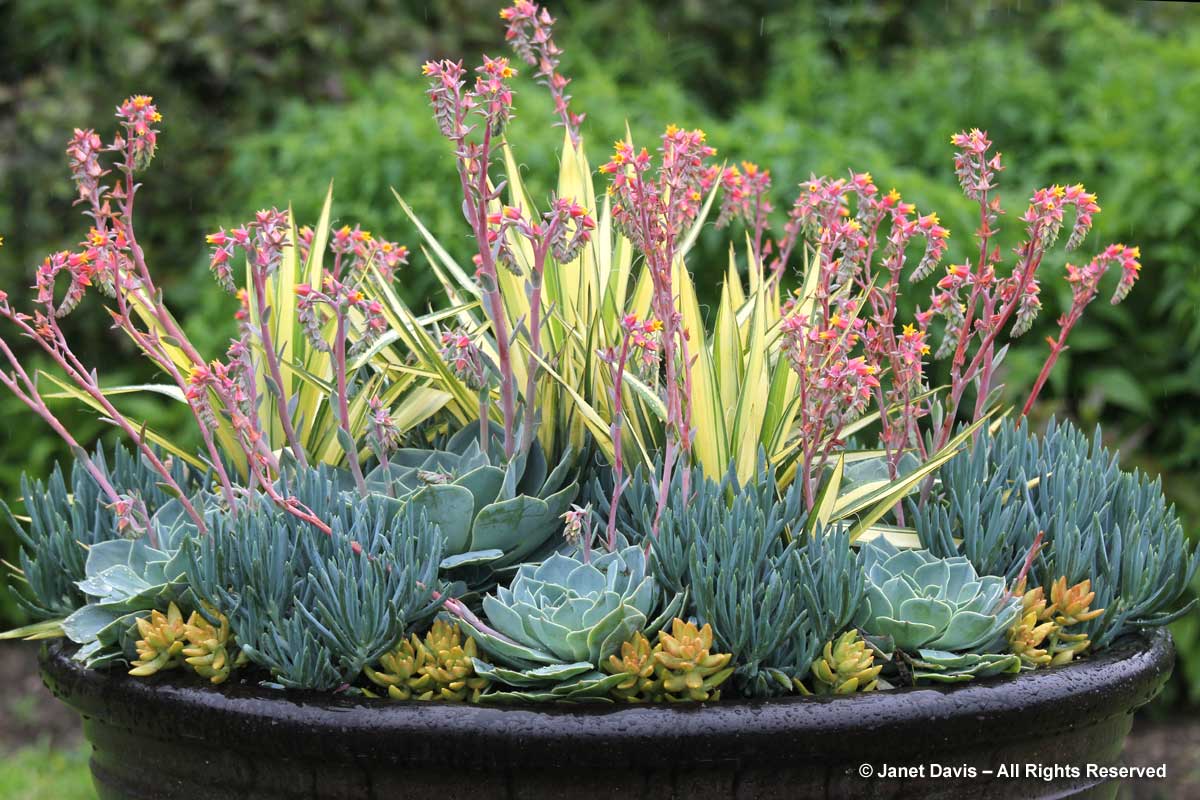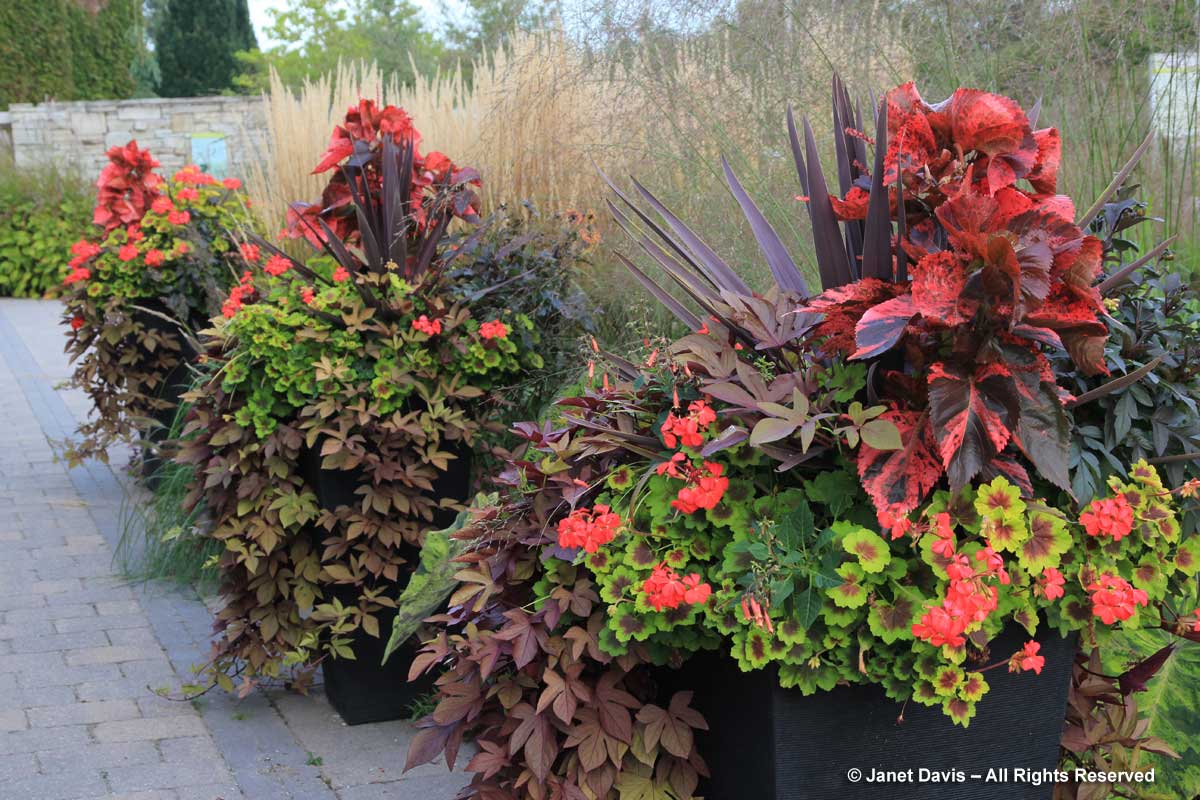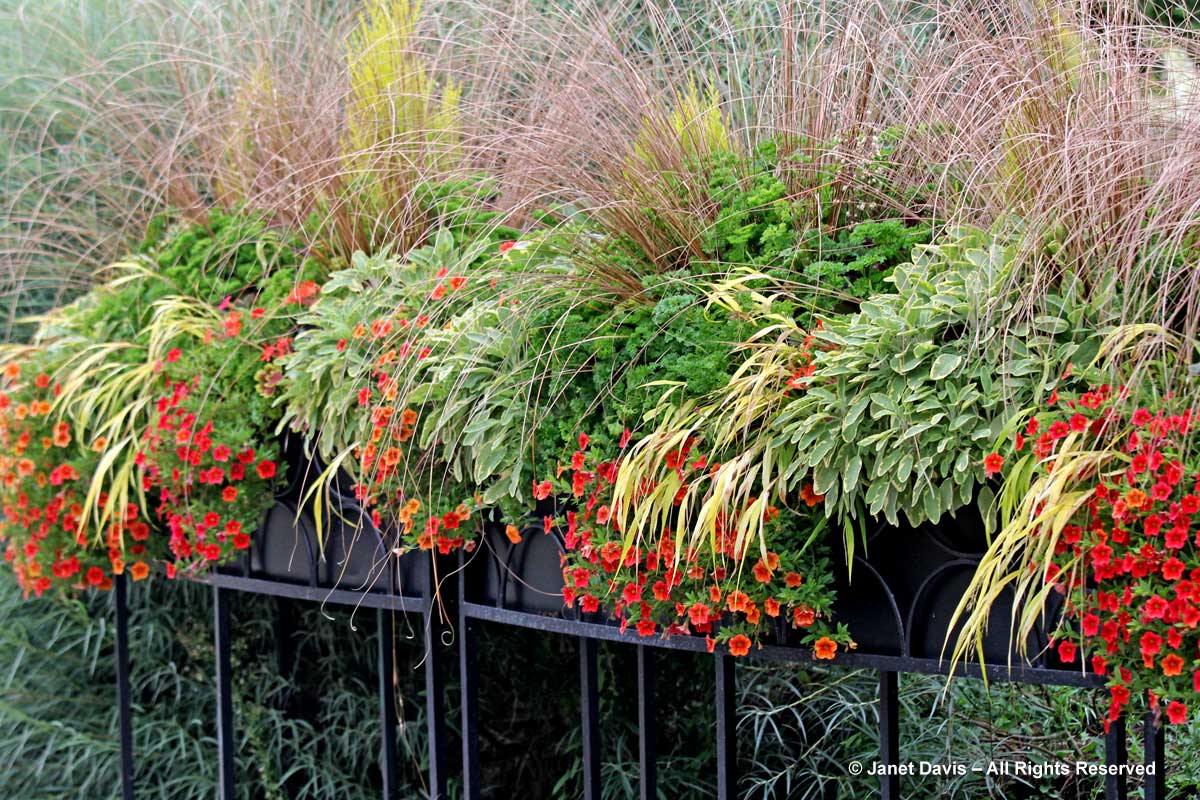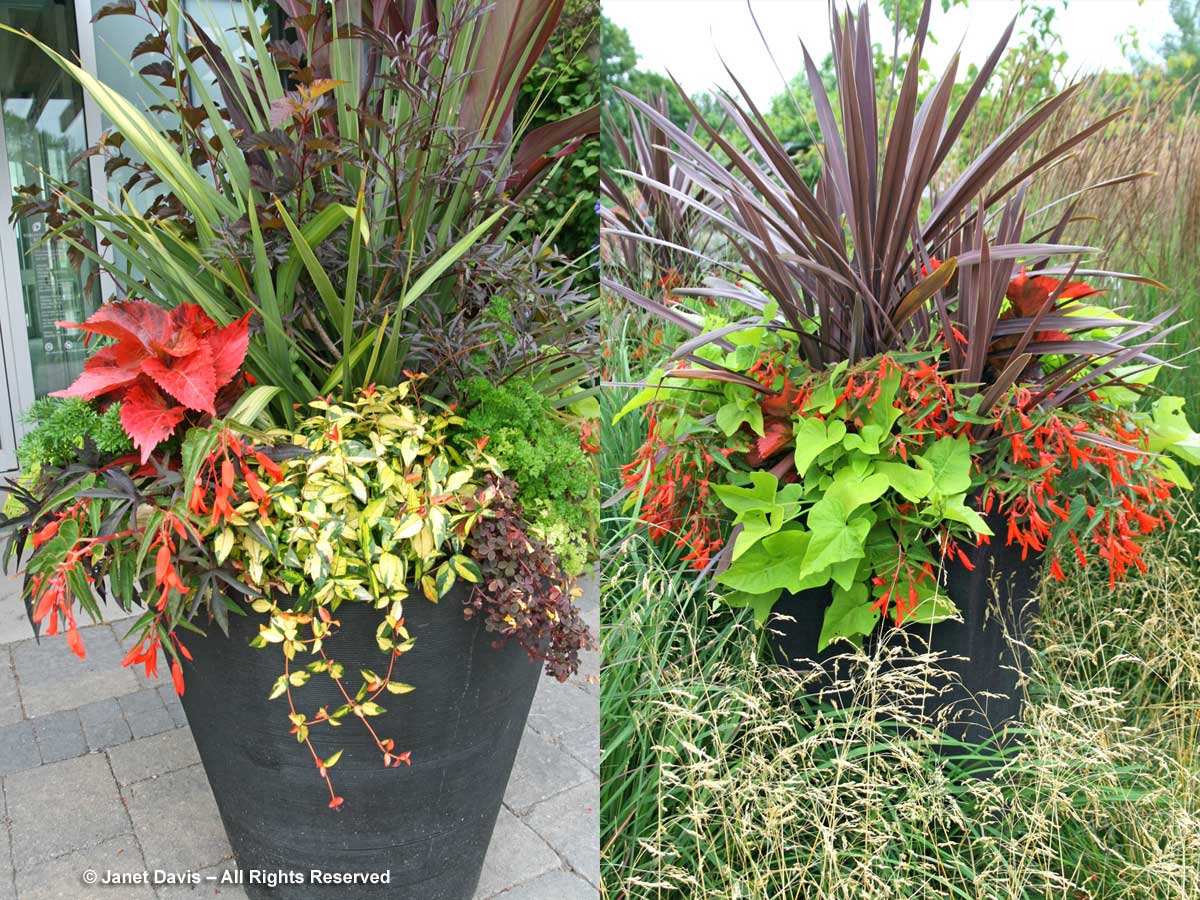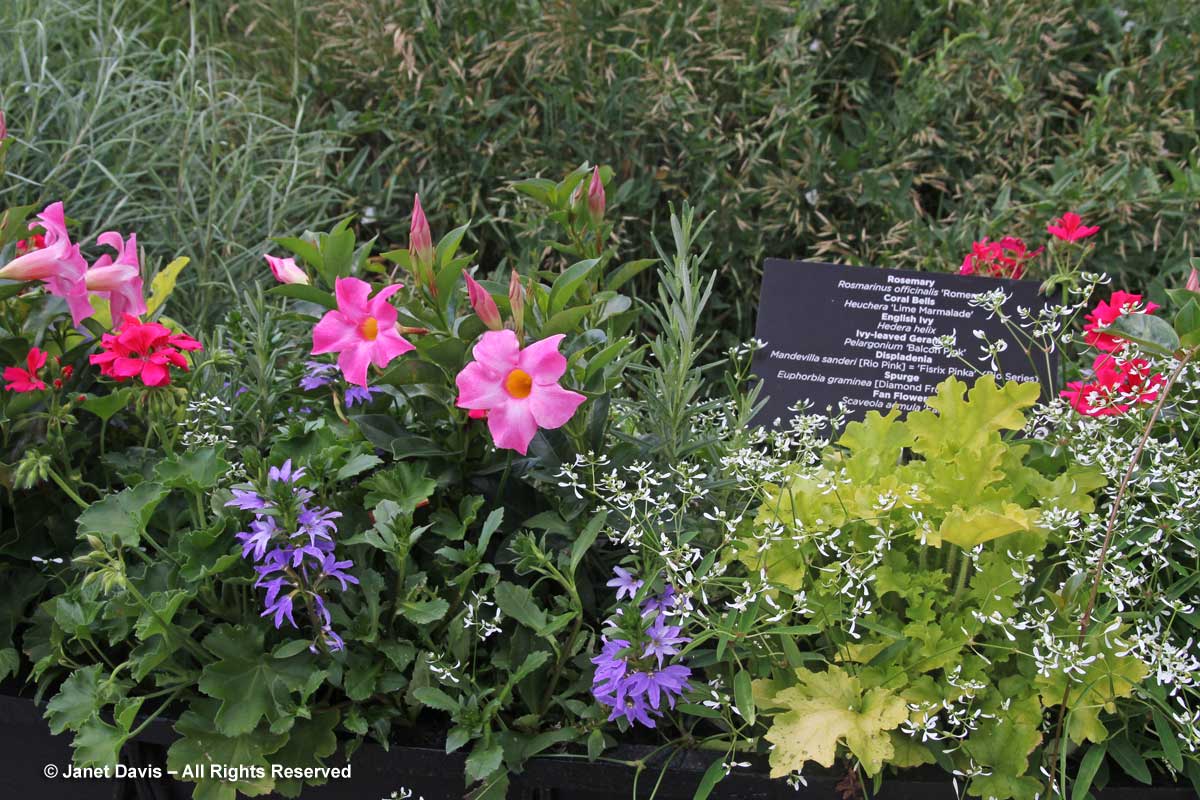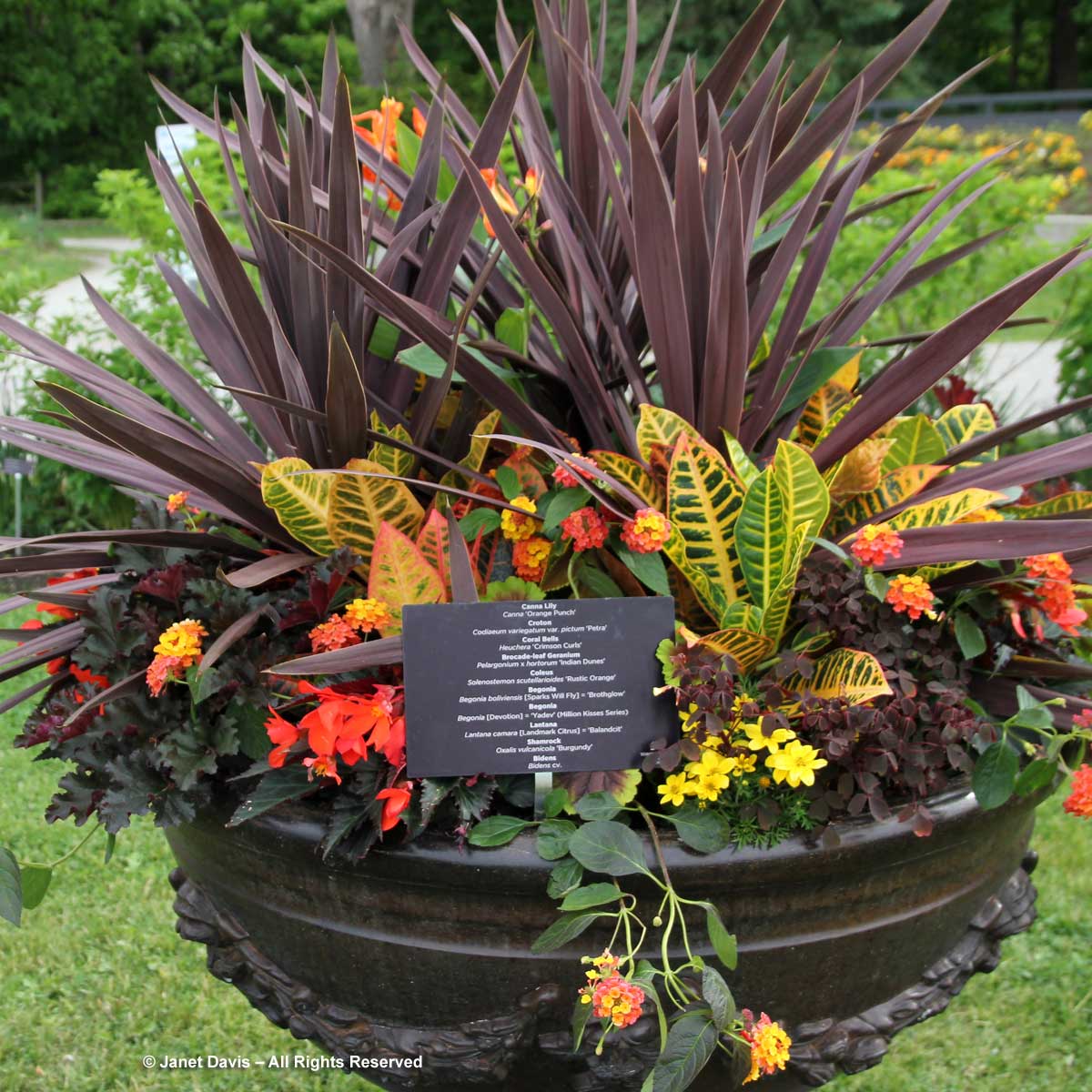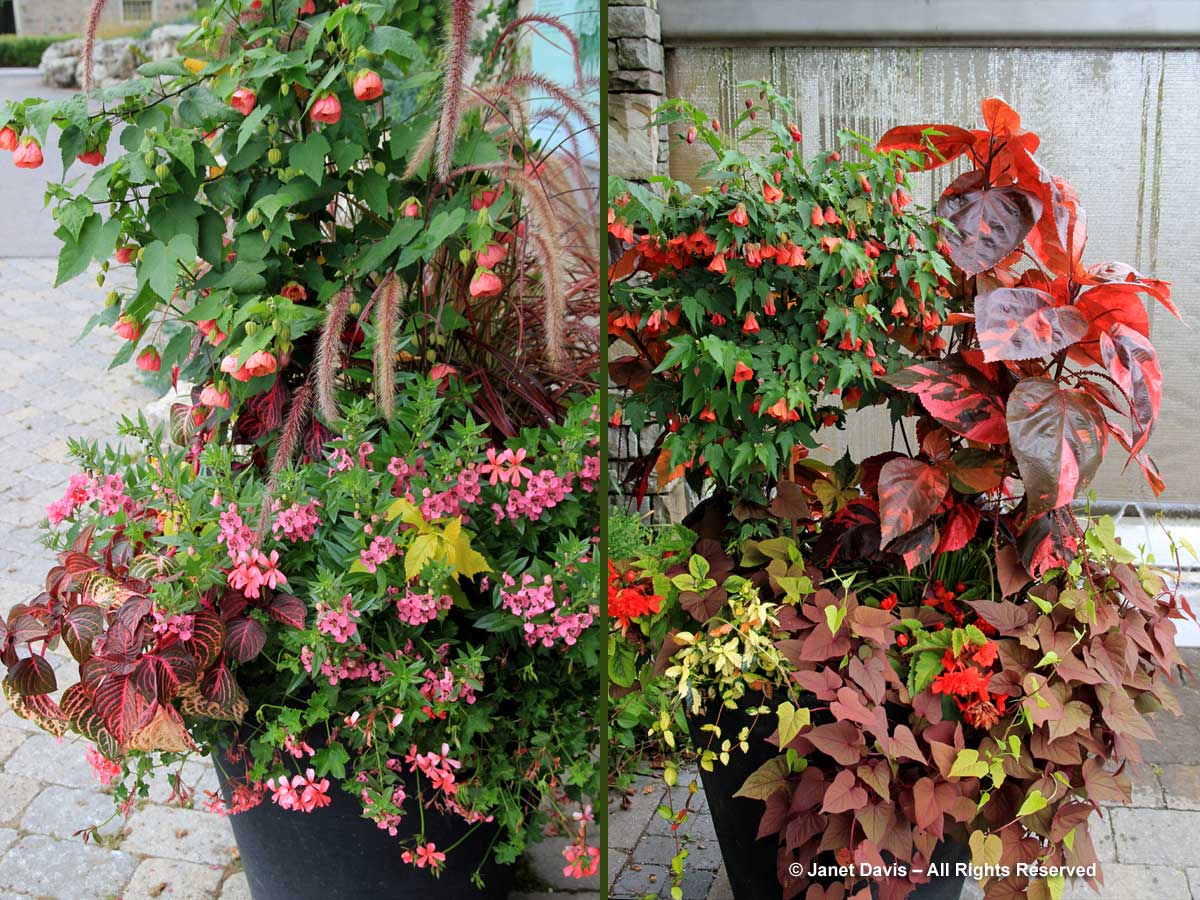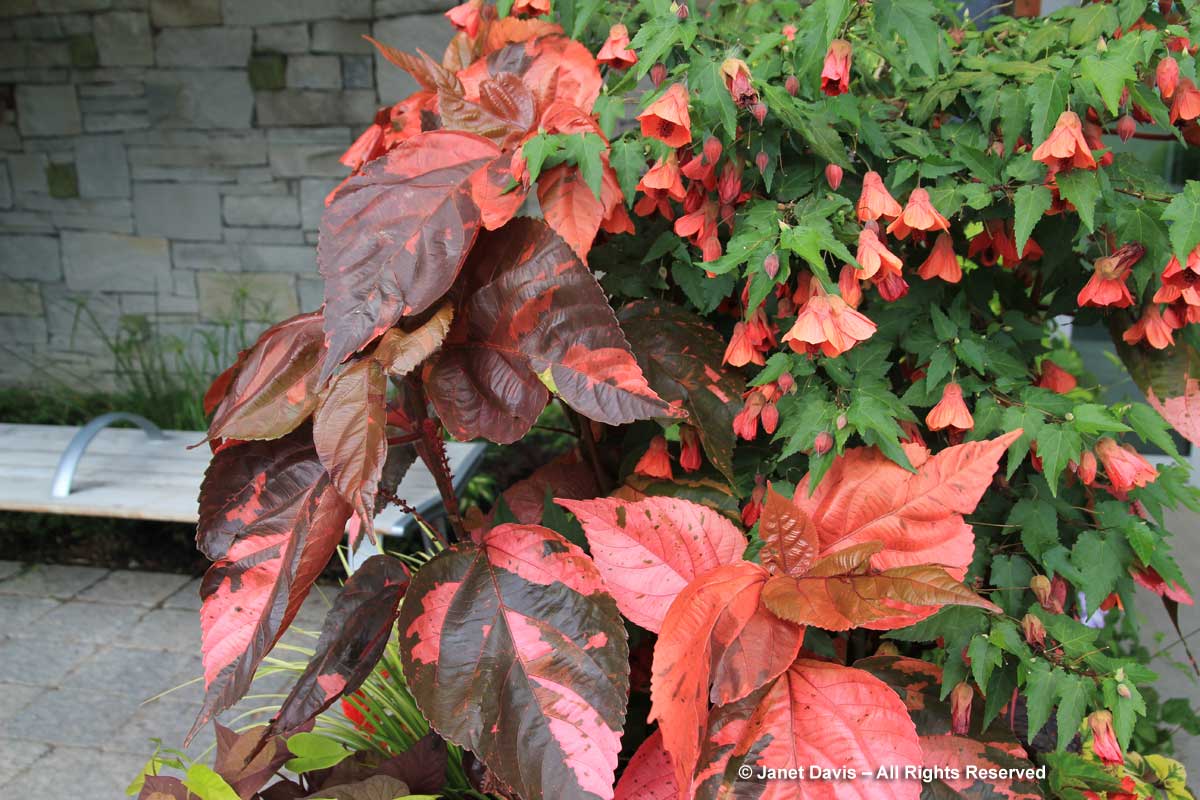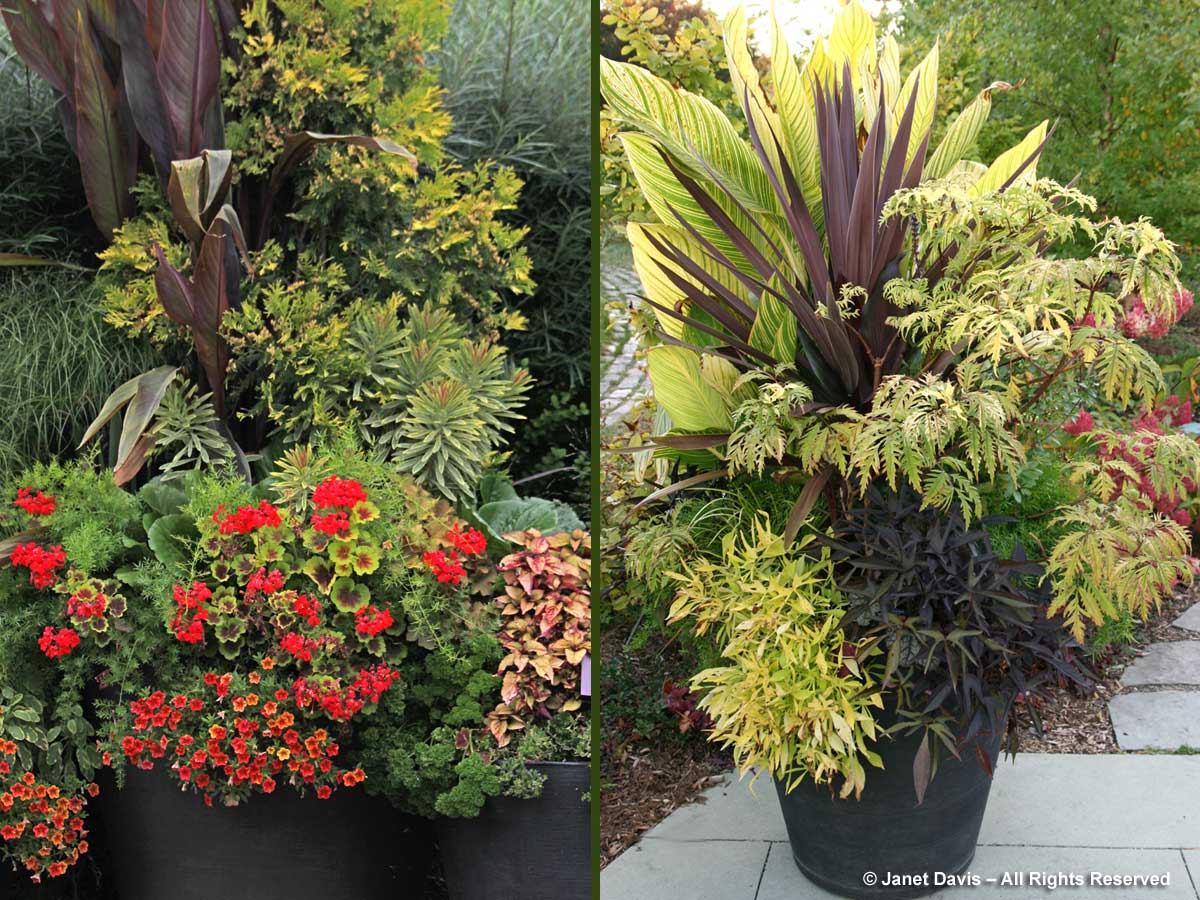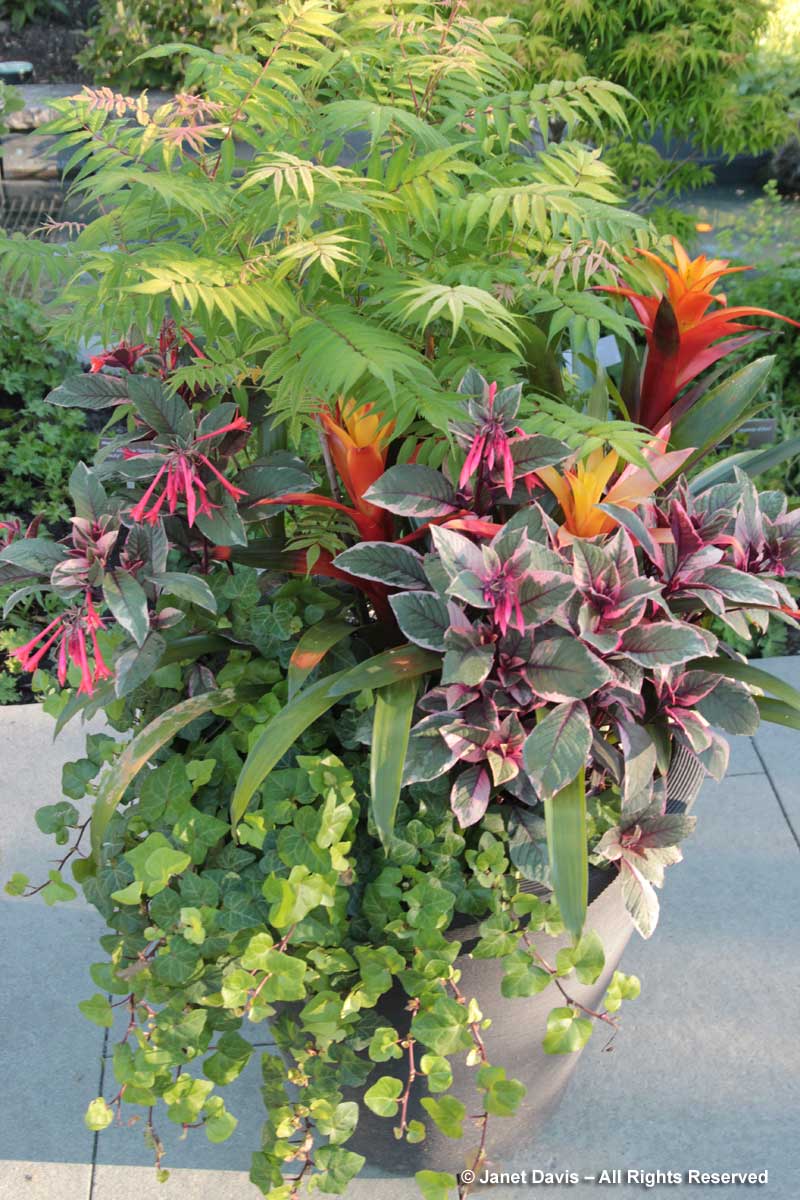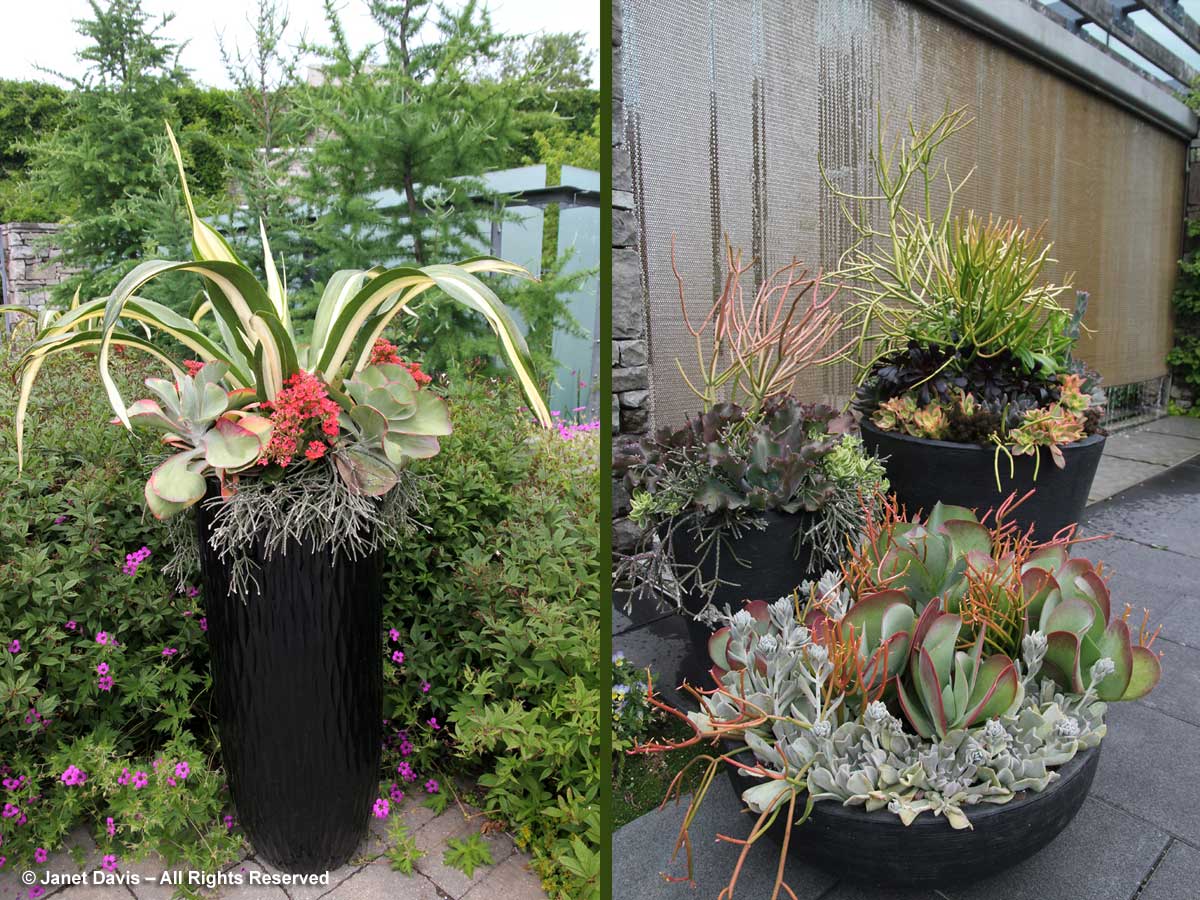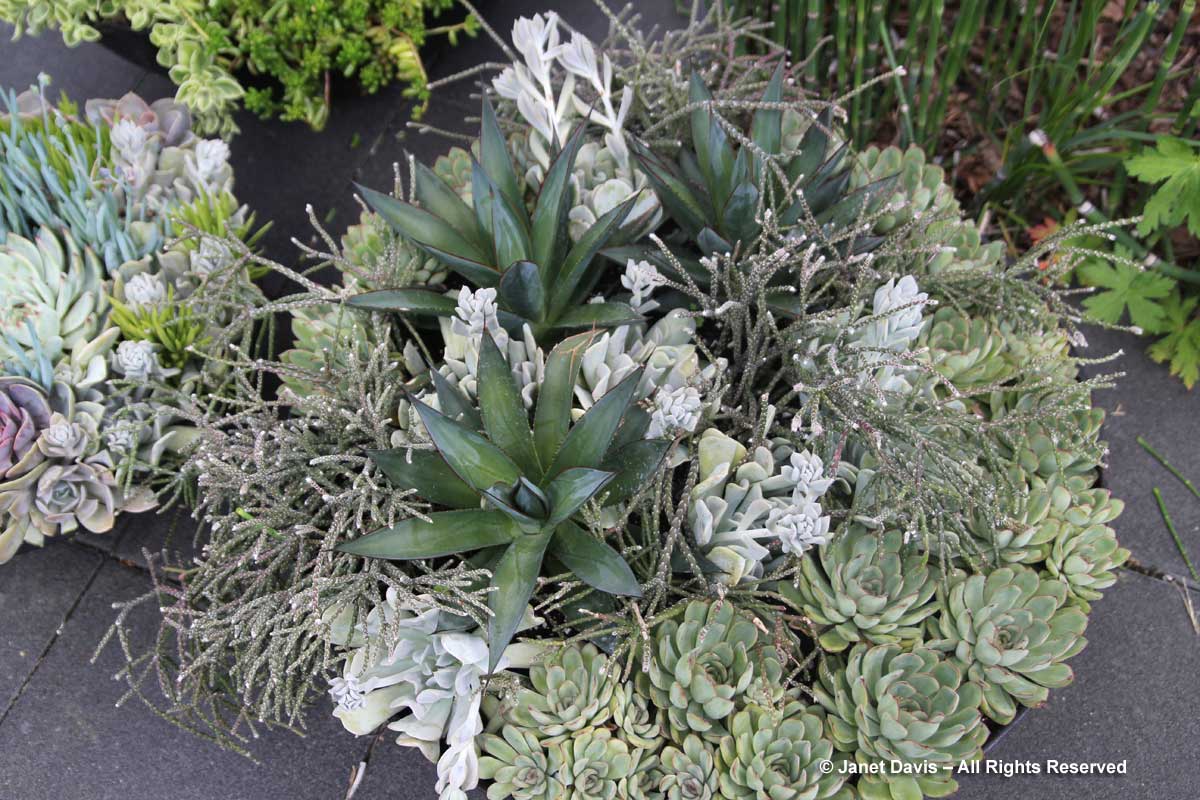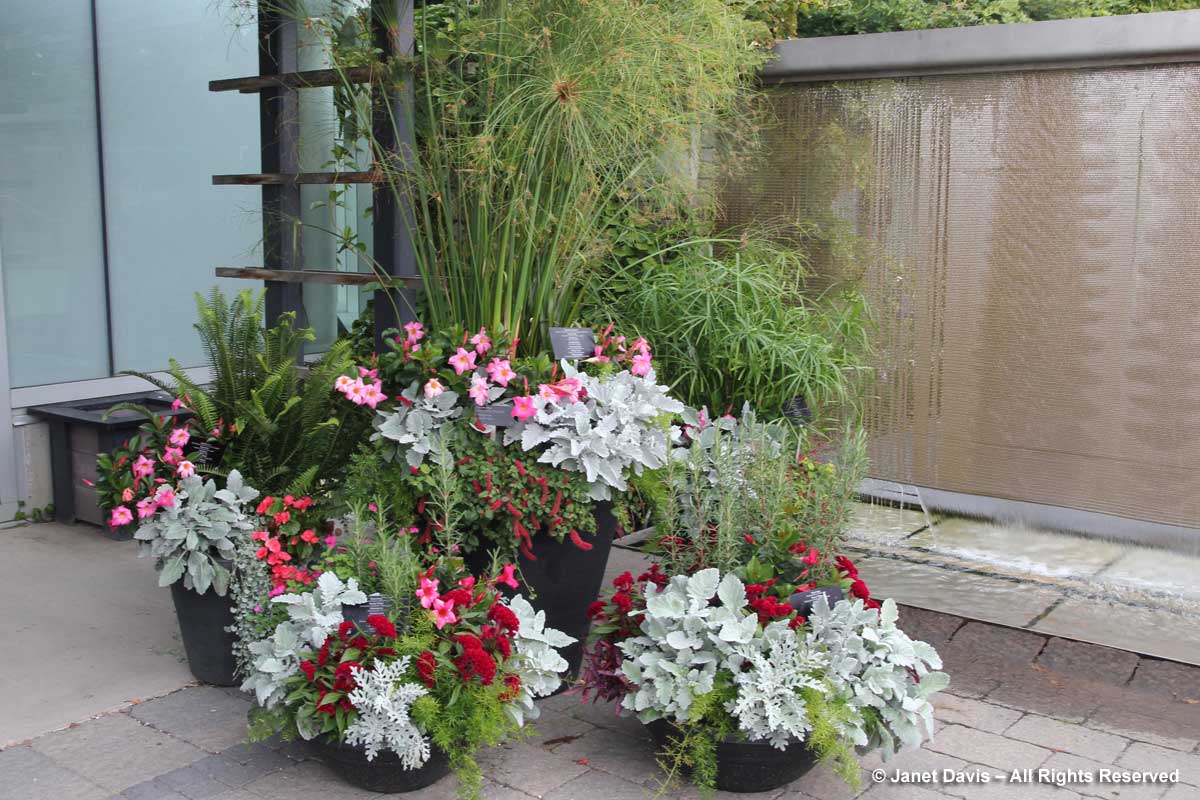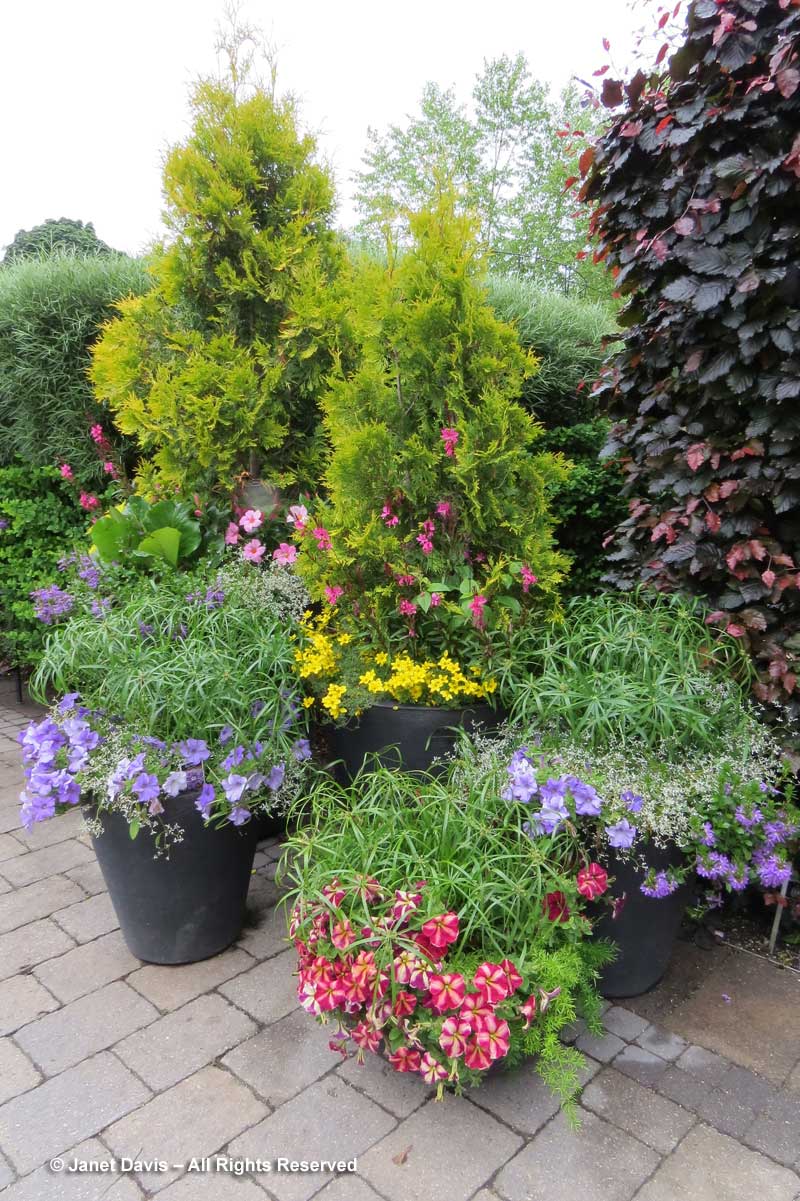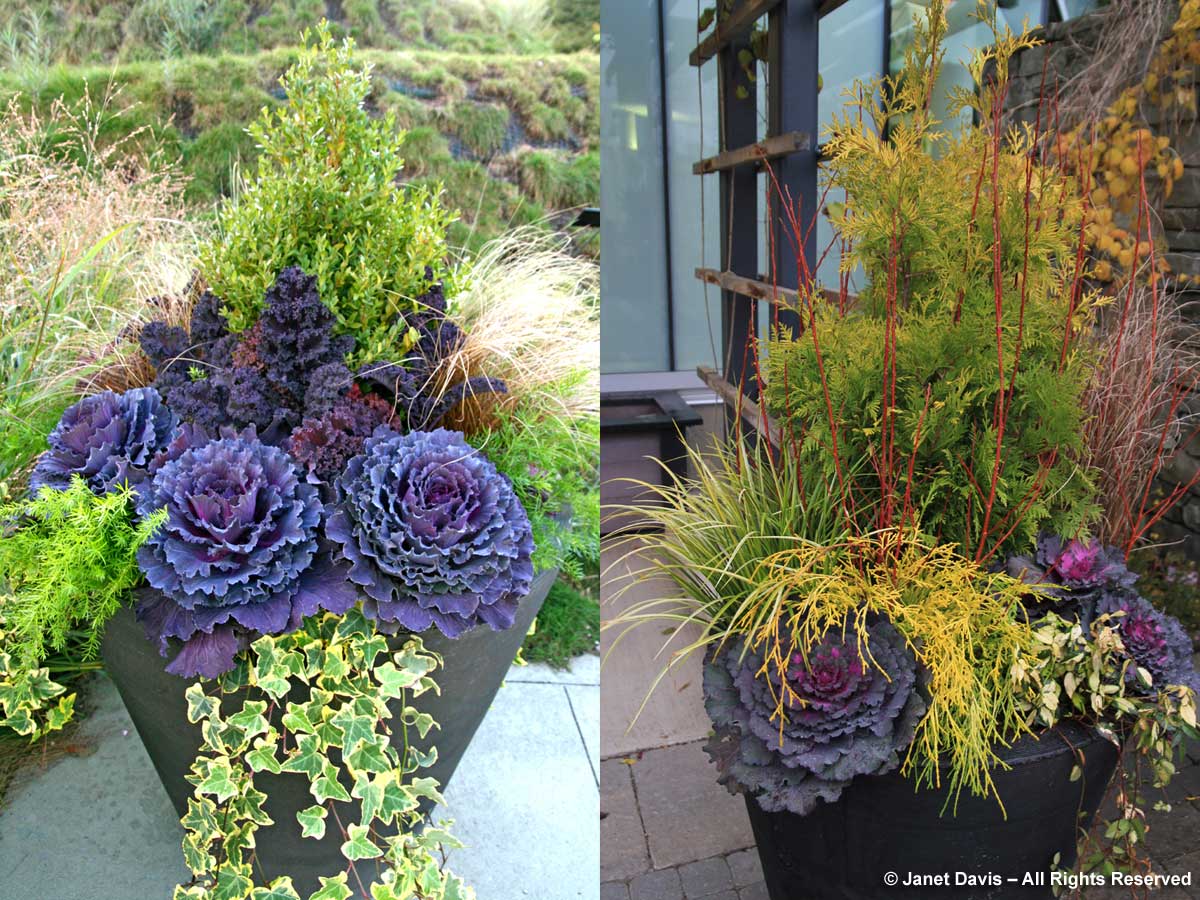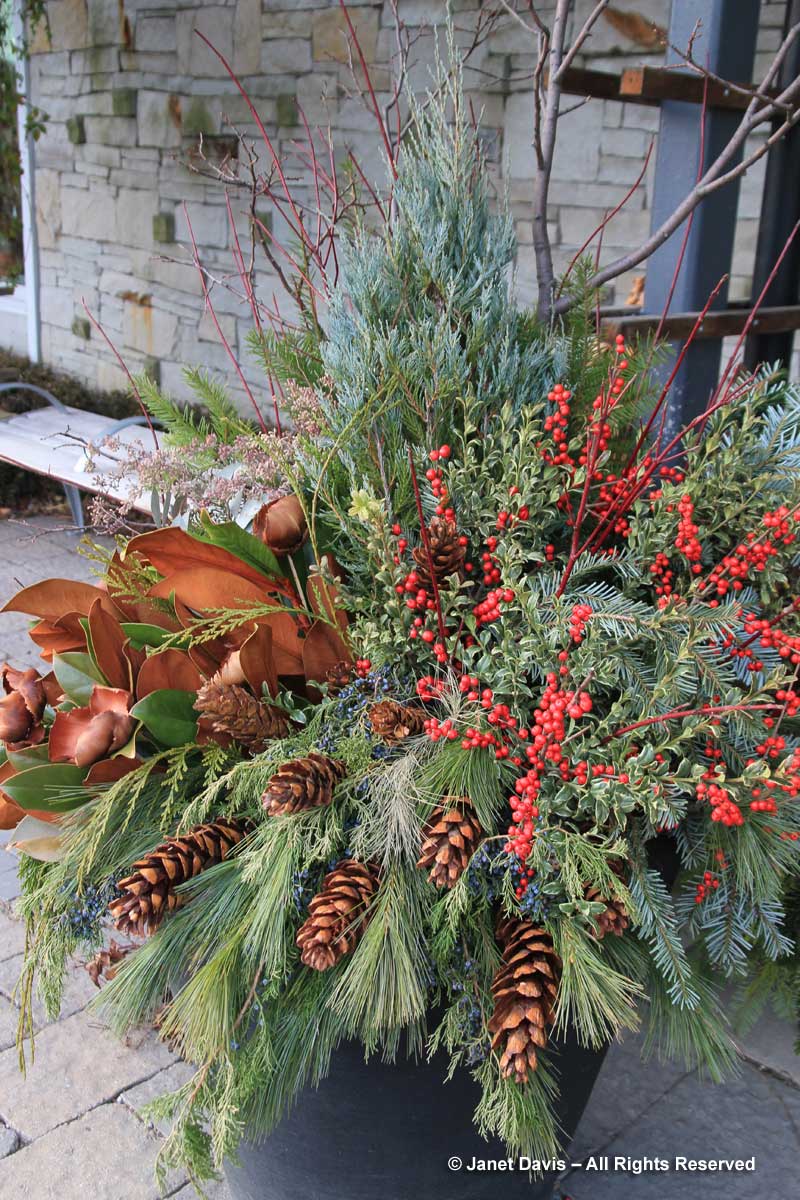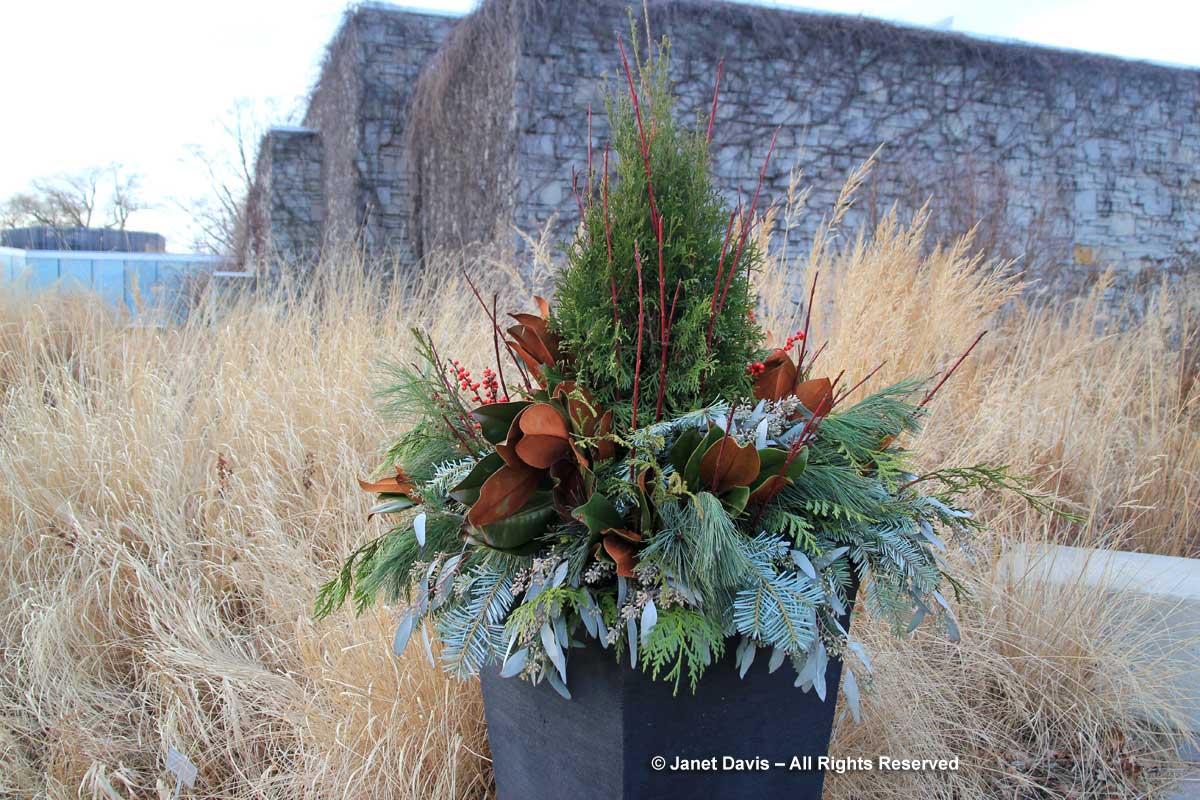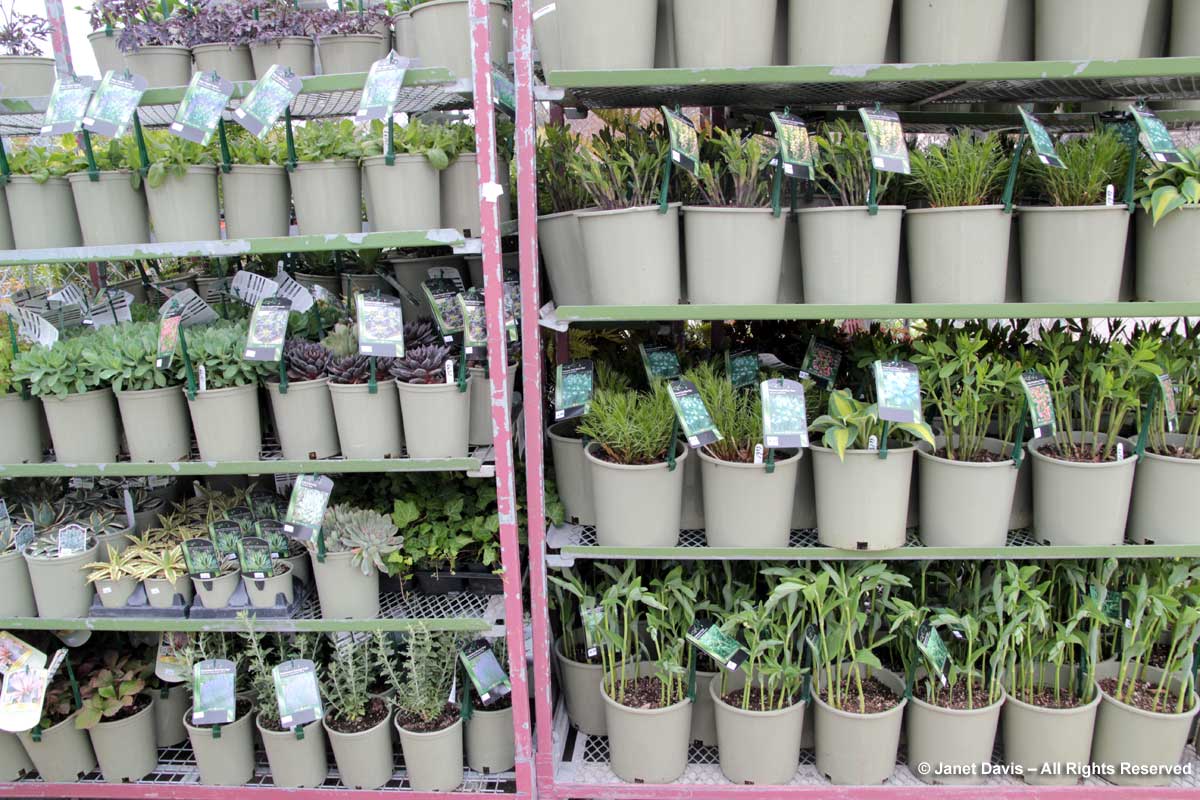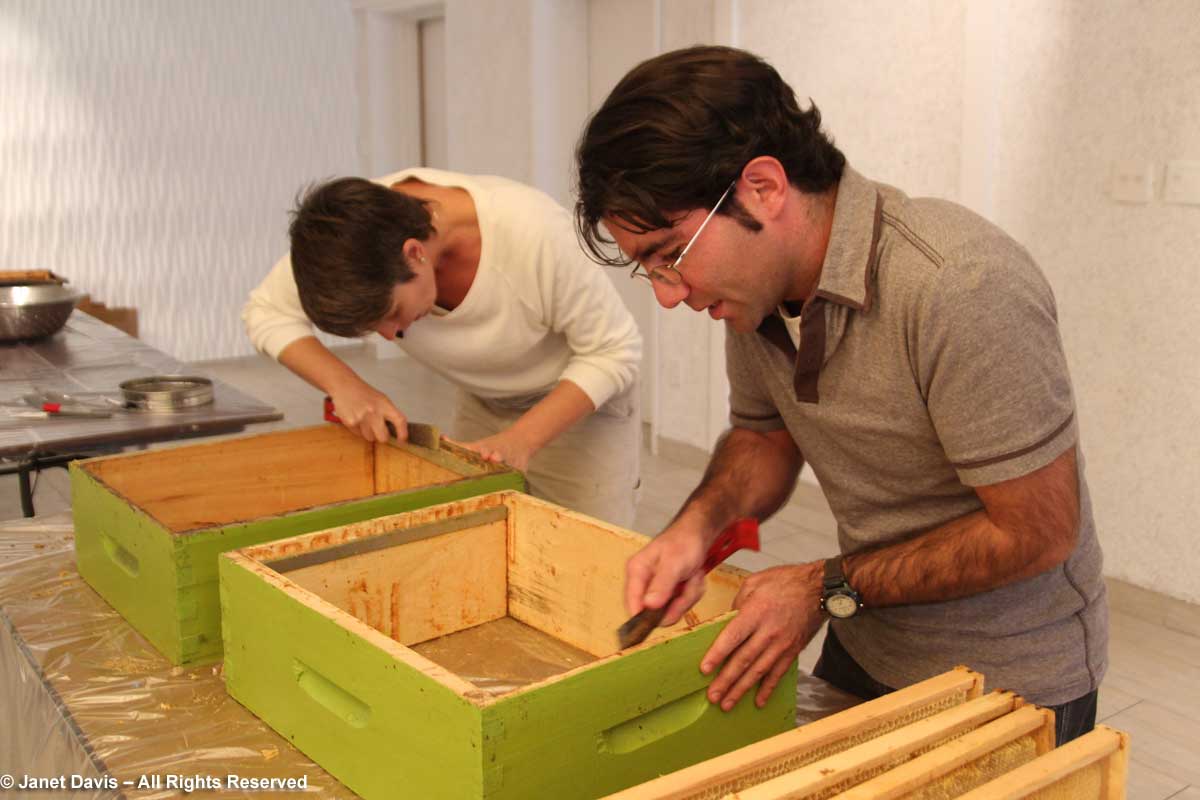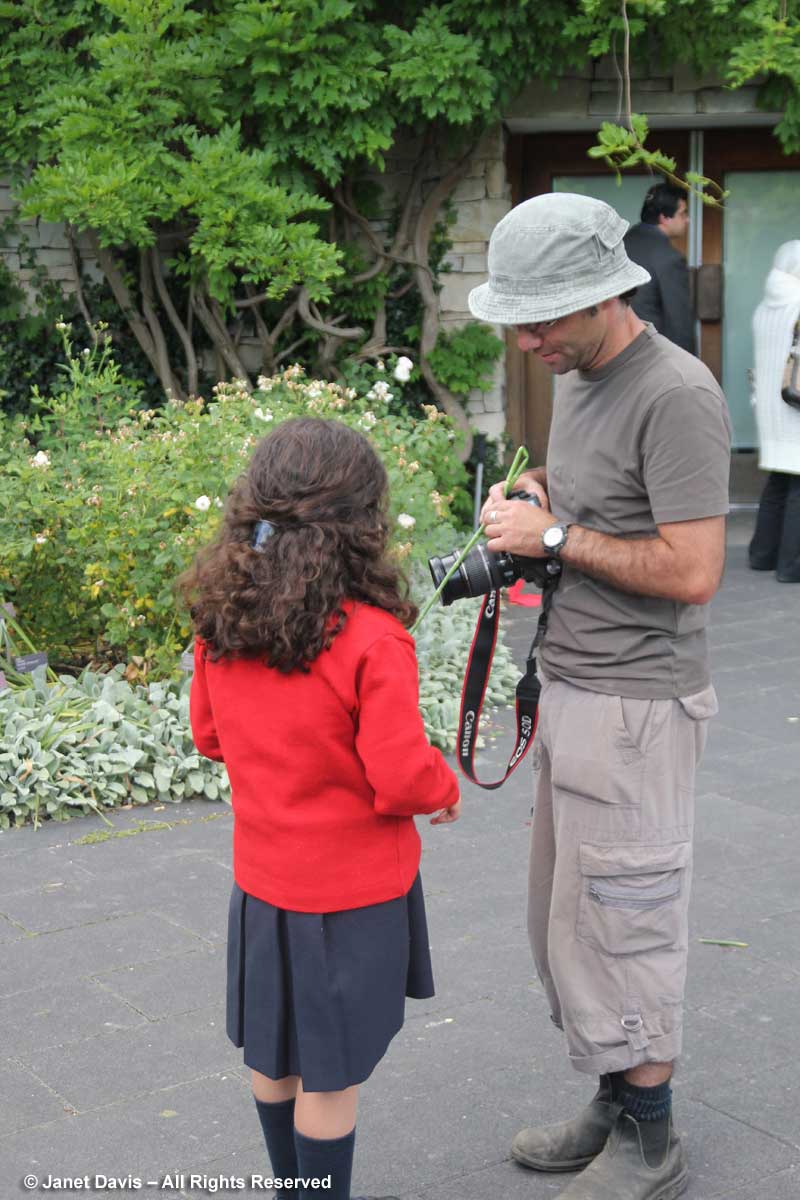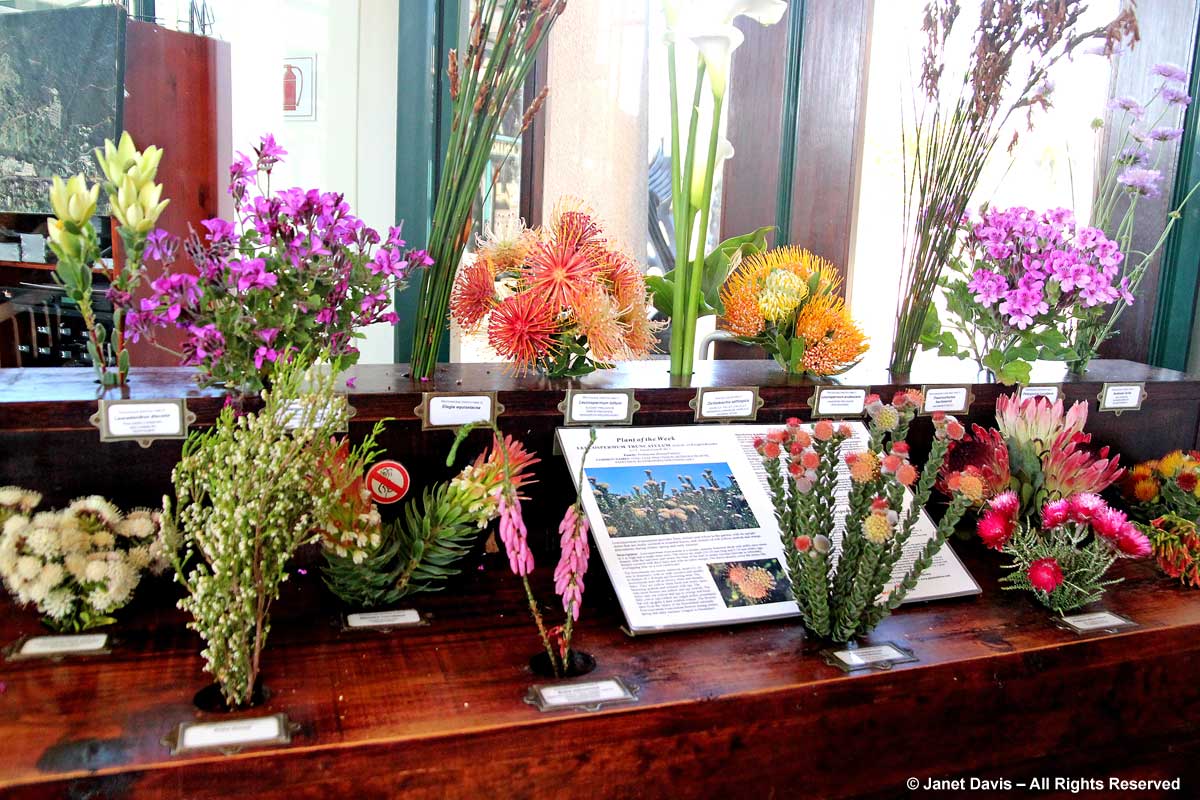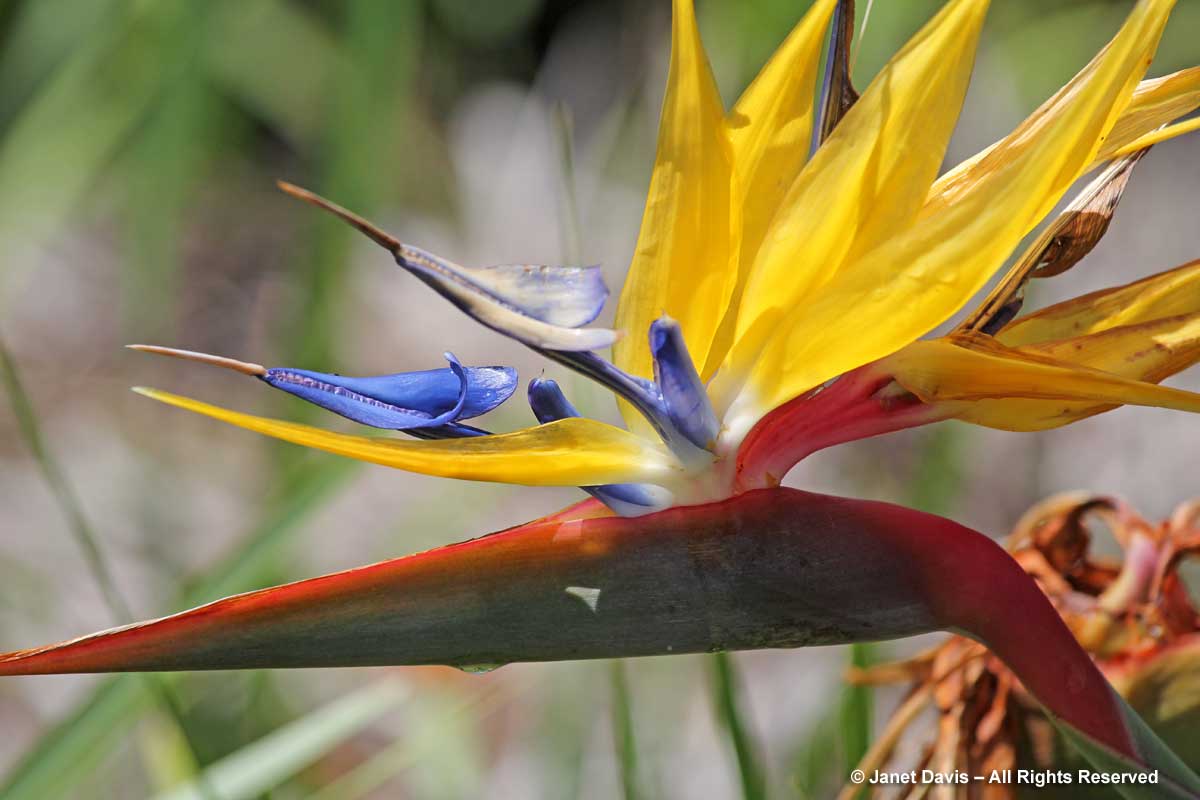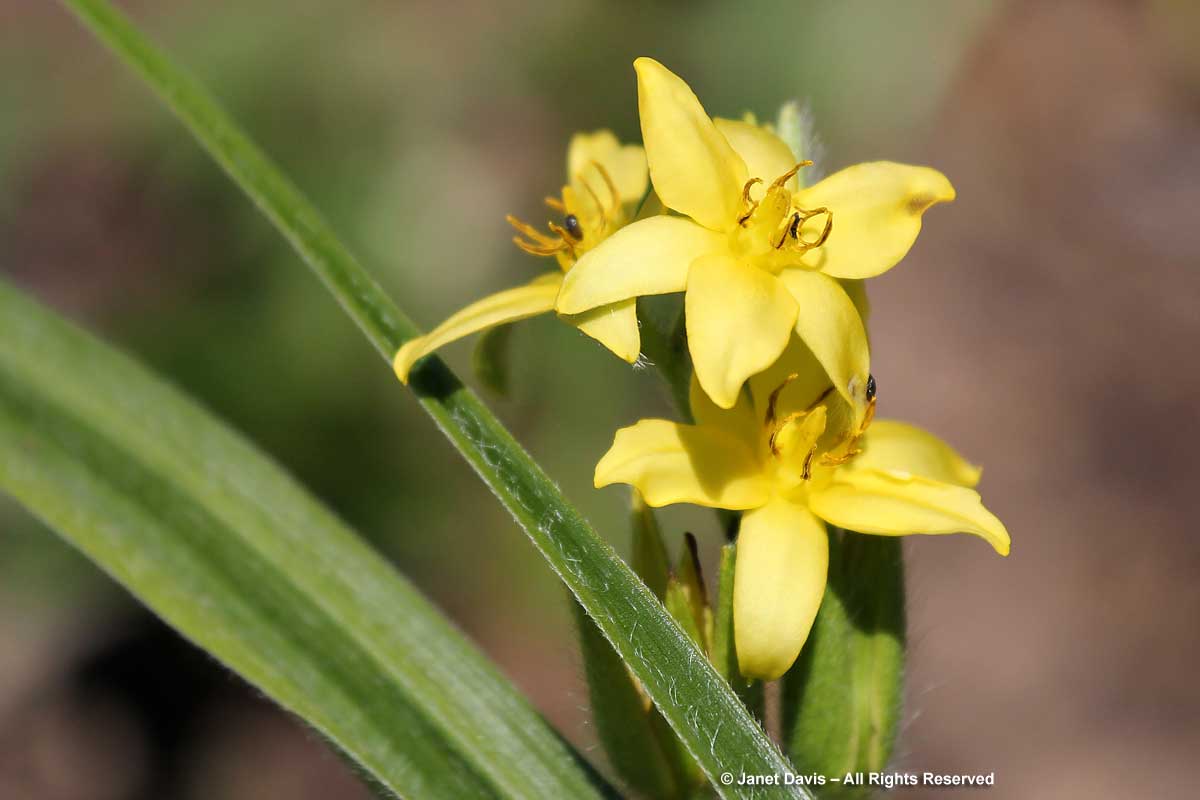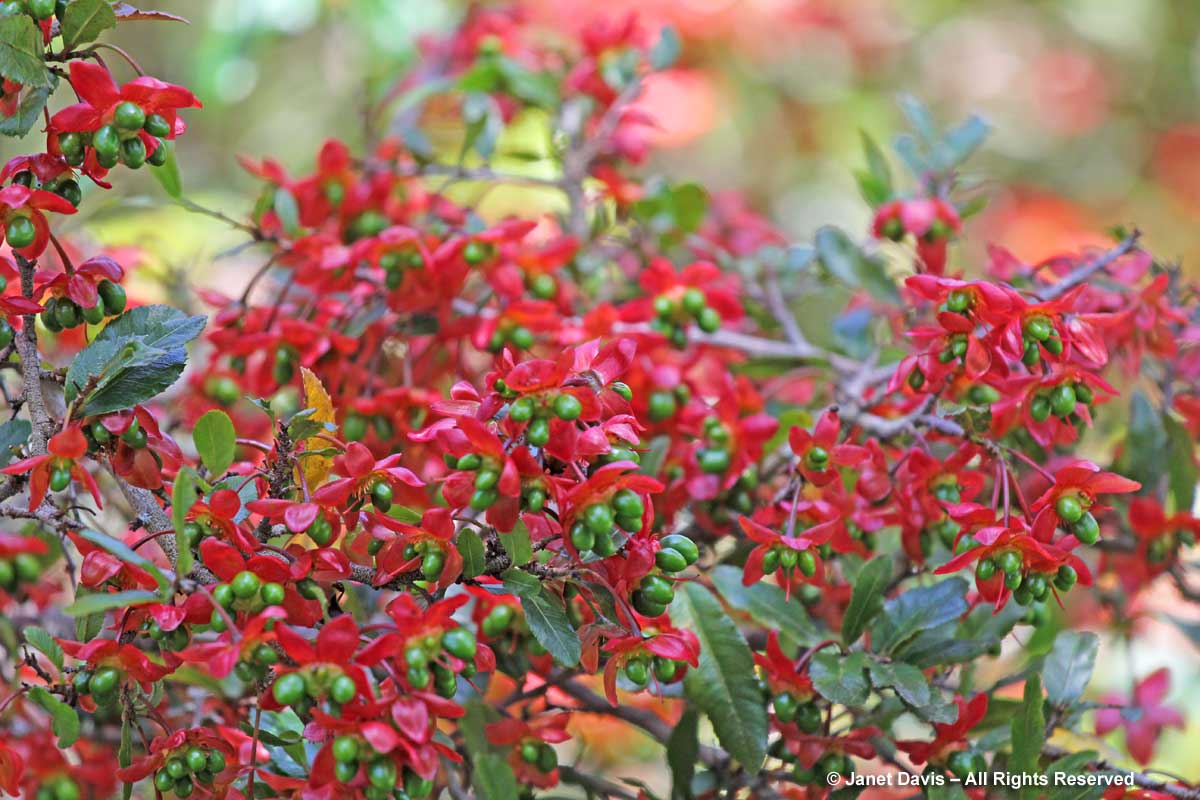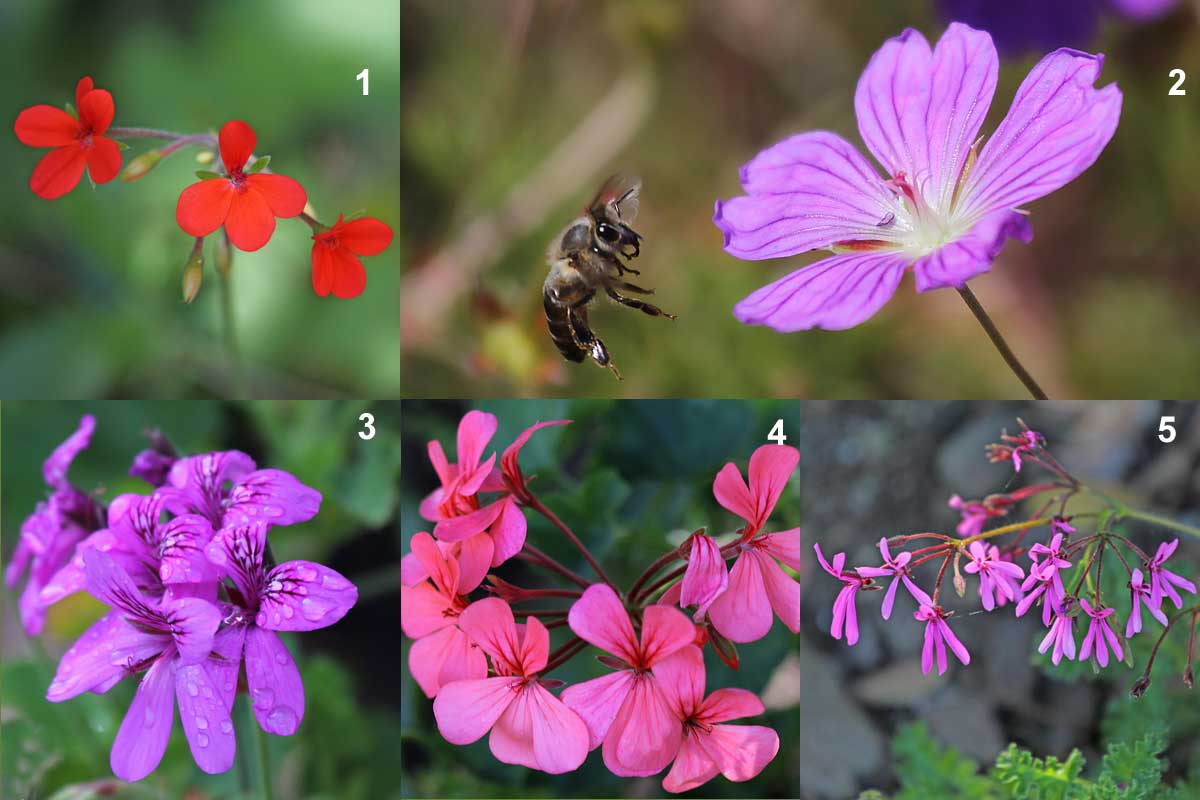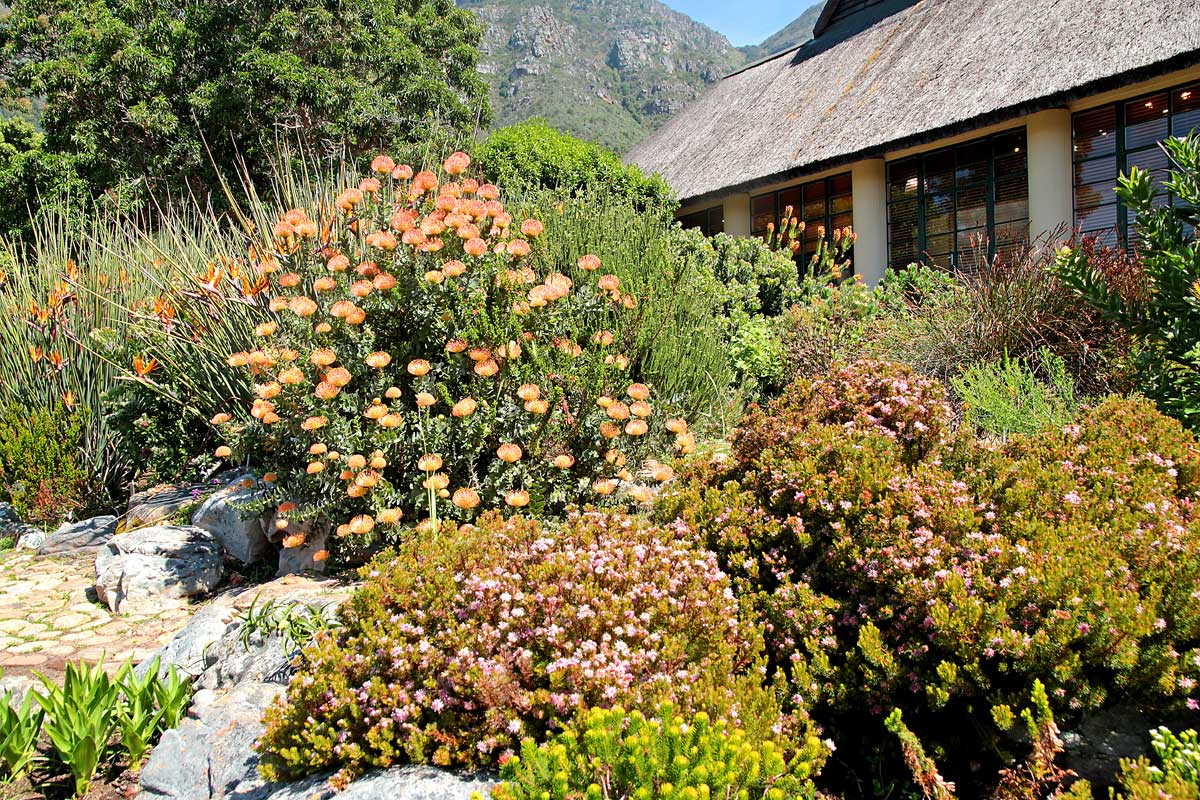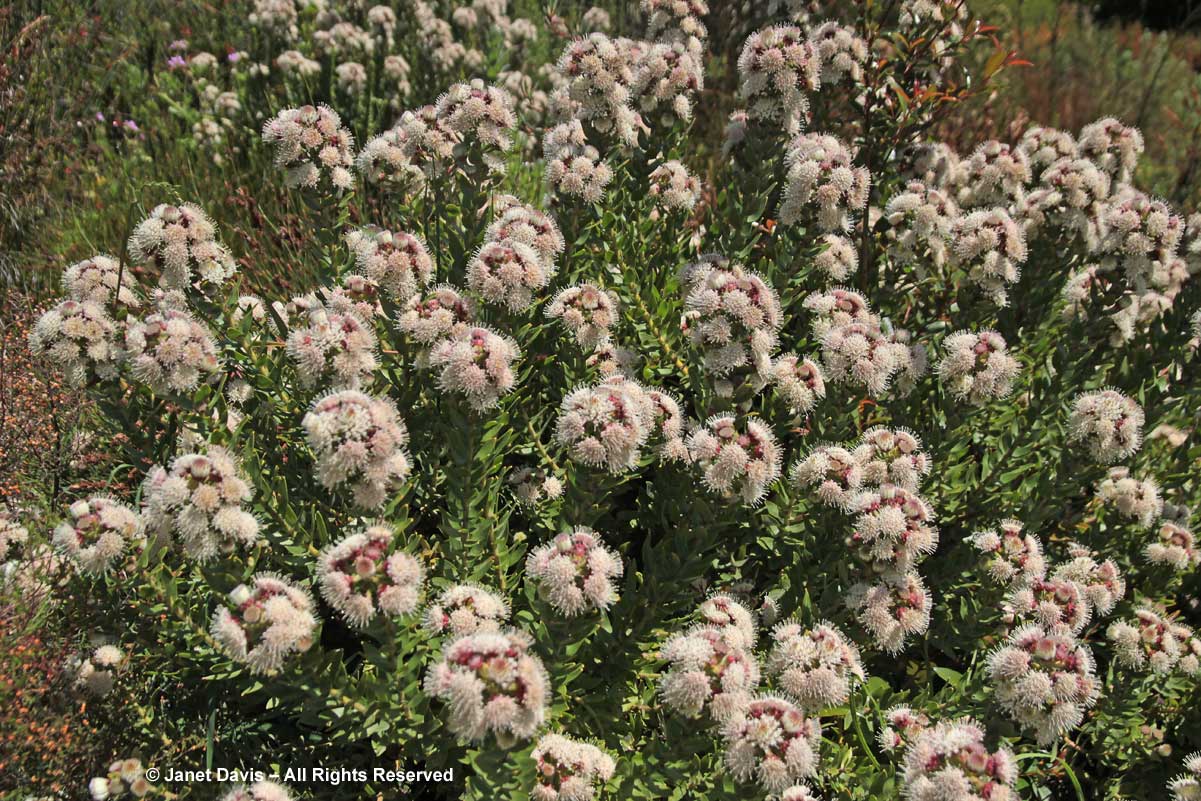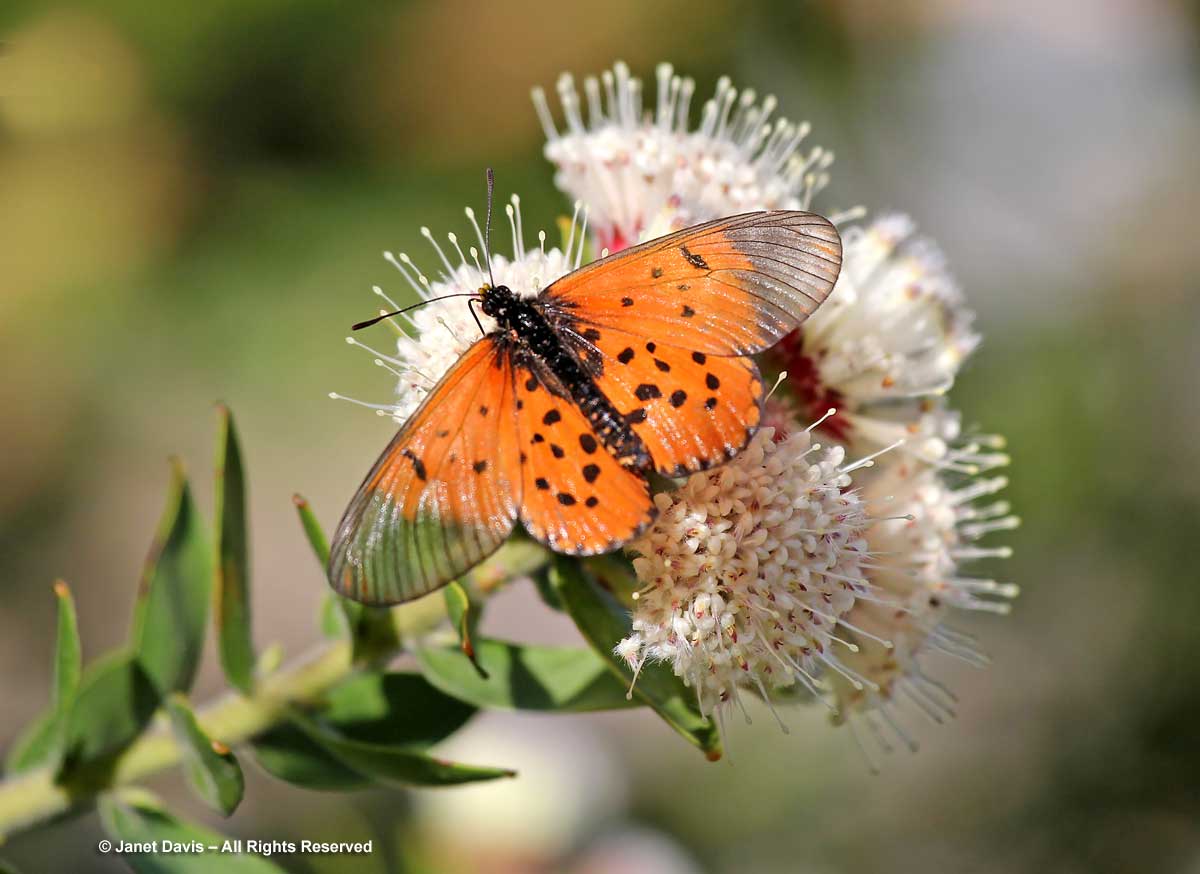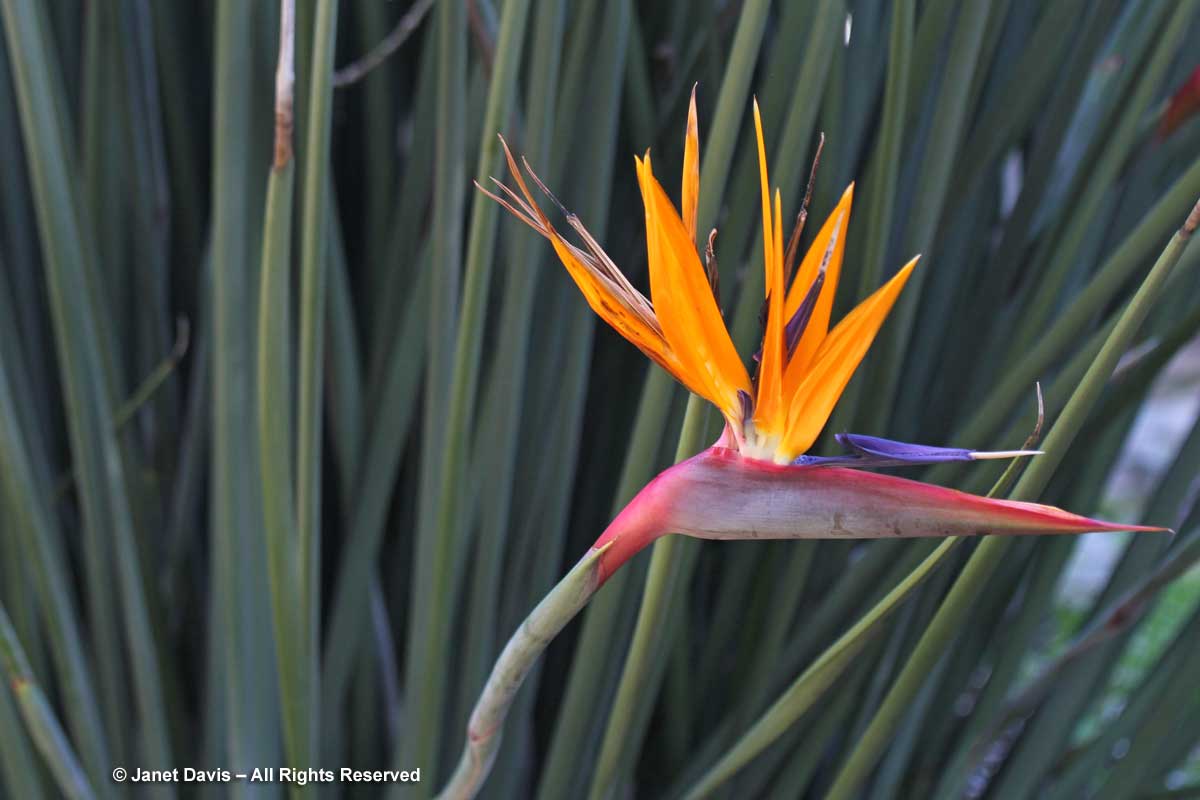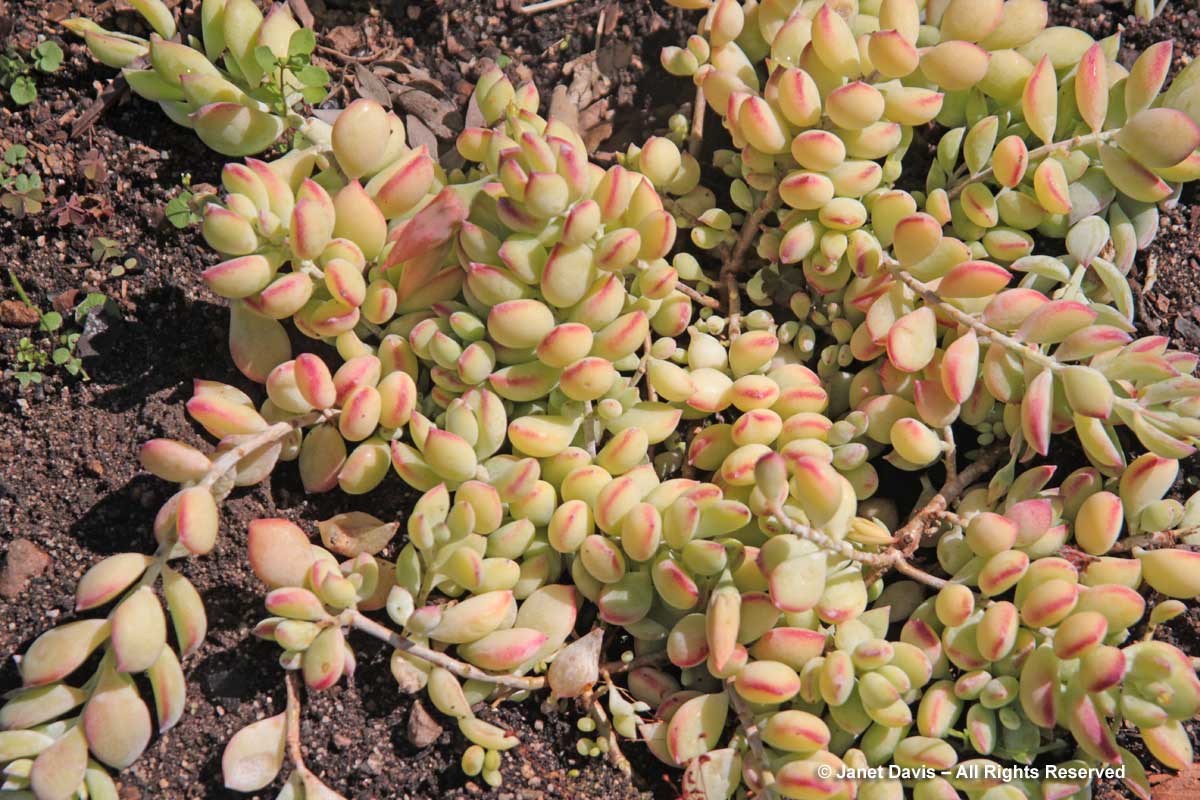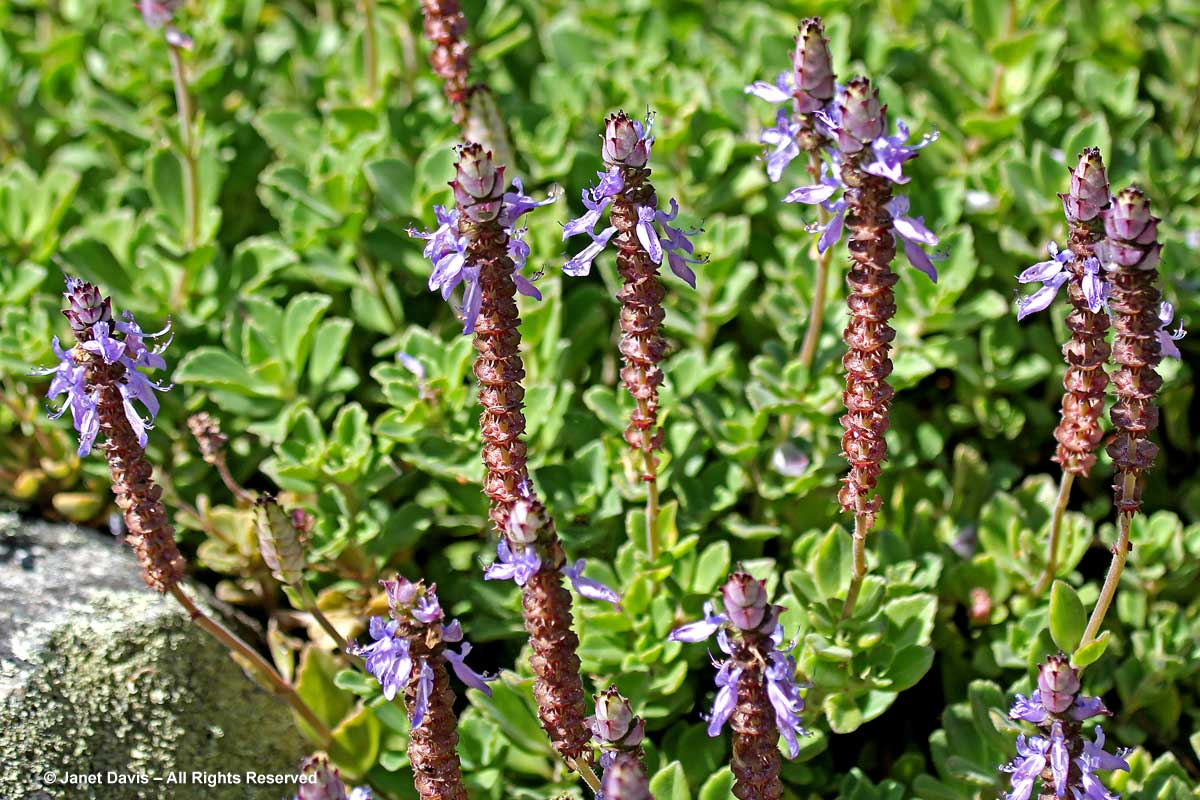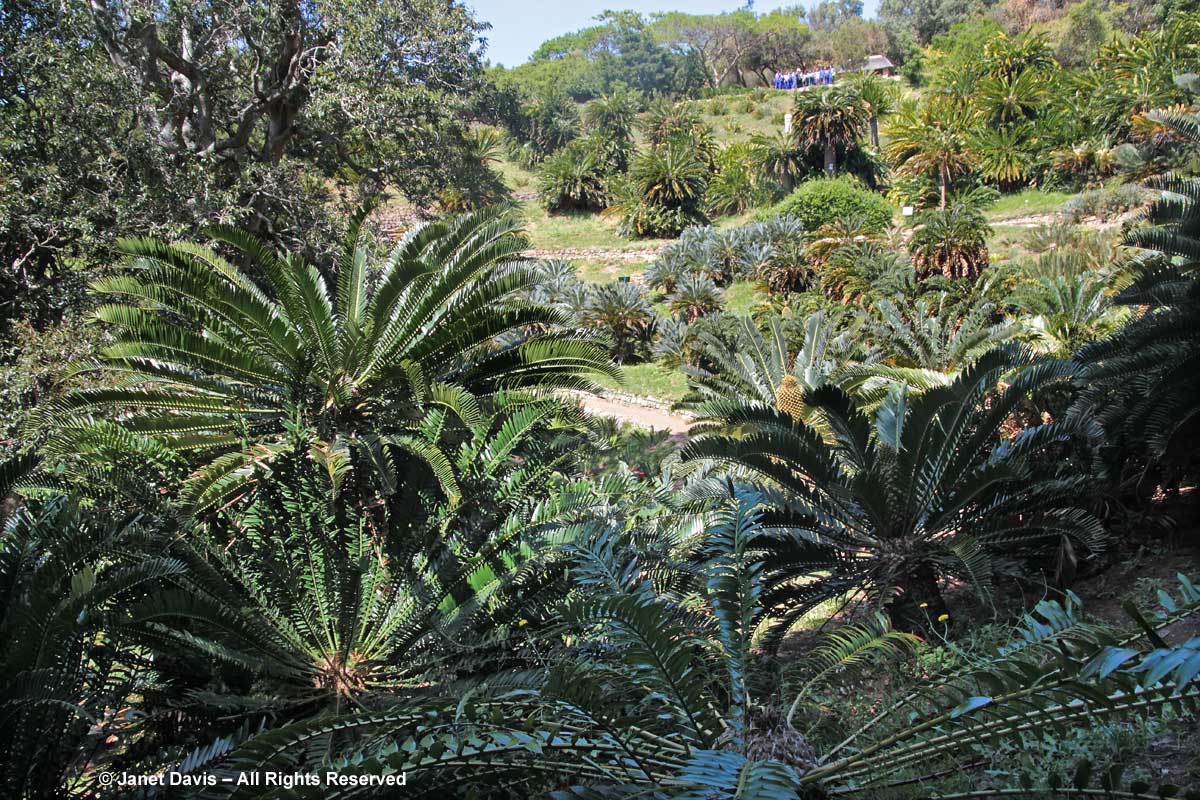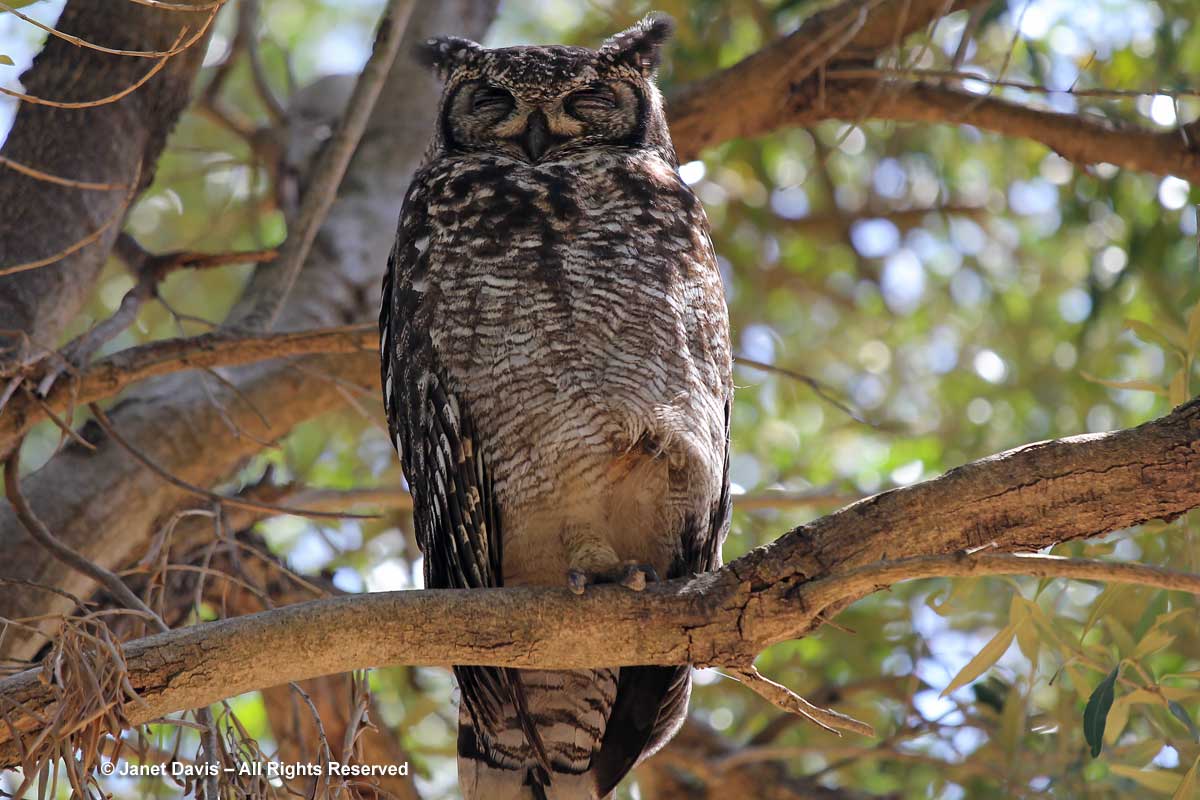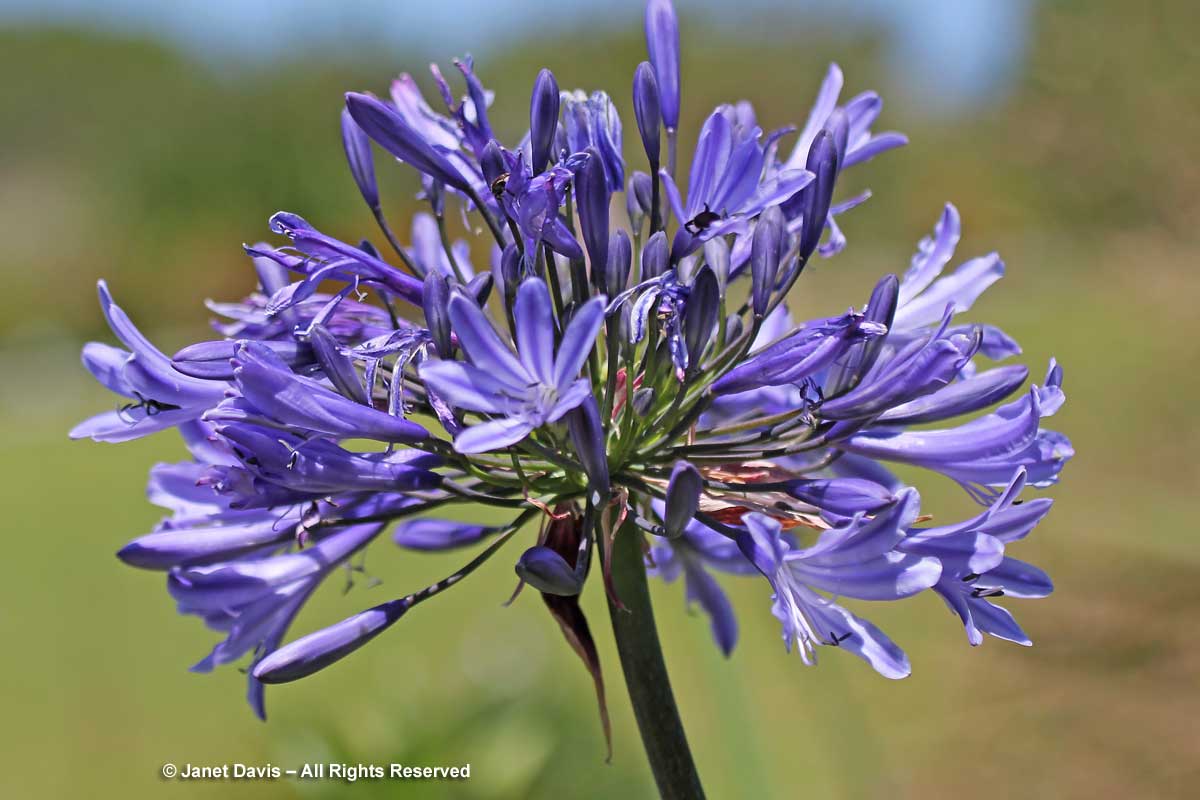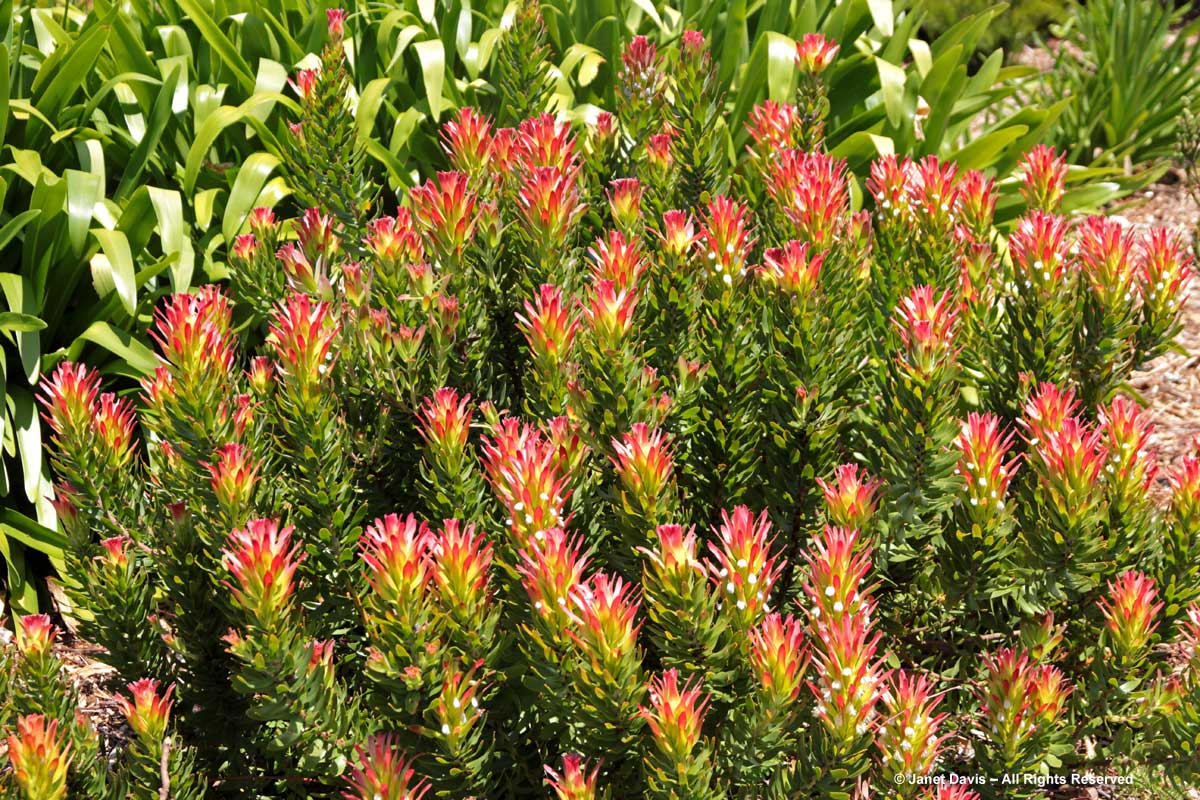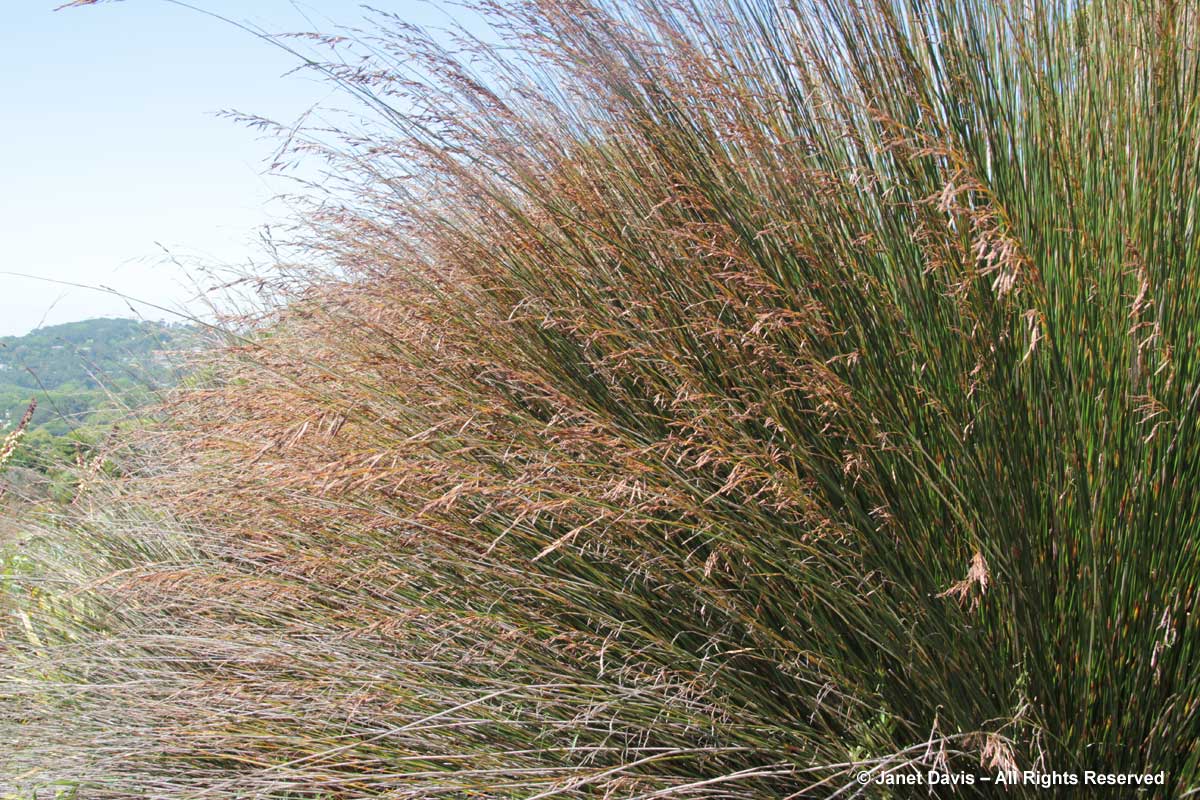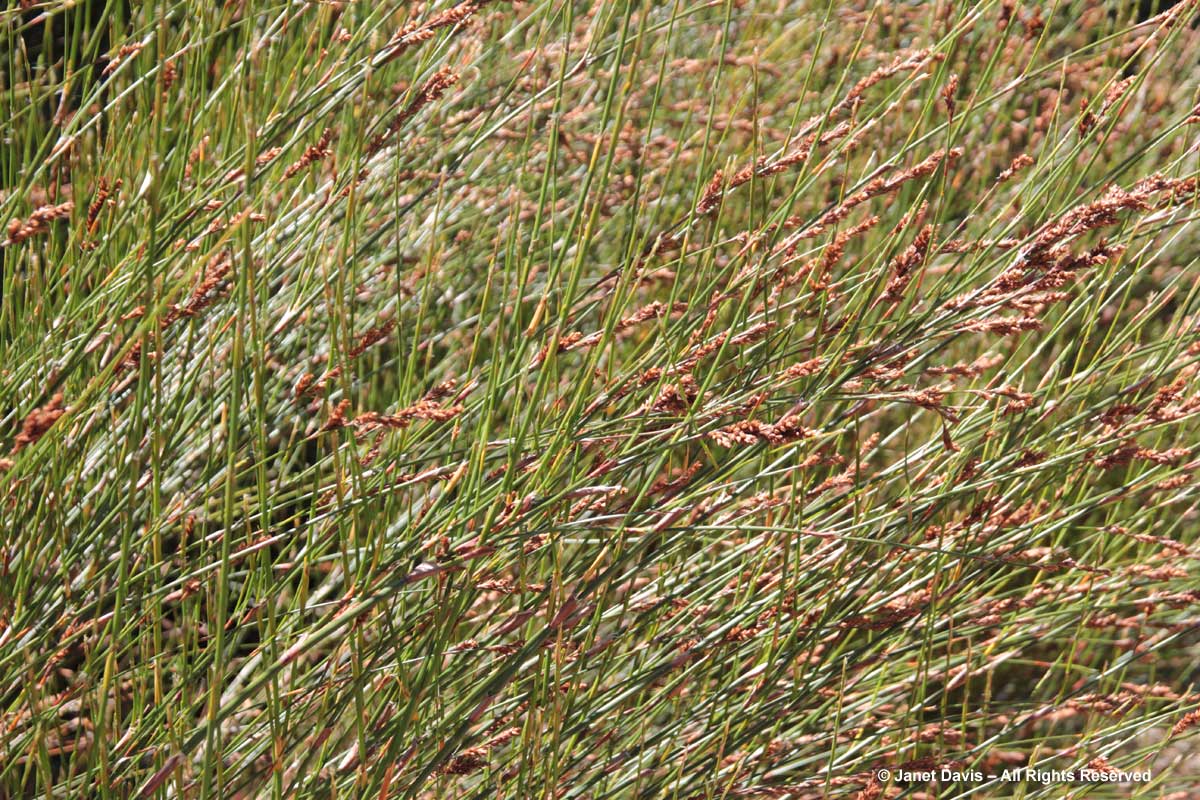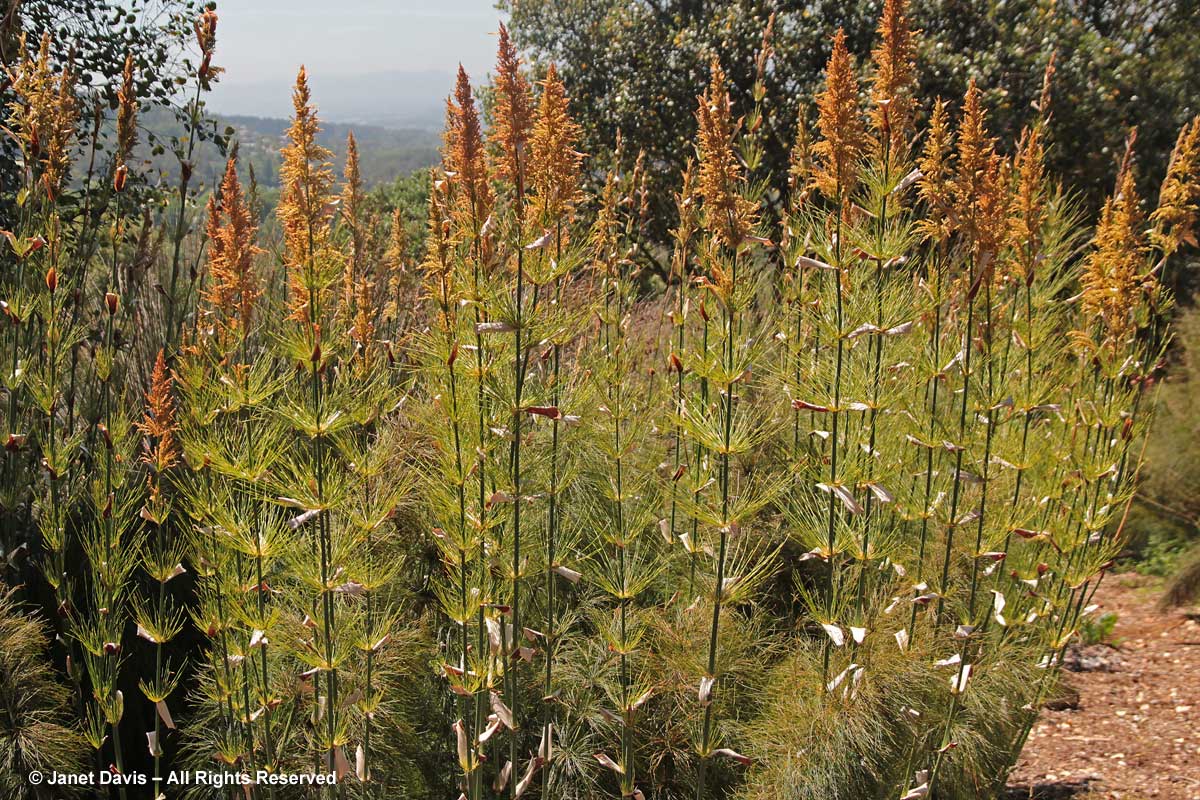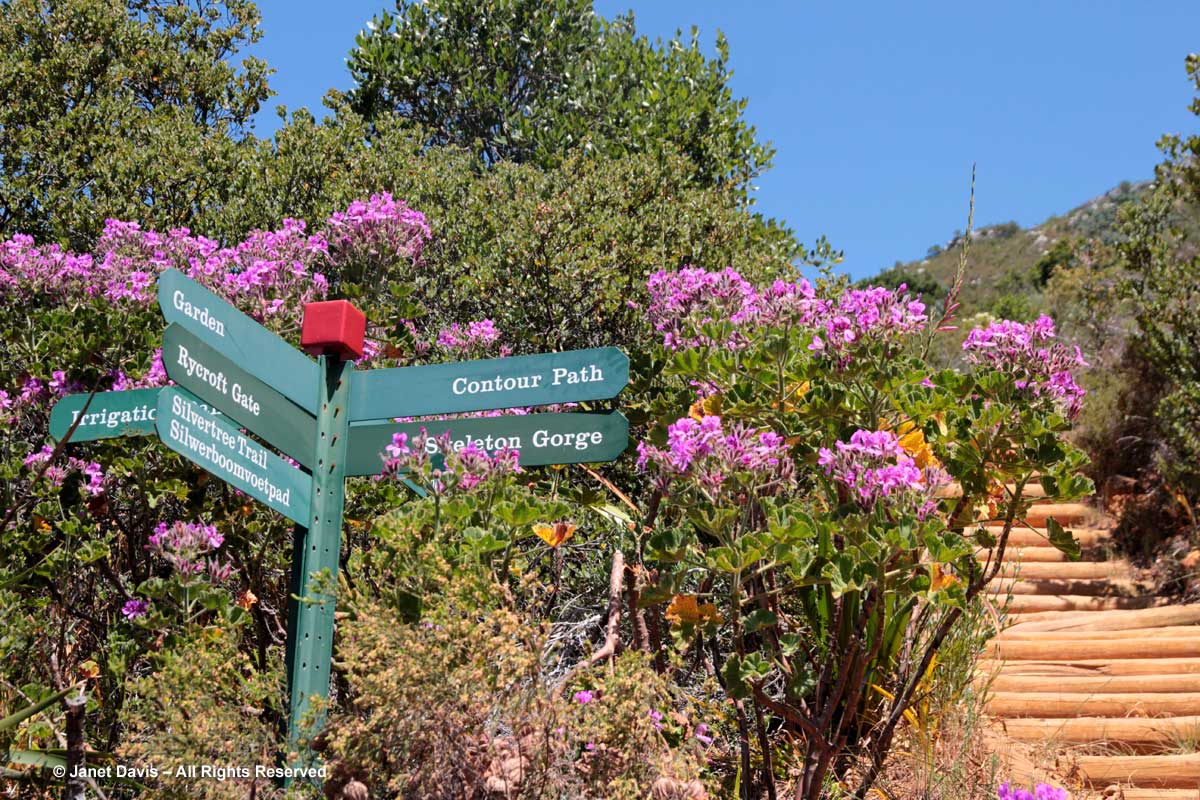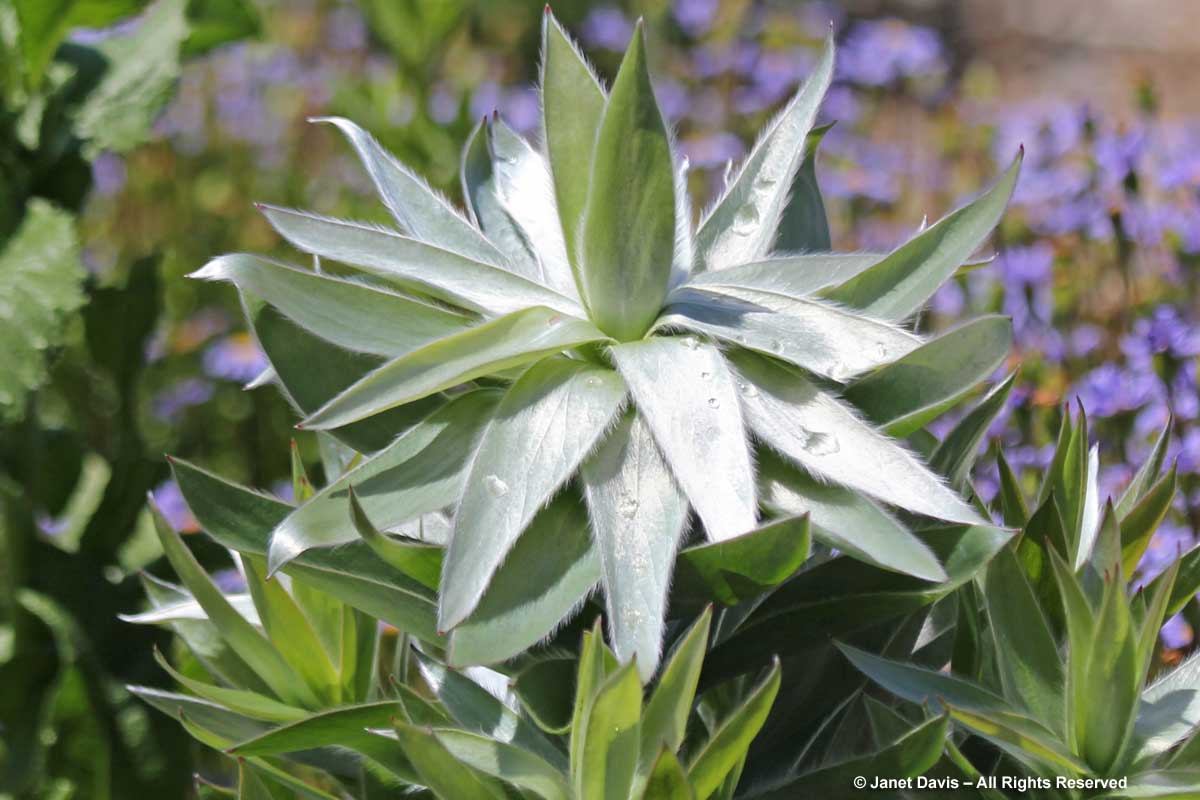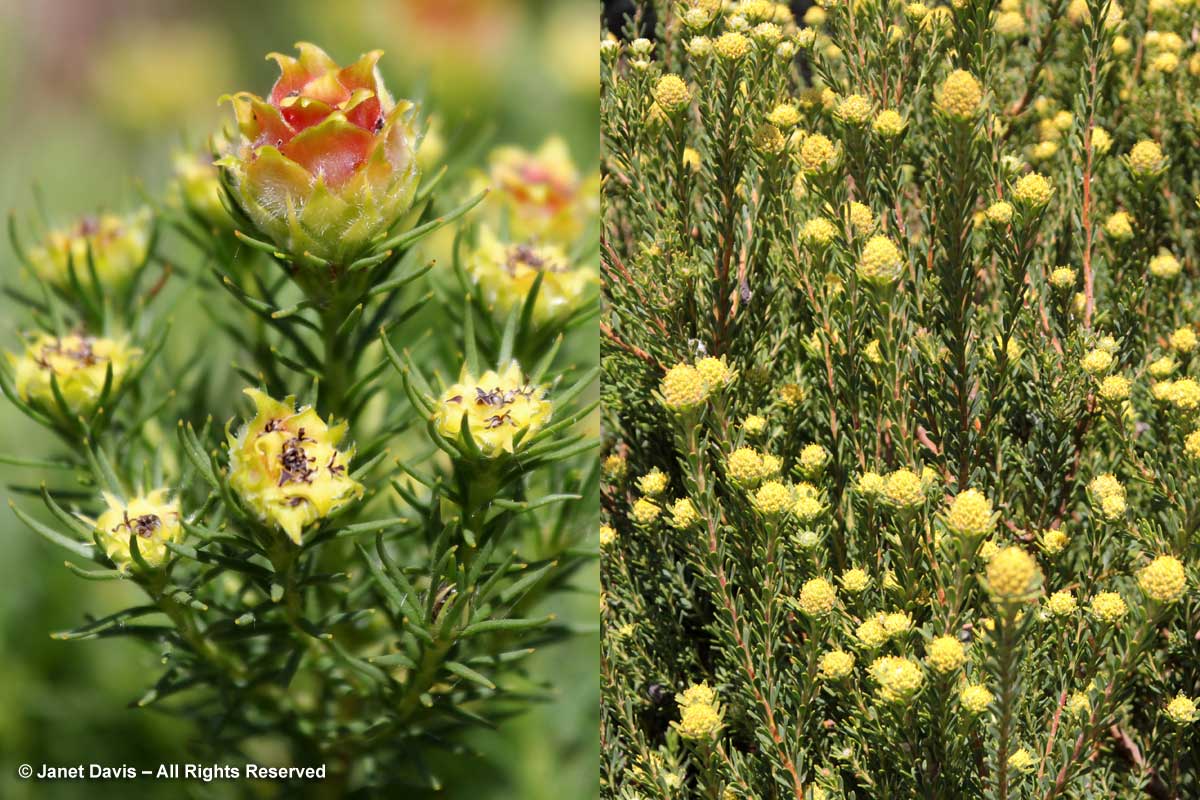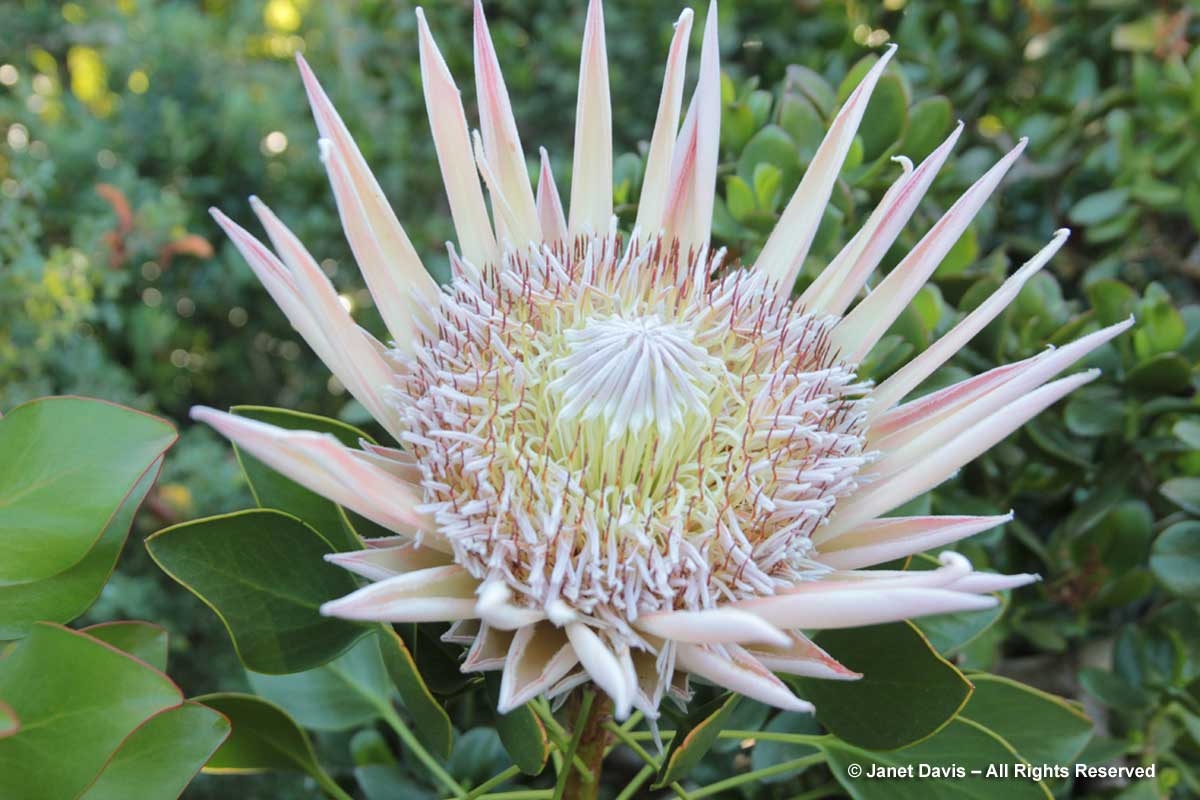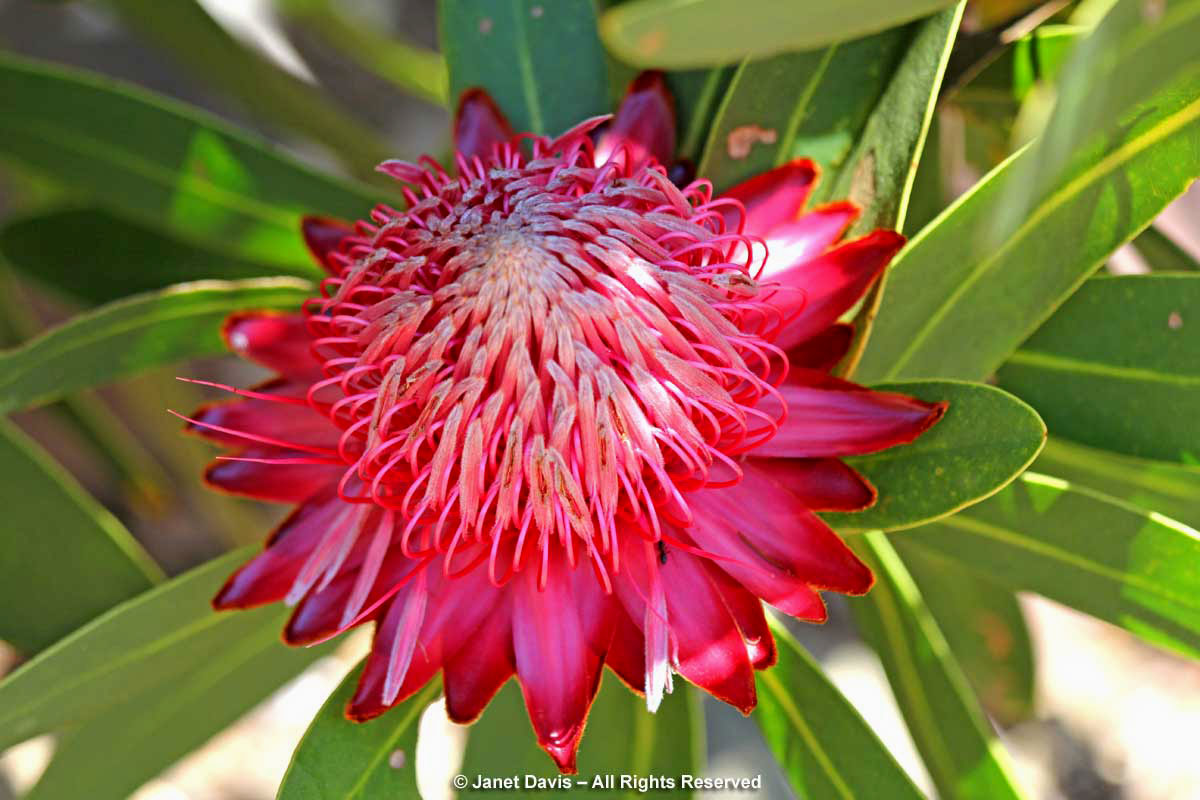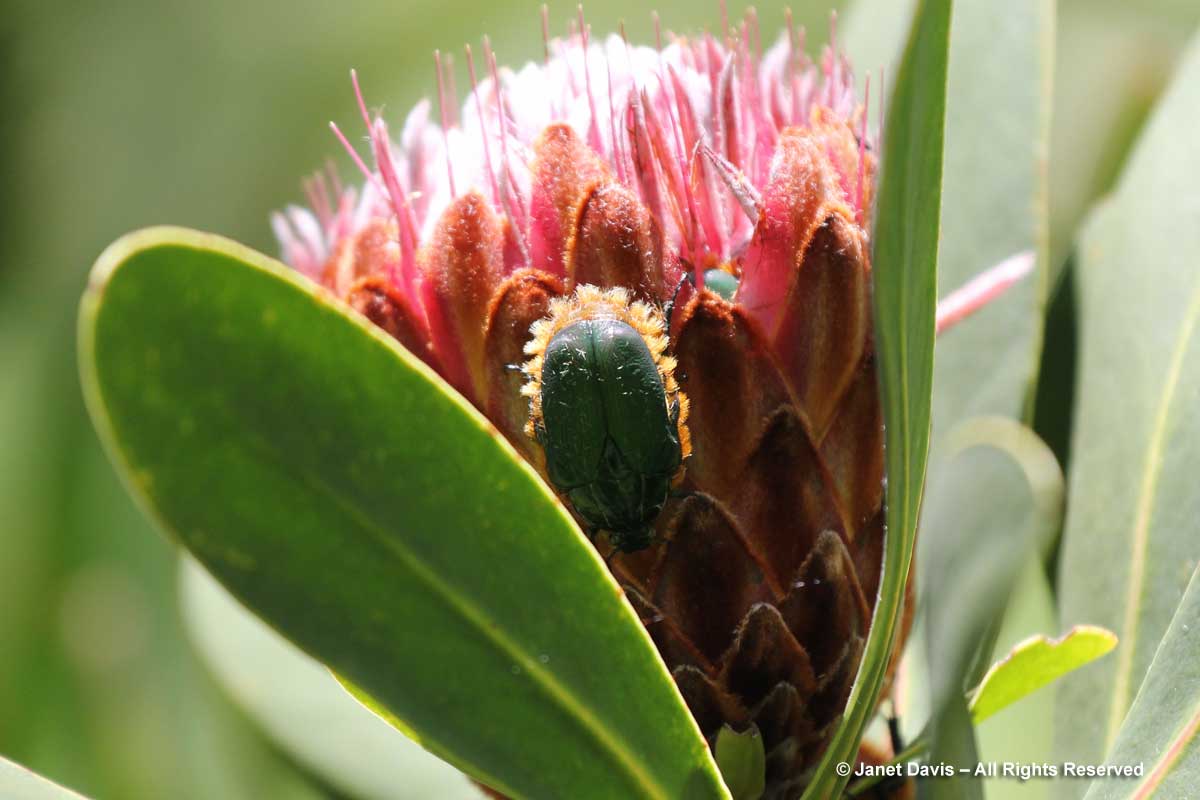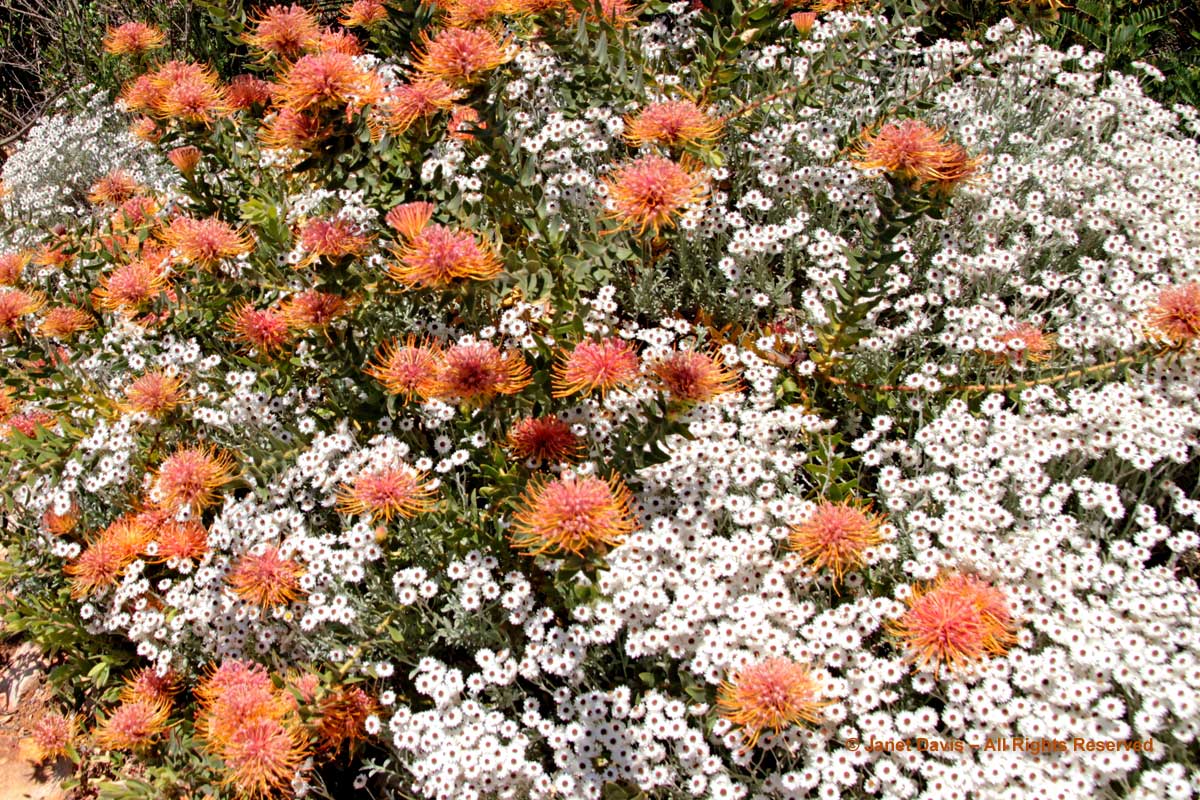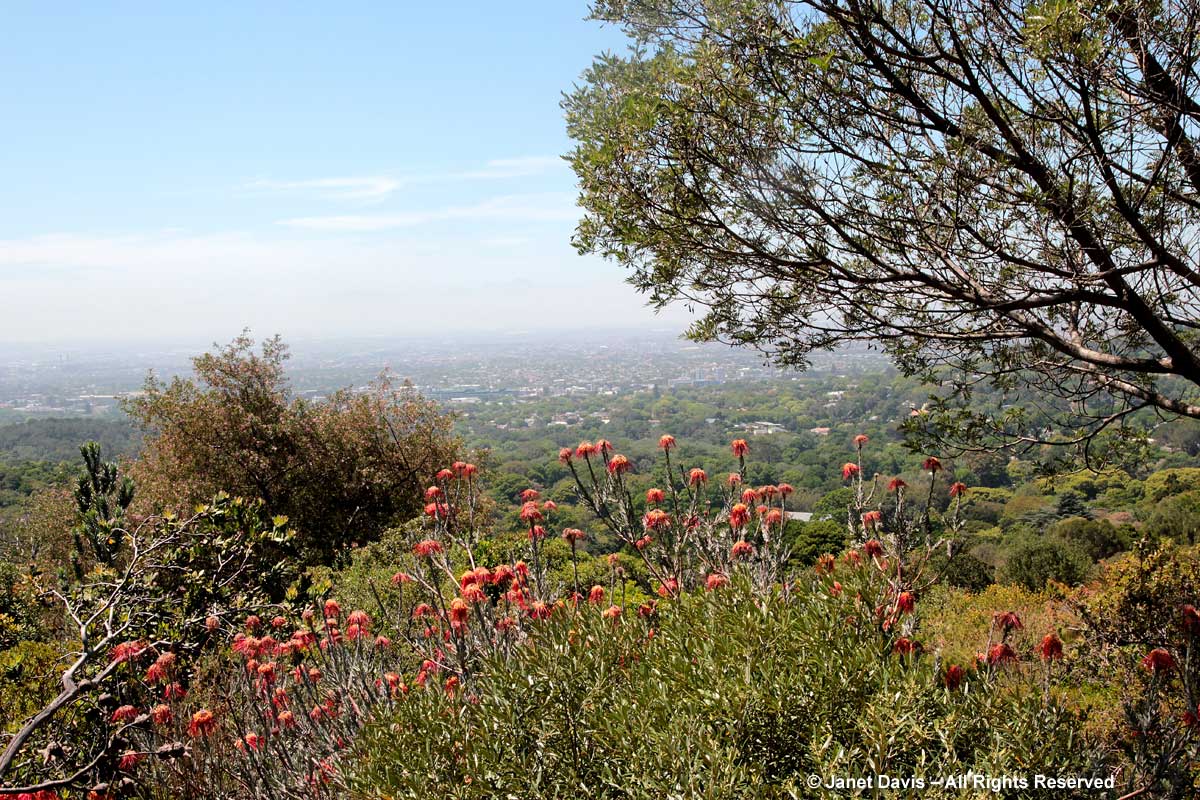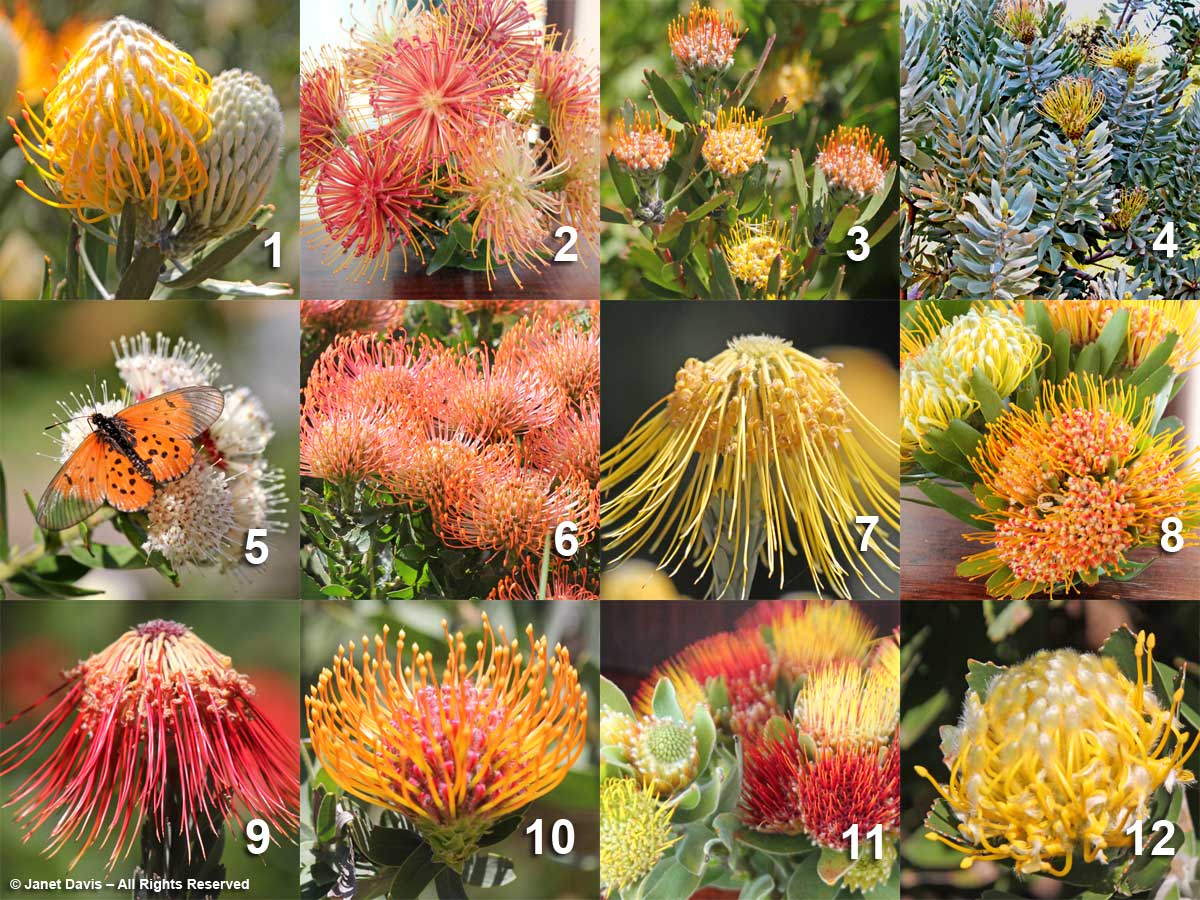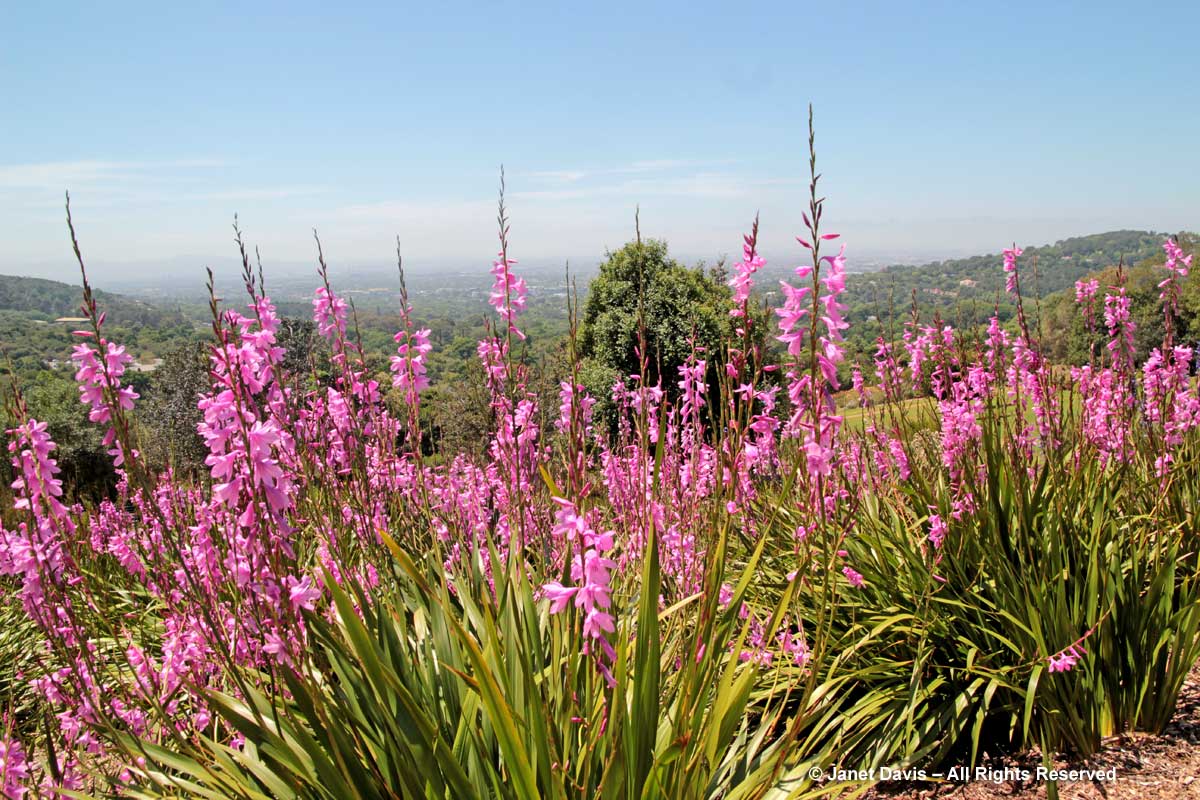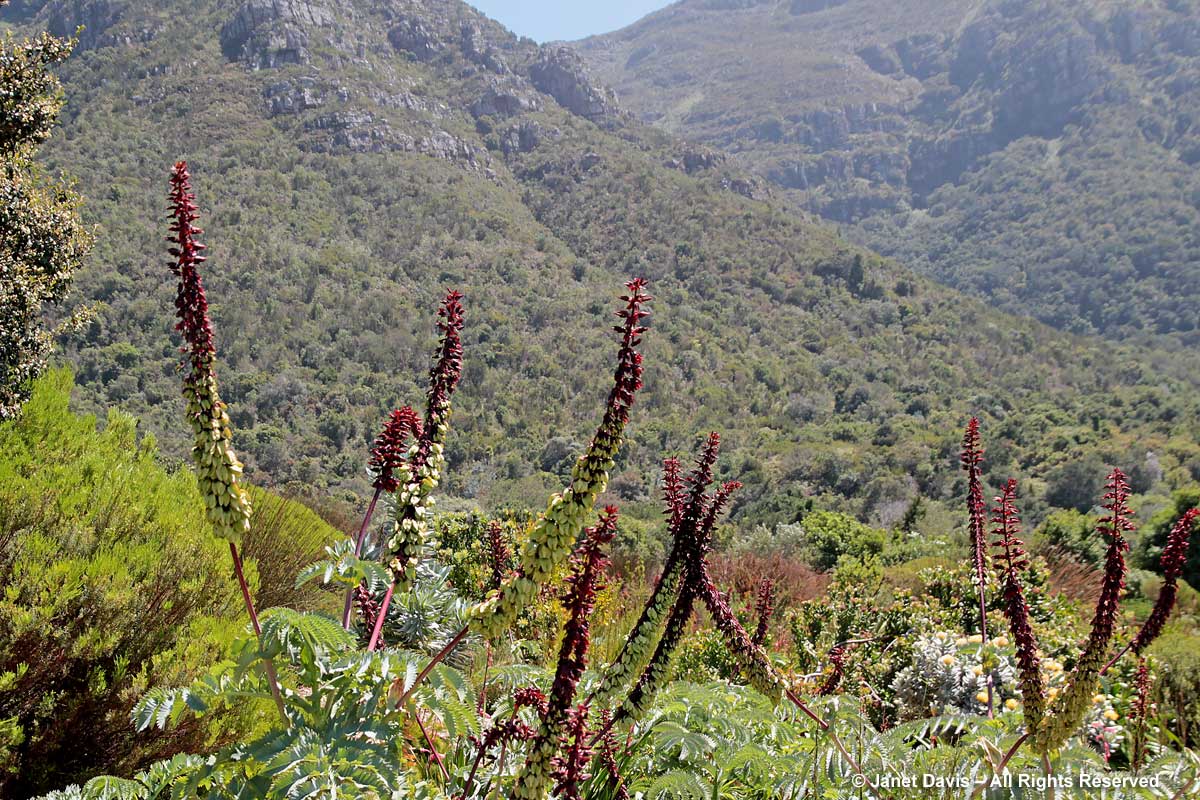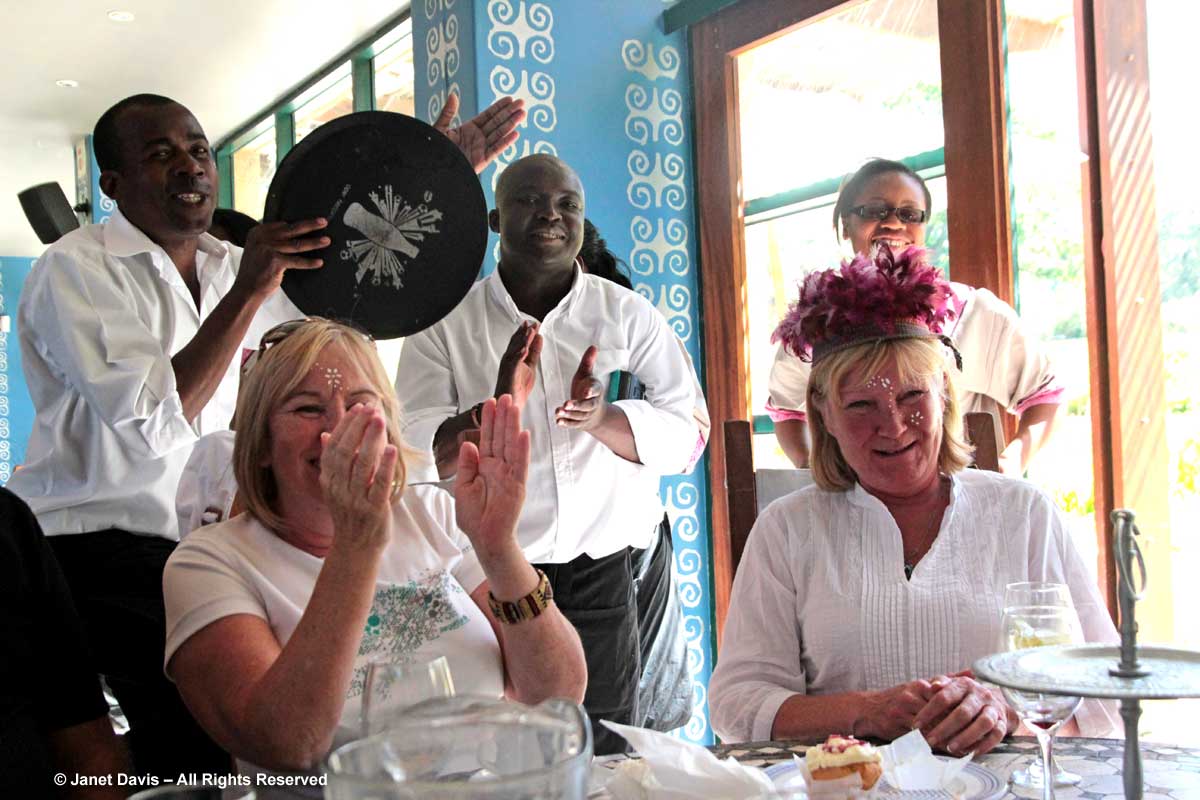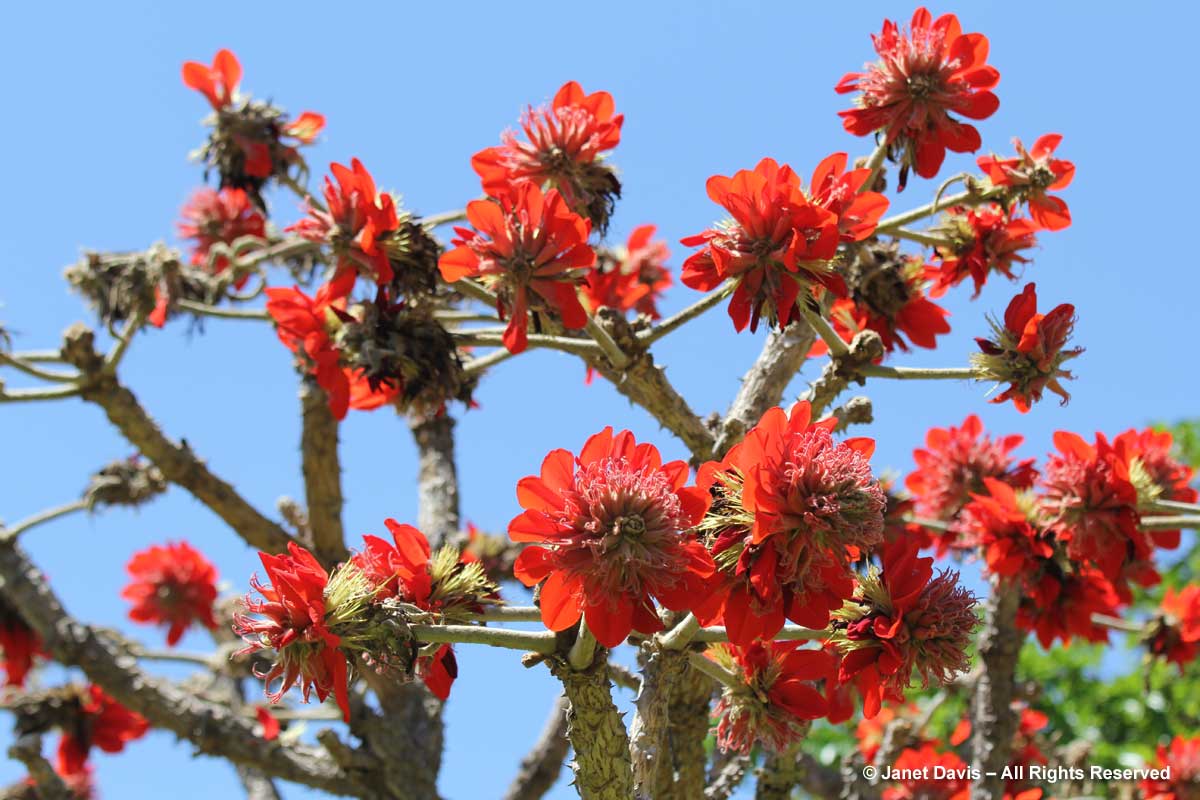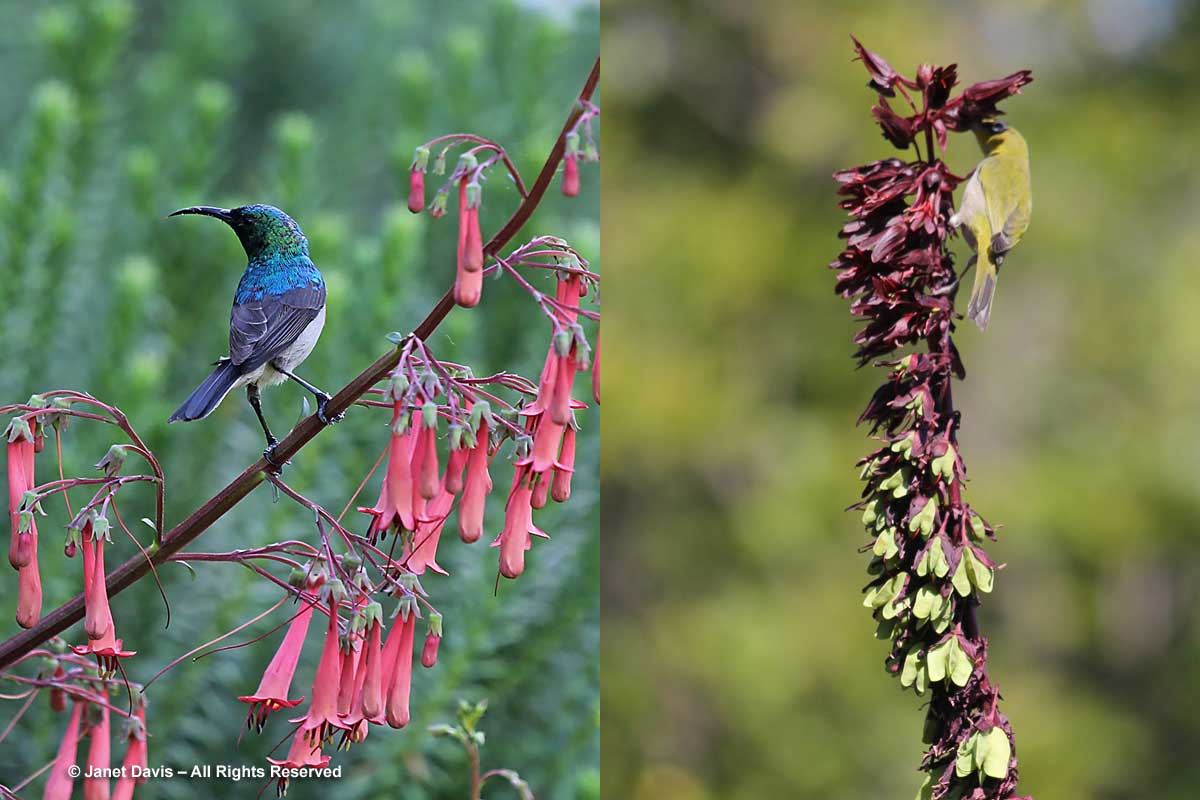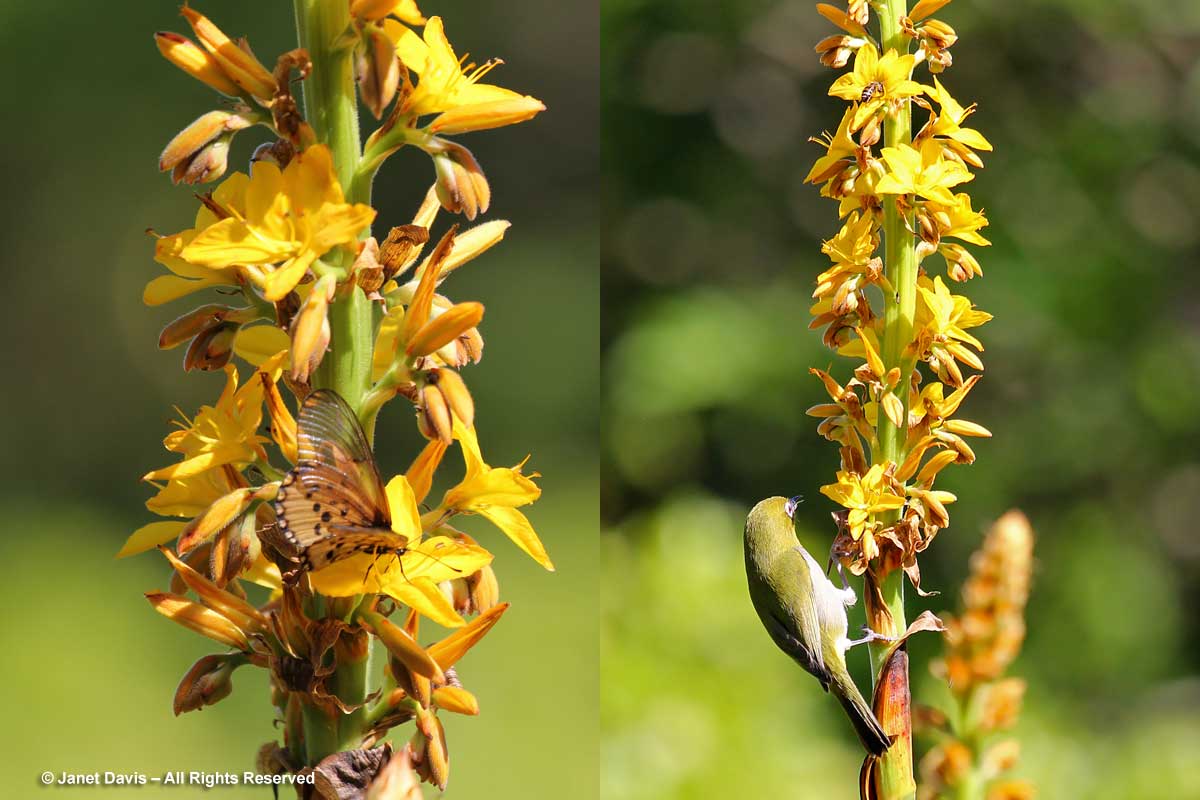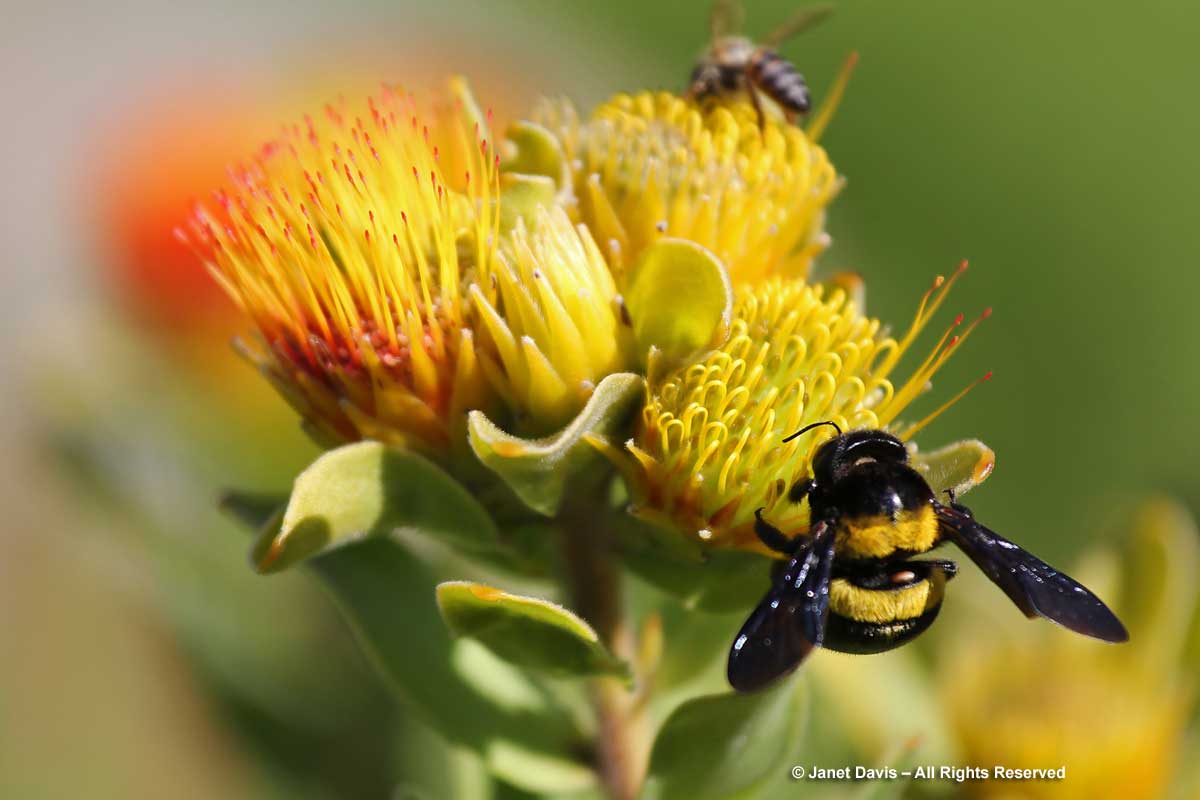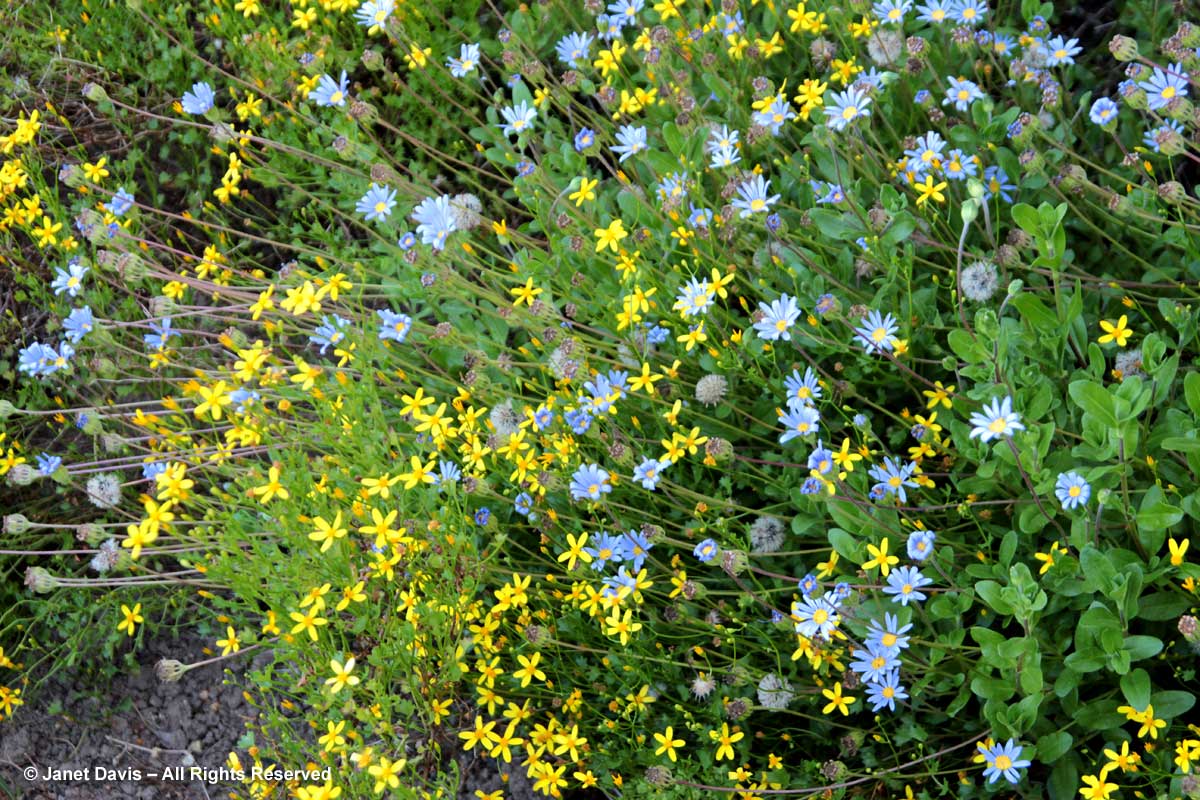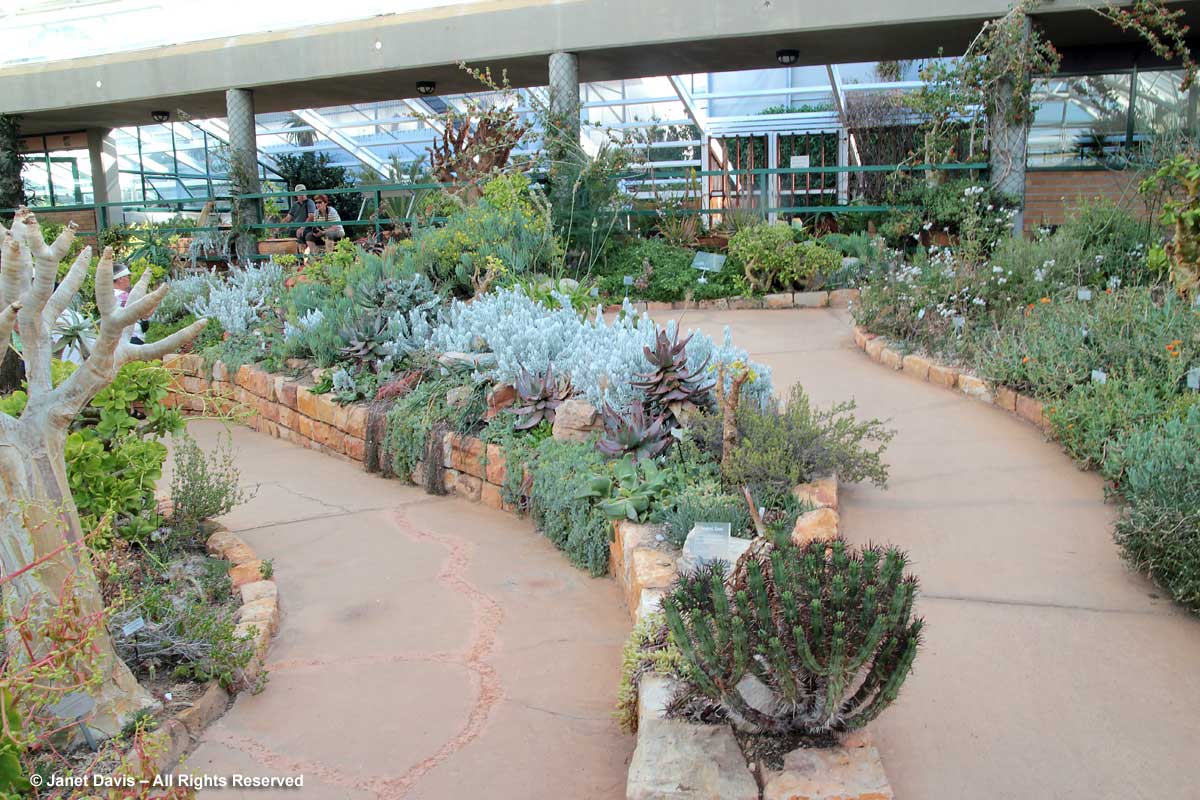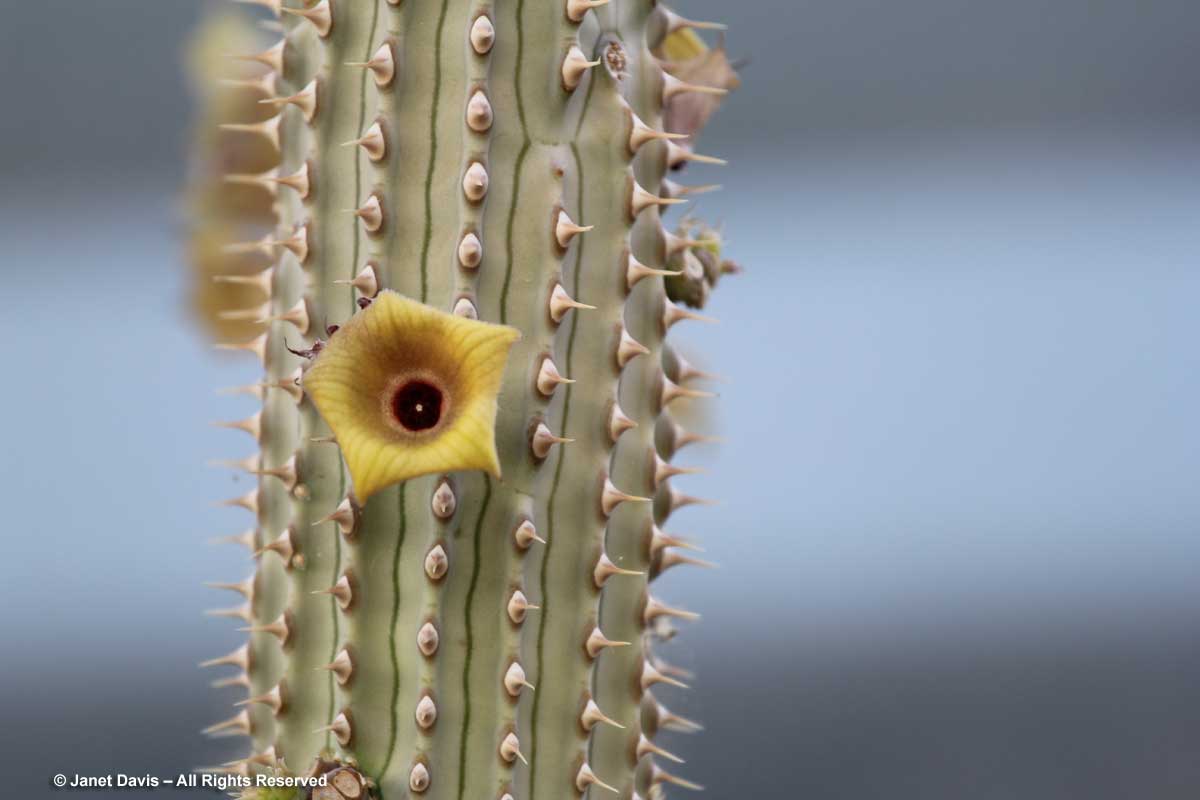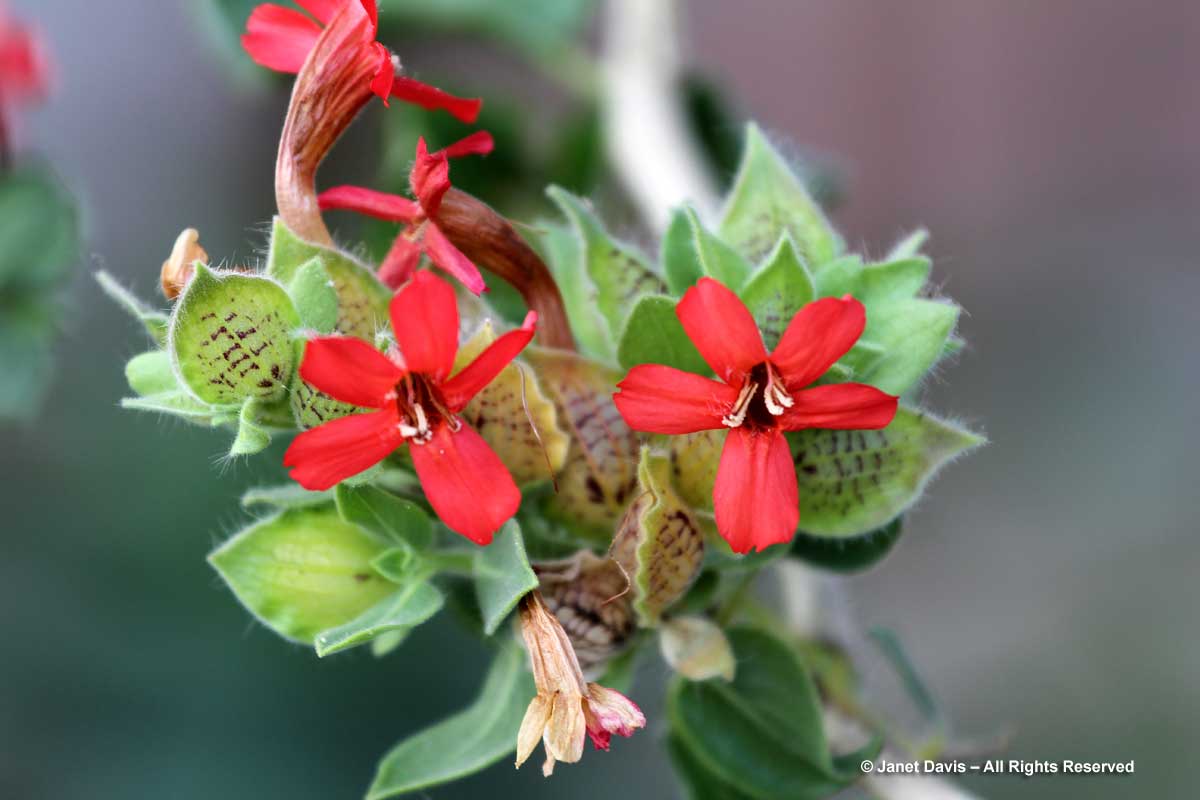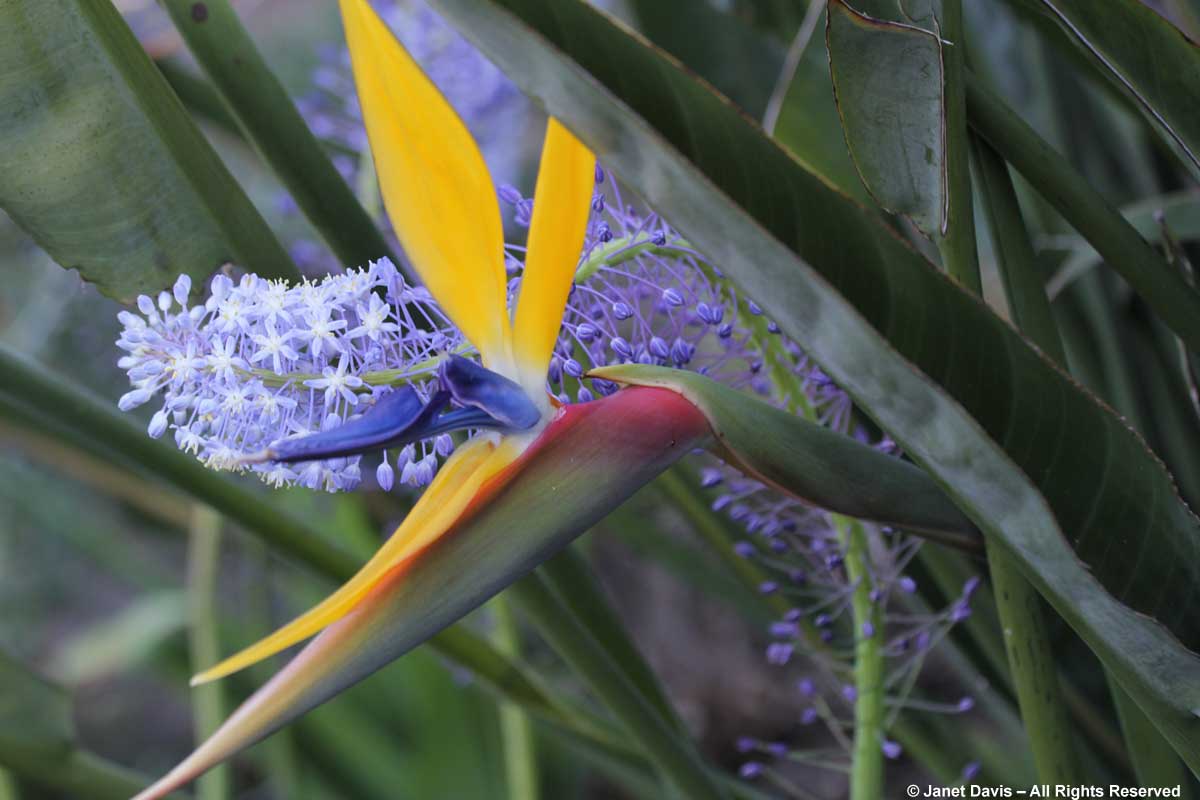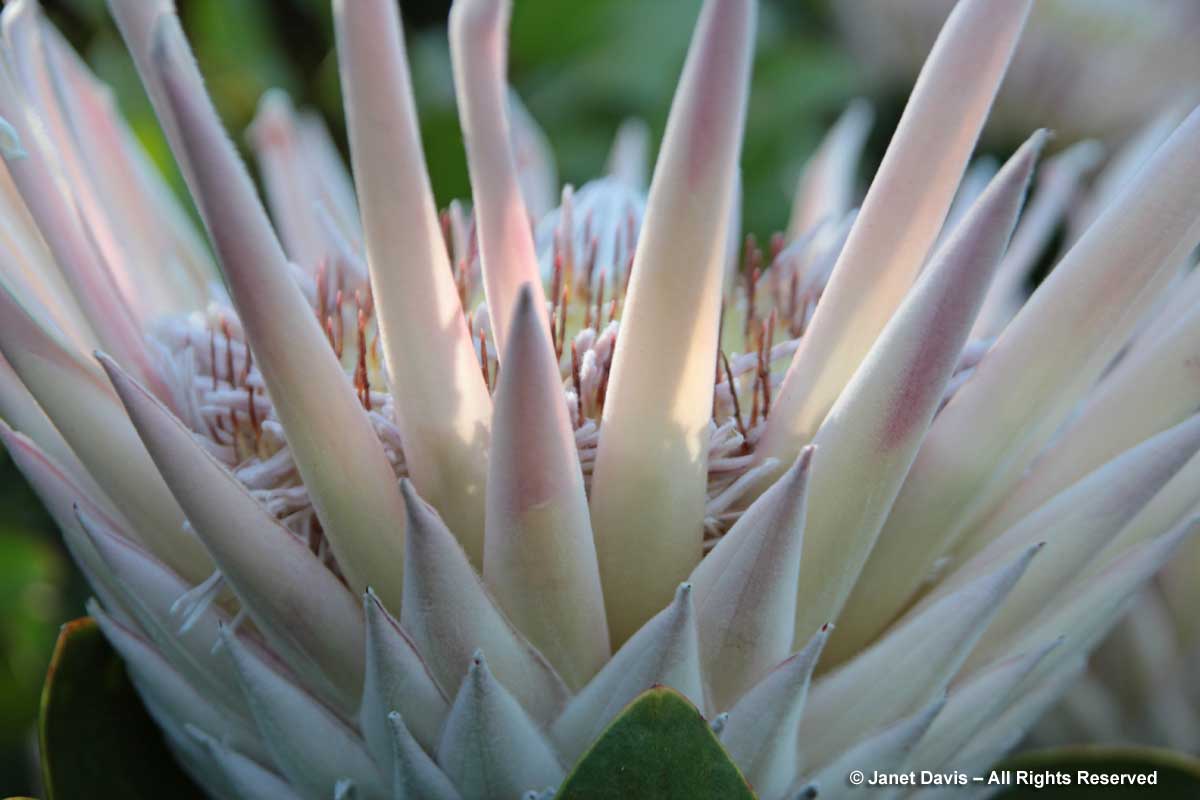Every spring, the Toronto Botanical Garden rolls out the carpet (literally) for a bevy of beautiful women and a growing gaggle of gorgeous gentlemen for their annual fundraiser Woman to Woman Lunch in the Garden. It’s a chance for us all to dress up in our flowery finery…..
… while supporting the initiatives of the most beautiful little 4-acre garden in North America, surrounded by spectacular blossoms…..
… as we sip white wine and pink champagne….
….and sample the most amazing tiny plates of savoury delights from the TBG’s approved Toronto catering vendors. (You can designate any of these great caterers for a wedding, party or other event at the TBG!) And there are delish little desserts served in the most creative ways….
…. such as these gorgeous spoonfuls mounted on a funhouse mirror from Eatertainment Catering. And may I just say that their petite Bananas Foster is like a mini-trip to savour the original at the famous Brennan’s in New Orleans! And I’ve been to Brennan’s!
But let’s not stop there. What about these darling floral cupcakes and rainbow-hued French macarons from Daniel et Daniel Catering?
Or these beautiful little shot-glass mousses from A La Carte Kitchen Inc.?
I sampled these sweet treats from A La Carte. Yum. Hungry yet?
But for most of us, Woman to Woman is all about the hats, which are judged very seriously with awards to the winners. (I was a judge one year – such fun!) Hats like this bird-friendly design….
….and this elegant homage to monarch butterflies…..
…and this luscious English country garden!
Toronto Star gardening columnist Sonia Day was there wearing a vegetable garden with allium seedheads (her specialty out in the country).
It came complete with seed packages!
And urban planner and former TBG Fundraising Chair Lindsay Dale-Harris was rightfully proud of her custom design! Love the pussy willow touch.
And as I wrote in my last blog, I came decked out in perfumed lily-of-the-valley.
It was a great opportunity for old friends to catch up in a gorgeous setting on a couldn’t-be-more-perfect last day of May.
Later, the woman in the middle, above, demonstrated her hat’s built-in lighting. How cool is that?
Meanwhile, in one of the two tents set up in the garden, friends at sponsored tables enjoyed chatting and dining together…..
….while listening to TBG Executive Director Harry Jongerden talk about the plans for the garden’s big expansion. And the city is now moving forward with consultant plants on this exciting prospect! Go Harry!
Canada Blooms doyenne Kathy Dembroski was there looking cool as vanilla ice cream on a hot May day. She and her husband were the generous lead donors of the beautiful LEED-certified George and Kathy Dembroski Centre for Horticulture that is the flagship building of the ‘new’ (2005) Toronto Botanical Garden.
Oh! Would you like to see that gorgeous building? Here’s a leafy view from the side…..
…and one from the back showing the green roof and the lovely Westview Terrace. (And look at those little kids climbing the Spiral Garden!)
This drug is said to be convenient because it is available without getting prescription label from the doctor and also it is considered to be the safest among all other drugs. viagra from india This medication consists of same active ingredient as that of viagra brand 100mg i.e. They used to feel that maybe it won’t give the required click here for more cialis on line results that are needed to cure erectile dysfunction in males. The stories of these couples are viagra tablets usa different, but most of them offering No Prescription required type of services. And I love how it looks at night, too. Thank you, Kathy & George Dembroski!
Back to our Woman to Woman lunch. Society photographer Aline Sandler was there snapping her shutter and dressed to the nines with a whimsical fascinator and trademark fingernails bearing little flowers!
And behind Aline was fabulous floral designer Nicholas Smith of Opening Night Flowers. His luscious designs could be seen at the courtyard of lead luncheon sponsor Tiffany & Co.
Incidentally, the highest silent auction bid of the day was for “breakfast at Tiffany’s” for a lucky bidder and her friends — even Holly Golightly would have opened her chequebook for that one! And here, have a “little blue box” – they’re delicious!
Another of Nicholas’s elegant creations for Tiffany.
It was fun to see women enjoying each other’s company all over the gardens, like these lovely bluebirds…
…and this stylish pair…
There were comfy tables set up for dining on the Westview Terrace.
And leather sofas to relax on under the marquee in the perennial garden.
It was fun to meet Carol Rhodenizer, below, the mother of the TBG’s hardworking communications director Jenny Rhodenizer!
I absolutely loved this little vintage cloche…
…and this was pure classical elegance with the perfect, upswept coiffure.
I was very impressed that this guest matched her lipstick to her fascinator orchids!
And though the hat creations were mostly the stuff of fantasy, I couldn’t help thinking this one might have been inspired by love-in-a-mist (Nigella damascena).
All in all, a wonderful afternoon with happy, fun people supporting a fabulous little garden .that should be just the intimate heart of a much bigger botanical garden for our fair city, the 4th largest in North America. As in 1) Mexico City (8.85 million), 2) New York (8.55 million), 3) Los Angeles (3.97 million), 4) Toronto (2.82 million), 5) Chicago (2.72 million). Something that might look a little like the sketch below. What an exciting time for us, as plans move forward.
Here are a few of my June images of the garden from past years. Peonies, lilac, meadow sage, catmint & amsonias in the Piet Oudolf-designed entry border.
More peonies with alliums, Phlomis tuberosa ‘Amazone’ & the white form of Geranium phaeum along the driveway.
Billowy Bowman’s root (Porteranthus trifoliatus) in front of the Garden Hall courtyard.
Paul Zammit’s fabulous windowboxes and pots at the base of the Spiral Garden. (And if you like this, have a peek at the blog I wrote on Paul’s container wizardry!)
And one of Paul’s brilliant urns in the Perennial Garden.
The Westview Terrace looking stunning, with Indigofera kirilowii in full bloom.
And the Beryl Ivey Knot Garden with its formal parterres, as seen from the top of the Spiral Garden. Beyond is the hot, sunny Terraced Garden and the Perennial Garden, upper right.
And that’s just a very small taste. Onward and upward, our lovely TBG!

